2-Week Argentina Itinerary: The Best Route for First-Timers

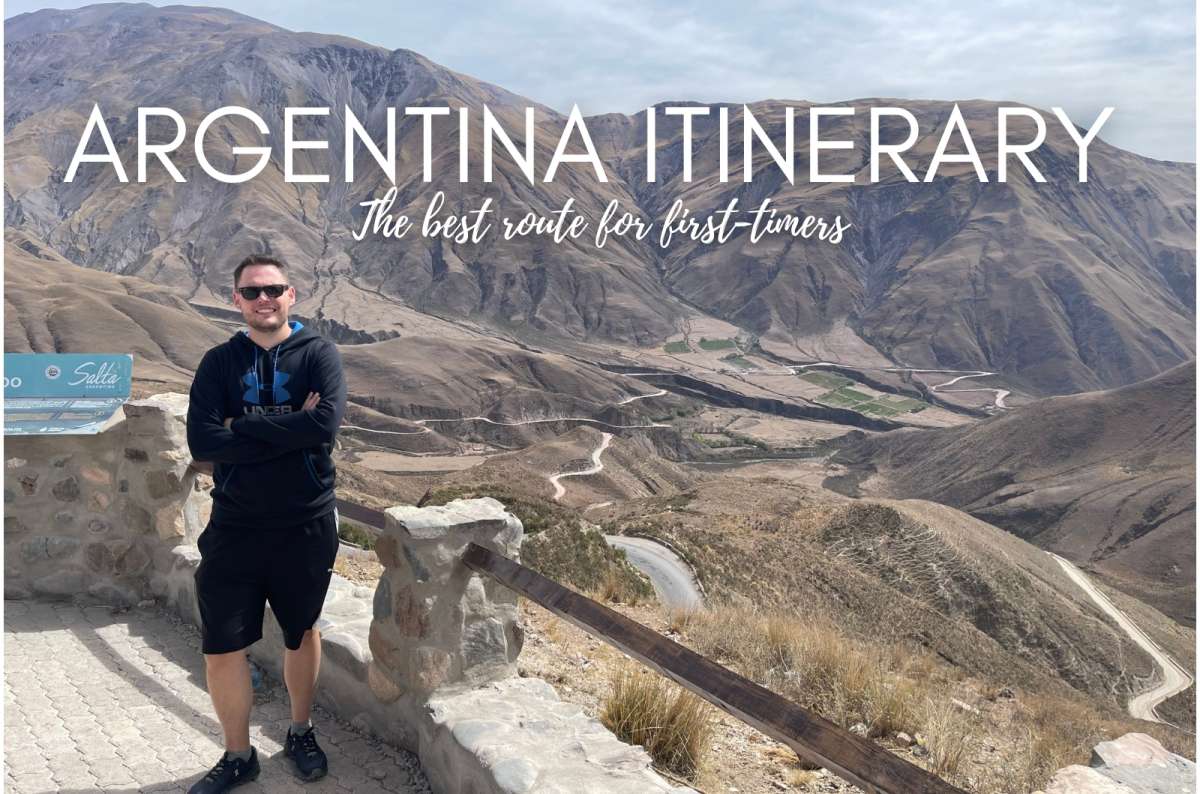
I had been looking forward to visiting Argentina for a long, long time. But something always changed my plans—first civil unrest, then the pandemic hit. But eventually, I got my chance to visit my most-desired country: Argentina.
Since then, I’ve spent multiple vacations there, read all the guides out there, and researched every article in both English and Spanish (yes, I am a bit of a planning nut). I did all this to prepare the best possible two-week itinerary in Argentina.
After thoroughly testing it with my own experience (there was no blood, but plenty of sweat), I can now give you the best tips and the ultimate plan.
Here is the most comprehensive itinerary, designed to ensure you see the very best Argentina has to offer. It’s organized in a logical order, taking into account flight schedules and the necessity of renting a car in each location—trust me on this one, it's almost impossible to see everything without one.
You’ll start with the stunning Iguazu Falls, then venture to the deserts, salt flats, and mountains of Salta. Afterward, you’ll fly down south to experience the majestic beauty of Patagonia.

What You Will See in 2 Weeks in Argentina
Day 0—Arrival in Buenos Aires + Blue Dollar Tips
Day 1—Explore Salta—Argentinas Most Authentic City
Day 2—Cuesto del Obispo, Los Cardones & Quebradas
Day 3—Rainbow Mountains & Inca Ruins in Jujuy
Day 4—Jungle Hiking in Calilegua National Park
Day 5—Salinas Grandes + Flight to Iguazu
Day 6—Iguazú Falls—Argentina Side
Day 7—Iguazú Falls—Brazil side + Helicopter Ride
Day 8—Fly to Patagonia & Walk the Perito Moreno Glacier
Day 9—Ice Climbing & Kayaking Perito Moreno
Day 10—Hiking to Laguna Torre in El Chaltén
Day 11—Epic Laguna de los Tres Hike to Cerro Fitz Roy
Day 12—“Hidden Gem Hike” at Laguna El Diablo + Travel to Ushuaia
Day 13—Explore Ushuaia—The end of The World
Day 14—Be Amazed by Glaciers One Last time
Day 15—A Quick Walkthrough Buenos Aires
Fly home
Sometimes, all you need to do is take the first step... I've filtered out the best hotels in Salta for you
Save it for yourself to come back to later, or share with your friends on social media!

We couldn’t get enough of the landscapes in Salta and Jujuy!
Don't forget to read our other itineraries for Argentina:
- 7 day Argentina itinerary for Patagonia
- Buenos Aires in one day
- 6 day itinerary for Salta and Jujuy
- 2 day itinerary for Iguazu Falls
Day 0—Arrival in Buenos Aires + Blue Dollar Tips
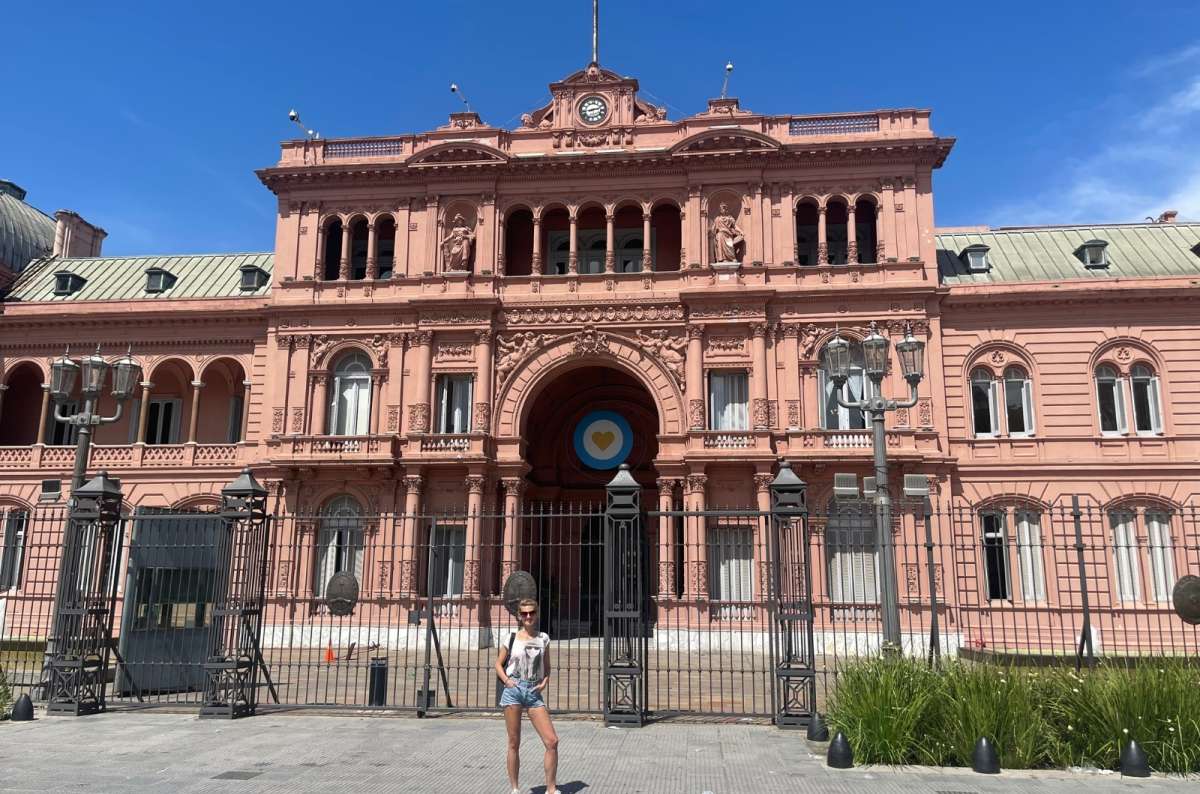
Hello Buenos Aires!
- Main sites visited on day 0: Ezeiza (EZE) Airport, hotel
- Hotel recommendations—book for 2 nights: Palladio Hotel Buenos Aires - MGallery
You’ll likely land at Buenos Aires International Airport (Ezeiza, EZE) in the evening. After a long flight, the last thing you want is to figure out how to navigate the city when you’re half-asleep. My advice? Stay near the airport for the first night.
After hours of obsessive research, I picked the nearby Holiday Inn—a decent mid-range hotel just 15 minutes from the terminal. It’s well-prepared for late-night arrivals and runs a 24/7 white-and-green shuttle bus every 20–30 minutes.
No need to mess with sketchy taxis or stress about exchanging money at 11 p.m.—just crash, sleep, and start fresh in the morning.
Pro Tip: How to Handle the Blue Dollar Exchange Rate

Argentine pesos
Let’s talk about the blue dollar—Argentina’s unofficial exchange rate that sounds shady but isn’t. It was honestly the biggest planning headache I had. But here’s the secret: just pay with your Visa or MasterCard, and you’ll automatically get the blue dollar rate without lifting a finger.
Card providers couldn’t let the "Los Arbolitos" (black market money exchangers) hog all the margins, so they’ve made it easy for you. By using your card, you get about 2-3x better exchange rates than the official bank rate.
This turns Argentina from a seemingly expensive destination into a surprisingly affordable one. So, skip the stress of hunting down cash exchanges and let your card do the work.
Next Morning: Off to Salta
Wake up early, hop on the hotel shuttle, and head back to the airport for your domestic flight to Salta. You’ll land around 8 a.m., and picking up a rental car at Salta Airport is quick and easy.
I booked mine through Rentalcars, but any other service will work just fine. The rental agents actually spoke English, and you'll find most of the major international franchises like Avis and Hertz there.
Just a heads-up: you might get charged a bit extra when returning the car if it’s particularly dirty. Trust me, it’s almost inevitable—Salta is surrounded by dusty and dirt roads that will leave your car looking like you’ve just returned from a rally race. But hey, that’s part of the adventure!
Day 1—Explore Salta—Argentinas Most Authentic City
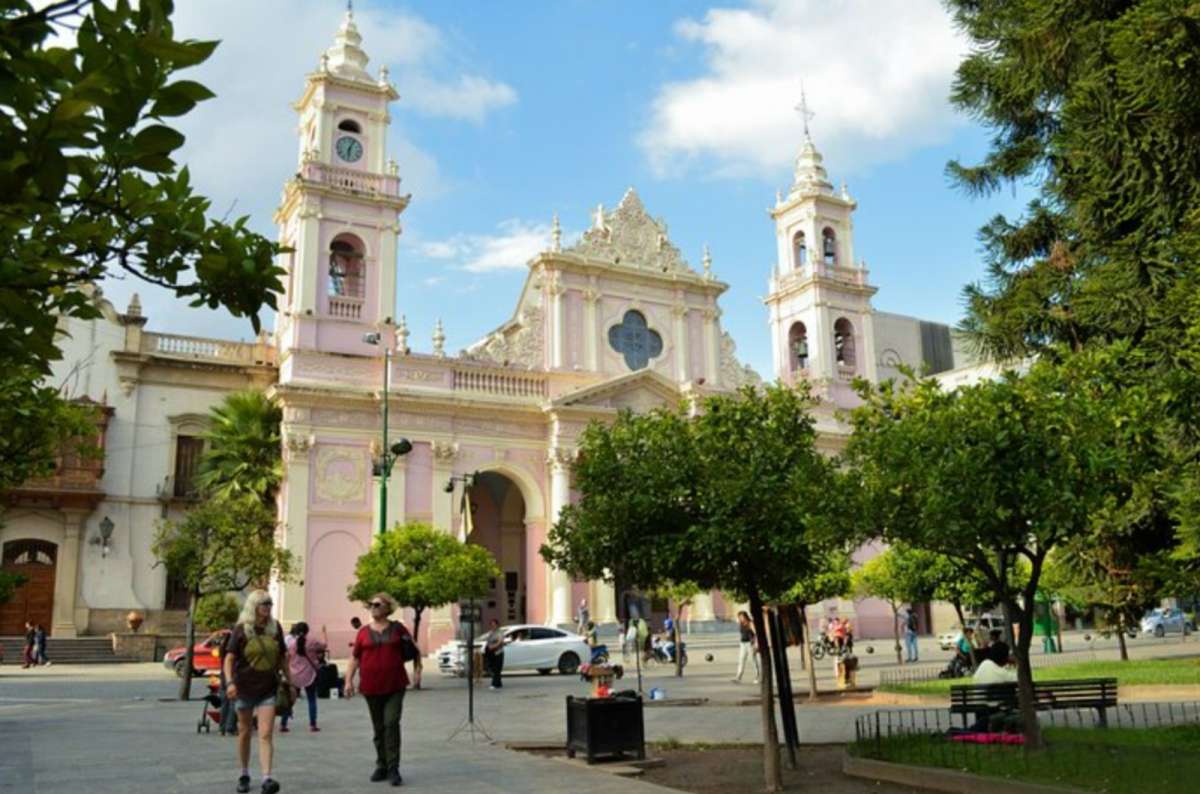
Salta Cathedral
- Main sites visited on day 1: Avenida San Martín, San Bernardo Hill, MAAM, Basilicas and conventos.
- Hotel recommendations: MG Design Hotel Boutique
- Further reading: 11 amazing Things to do in Salta
- Dinner pick: La Salteñeria Empanadas—the second-best restaurant in Argentina for me
I was kind of looking forward to seeing Salta. At first glance, I wasn't impressed; it felt like just a base to explore the natural wonders nearby. But then again, I’ve loved colonial cities elsewhere in the Americas, so I decided to give it a try. And it kind of worked. Salta delivers a true Argentinian colonial vibe. There are some great viewpoints, excellent restaurants, and a very, very good museum.
Fun tip: Watch where you're going. I got the dreaded bloody knee because I stumbled into a hole in the road... on the main crosswalk in the main square. I honestly wasn't expecting a hole in the ground there. Then, I fell there again about 2 hours later. My knee sure wasn't laughing, but my girlfriend was.
Parking Tip in Salta
Don’t stress about city parking. There are plenty of small, paid parking areas—just look for signs with an “E” (short for estacionamiento). I recommend the cozy little garden-style or in-house garages—they’re cheap and secure, and yes, you’ll need to pay in cash.
Stop 1: Avenída San Martín—First Feel of Argentina
- Time spent here: up to 60 minutes
- Opening hours: 24/7
- Price: free
After parking the car, take a stroll down the main street, Avenida San Martín. This is your chance to see all the old colonial buildings and, more importantly, to soak in the true essence of Argentina. The street is a lively blend of restaurants, shops, cafés, and colorful architecture that perfectly captures the local vibe.
At one end of Avenida San Martín, you'll reach Plaza de 9 de Julio, the city’s central square and best spot to change your dollars into pesos.
Dollar Blue Exchange Rate
Bring a backpack—seriously, The largest banknote in Argentina is 5,000 ARS, so when you exchange USD 500–1,500, you'll walk away looking like you just robbed a Monopoly bank.
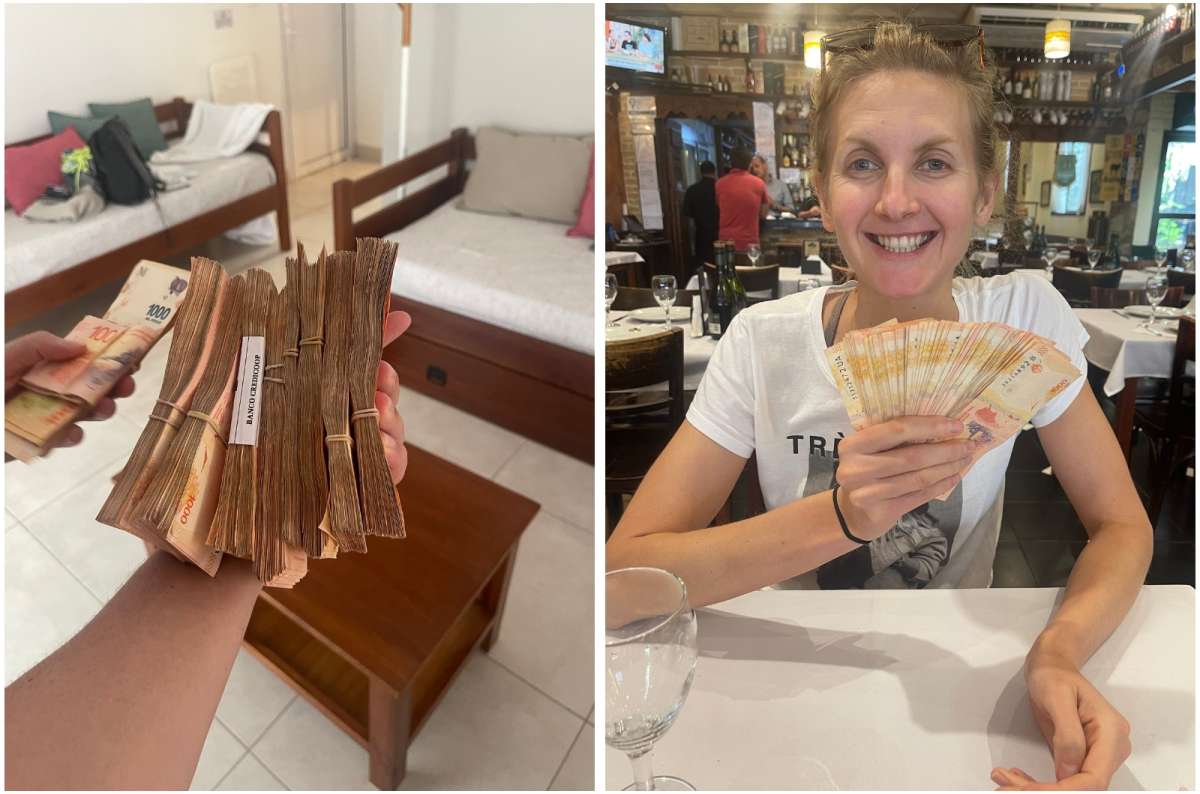
When inflation turns you into a millionaire—welcome to Argentina
How to exchange money: Head to the colonnade of the main square, and “Los Arbolitos” (money changers) will approach you with their offers. Rates are similar between them, but it doesn’t hurt to compare a few. We got the best exchange rate in all of Argentina right here.
If you’d rather avoid cash, paying with Visa or MasterCard still gives you the blue dollar rate, just slightly worse than cash but way better than the official rate. Still, you’ll definitely need some cash—not all places accept cards.
Stop 2: MAAM—Museum of High Altitude Archeology
- Time spent here: up to 60 minutes
- Opening hours: 11 am to 6.30 pm
- Price: 600 ARS (for international tourists)
Now that you’ve got the lay of the land, it’s time to dive into Salta’s more mysterious side at the Museum of High Altitude Archaeology (MAAM).
This isn’t your run-of-the-mill museum; it’s home to some of the world’s most famous frozen mummies. Yeah, you heard that right—frozen mummies. Meet the Children of Llullaillaco, three Incan kids who were sacrificed over 500 years ago and left to freeze on a mountaintop.
They were discovered in near-perfect condition in 1999, and now you get to see them up close.
The museum itself felt extremely morbid to me, adding to the slightly eerie vibe. QR codes on the floor let you dive into fun facts about the Incan civilization, so have your phone ready.
This place is a perfect mix of creepy and cool. It was a bit of deja vue for me as I already saw Incan mummies at the museum in Cusco (Peru), which I loved.
Stop 3: Cerro San Bernardo—The Best View in Salta
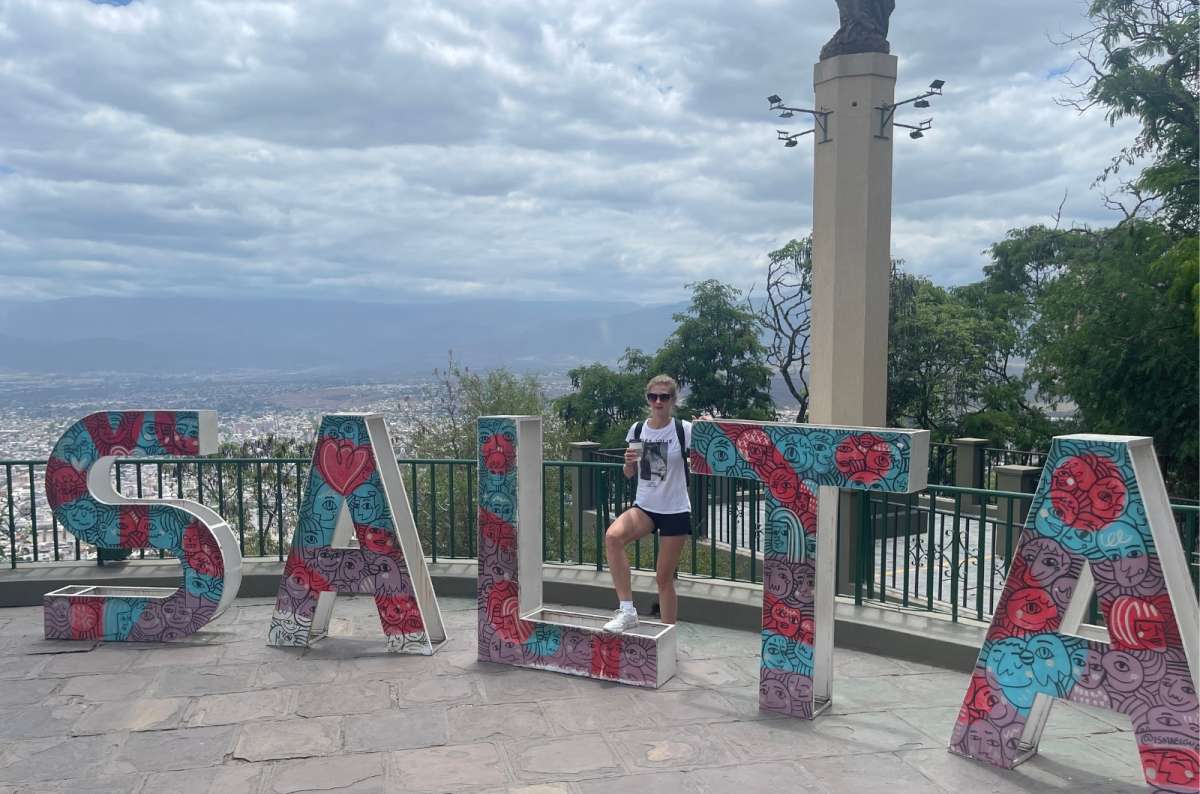
Soaking up the views @ Cerro San Bernardo
- Time spent here: up to 2 hours
- Opening hours: 24/7
- Price: 1200 ARS (for cable car)
Drive for a few minutes to the Teleférico—just pop that into Google Maps. You can park directly behind the building.
Want views? You’ll get views. Cerro San Bernardo is the best viewpoint in Salta, overlooking the entire city and the surrounding Andean foothills. You can either walk up the 1,070-step stairway (I did… and regretted it by step 712) or take the Teleférico cable car for a more relaxed climb.
At the top, you’ll find peaceful gardens, fountains, panoramic views, and maybe a sweaty local runner or two. It’s a great place to chill, stretch your legs, and question why you didn’t just take the cable car in the first place.
Getting to Cerro San Bernardo
- Cable car price: 3,000 ARS return or 2,000 one-way
- Stair path: Free, but steep—bring water and wear proper shoes
Pro tip: Also, it's a bit cooler up there than in the city, so consider bringing a jacket.
Stop 4: Salta’s Churches, Convents & Colonial Squares
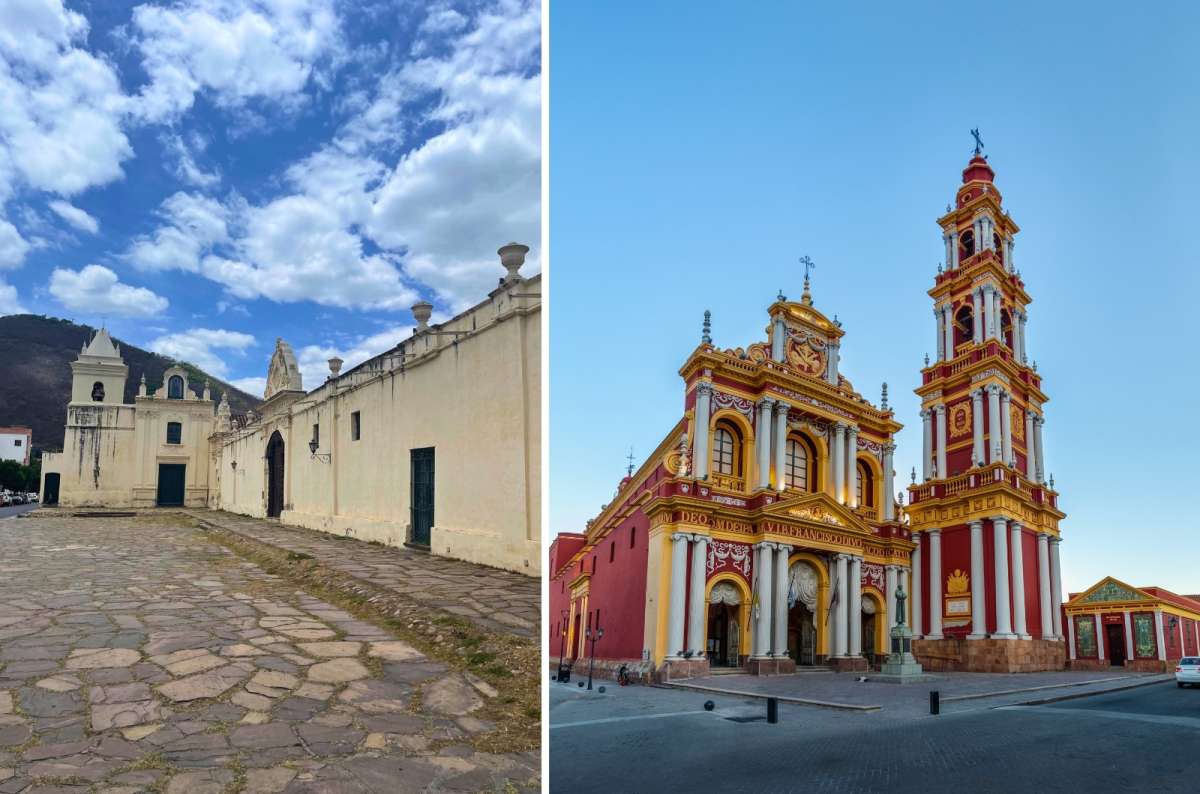
Salta—true Argentinian colonial vibe
- Time spent: 60 minutes
- Opening hours: Typically 9 a.m.—1 p.m. and 5—8 p.m.
- Price: Free (donations welcome)
Why go up to San Bernardo Hill and then come back down? Because you’ll be dining on Caseros Street at the second-best restaurant I tried in Argentina—La Salteñeria Empanadas. Trust me, this place is worth the return trip.
If you’ve read my other itineraries, you know I’m not particularly religious, but I have a deep appreciation for Christian architecture, especially in Latin America. The Spaniards, and later the locals, invested heavily in these buildings, making them some of the most intriguing structures in colonial cities.
Start again at Plaza de 9 de Julio, where you'll find the Cathedral Basilica of Salta, a striking pink building from the 19th century. I didn't get a chance to see the inside, as there was a ceremony going on, and it felt like it would be a sacrilege to intrude.
Salta has some of the most beautiful colonial churches in Argentina, and they’re all within walking distance of the main square.
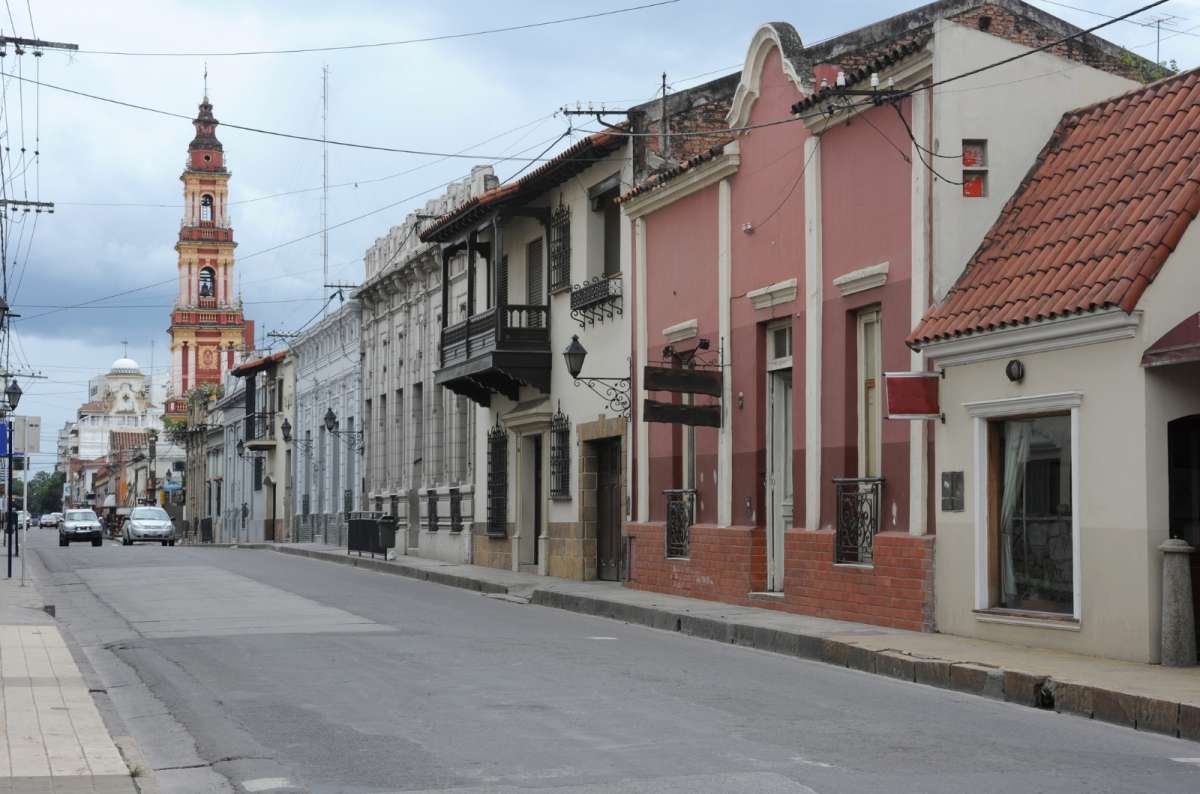
Strolling through Salta’s colonial charm
My two favorites:
- Basilica de San Francisco—Easily the most photogenic church in Salta, with its bright red façade and white details. Come during golden hour for stunning shots.
- Convento San Bernardo—A bit quieter, more peaceful, and just as atmospheric.
These spots give you a real taste of Salta’s colonial past—more relaxed than Buenos Aires, but with just as much character.
Dinner in Salta: La Salteñeria Empanadas
You’re in Argentina. You’re in Salta. You’re eating empanadas.
And if you’re smart, you’ll eat them at La Salteñeria Empanadas, the second-best restaurant I ate at in all of Argentina (the best is later in the trip—stay tuned).
This place is low-key, local, and absolutely delicious. Expect handmade empanadas, spicy sauces, and affordable prices. Try the spicy meat and cheese & onion combos. You might think you’ll only eat three. You’ll eat six.
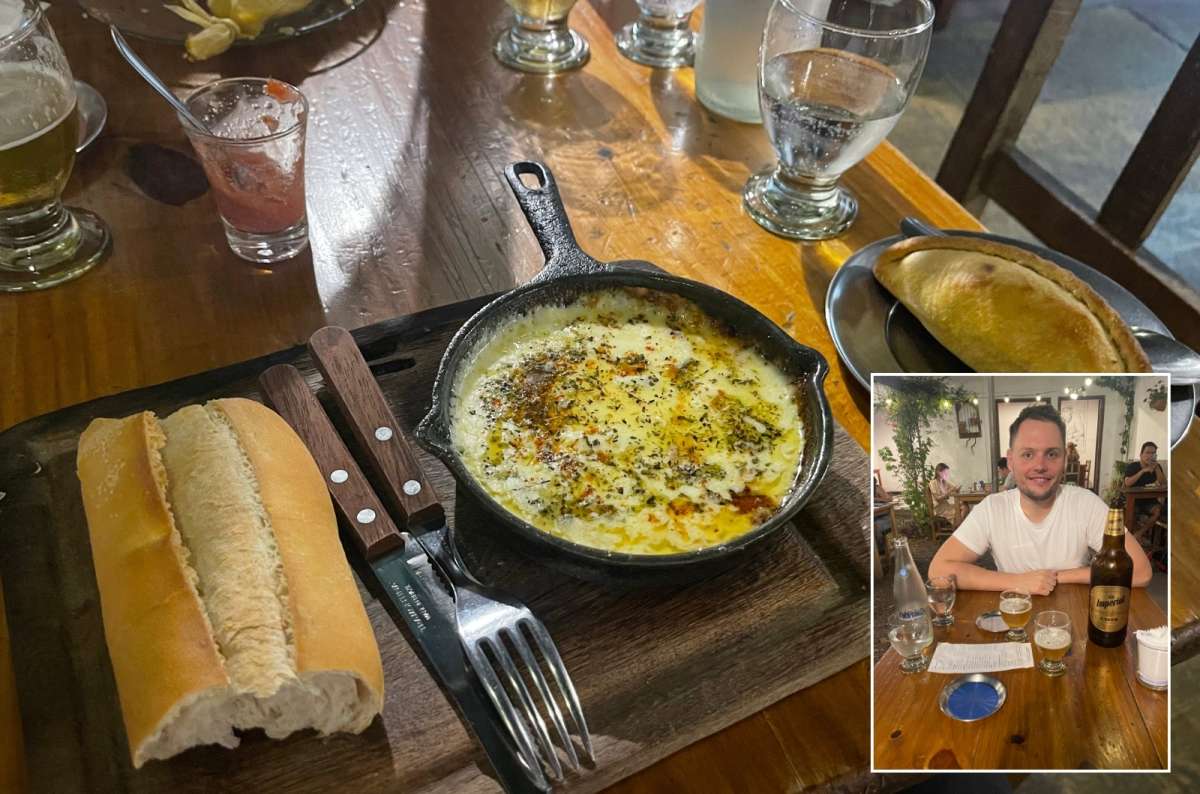
Cheese, empanadas, and cerveza—tasting Argentina one bite at a time
Where to Stay in Salta
You’re only here for a couple of nights, so make it easy for yourself. I stayed at MG Design Hotel Boutique, which had secure parking, walkable access to downtown, and comfy beds. Other good picks:
- Hotel Posada del Sol—Right in the city center
- Villa Vicuña Hotel Boutique—Colonial vibes, stylish décor
- KKala Boutique Hotel—For those who like a view and a dip in a pool
Day 2—Cuesto del Obispo, Los Cardones & Quebradas
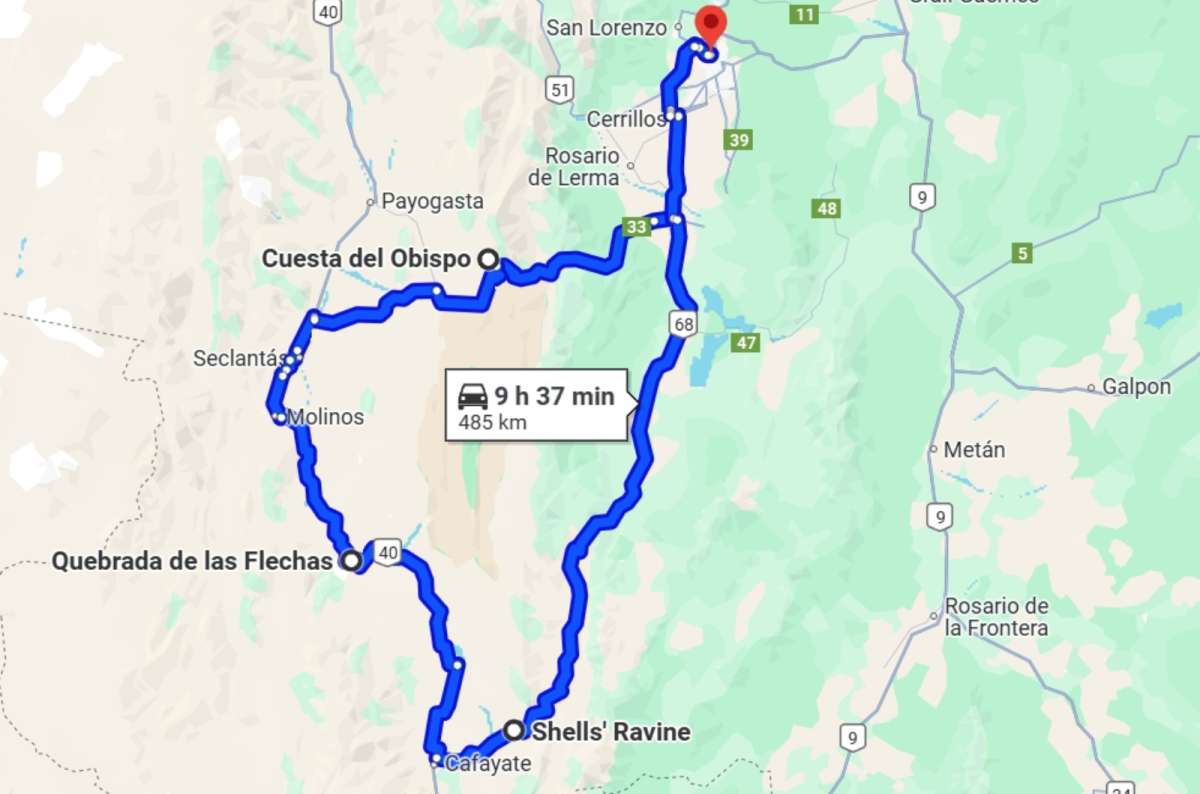
I hope your rental car is comfy, because you’ll be spending plenty of time in it today
- Main sites visited on day 2: Cuesta del Obispo, Nacional Parque Los Cardones, Quebrada de las Flechas, Quebrada de las Conchas
- Hotel recommendations: MG Design Hotel Boutique
- Further reading: 6 day itinerary for Salta and Jujuy
- Dinner: Pena
- Distance Driven: 466 km (290 miles)
- Total drive time: 7 hours
This is where your 4×4 rental really earns its keep. Today is all about a mini road trip through Argentina’s northwestern wilderness, with a dramatic shift from green mountain valleys to Martian-red rock deserts. It's a long driving day, but easily one of the most spectacular of the trip.
I recommend to Wake up early, eat well, and fill up your gas tank—there are few fuel or food stops on this route. It’s going to be 7 hours of driving (Google says 9.5, but with a 4x4 and frequent stop-and-snap breaks, it’s faster and more fun).
Stop 1 Cuesta del obispo and Valle Encantado
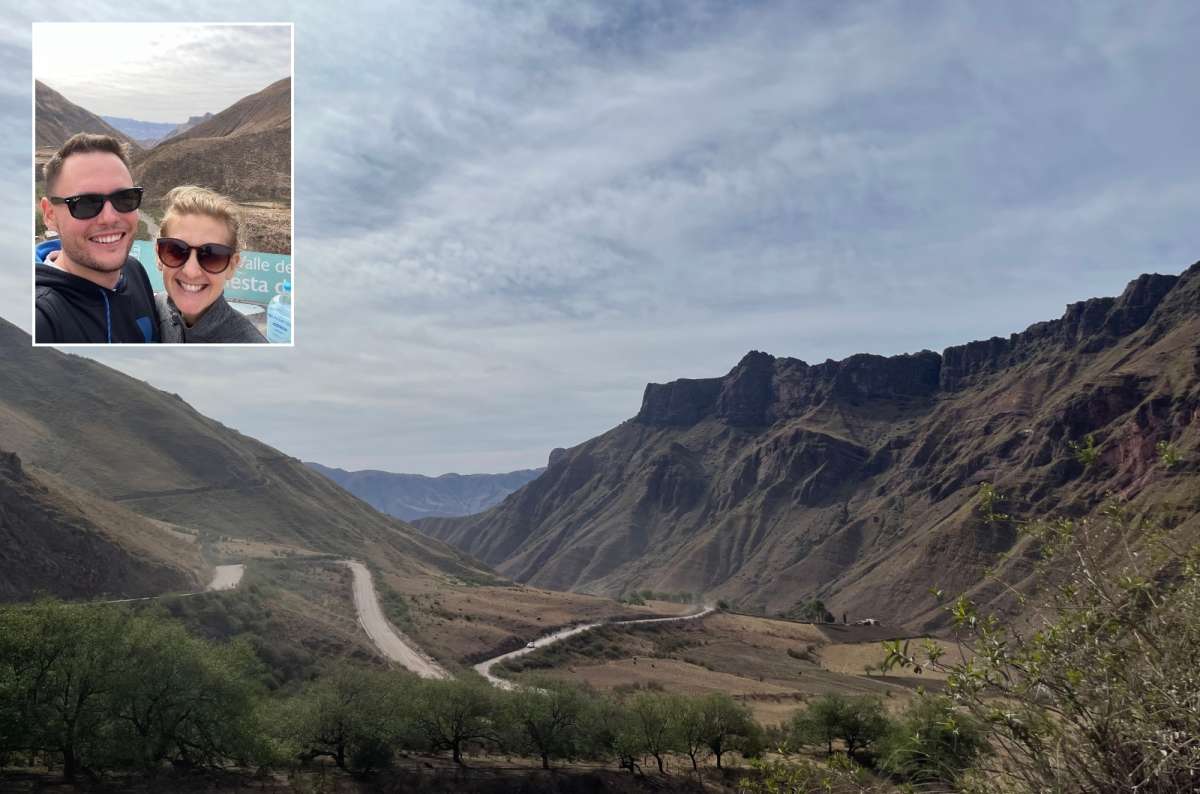
Look at the views! Cuesta del Obispo
- Drive distance: 100km (62 miles) and about 1h30min
- Time spent here: 3 hours for the hike
- Entry fee: free
It takes about 2 hours to reach the first stop—Cuesta del Obispo viewpoint—where you can pick up some trinkets and take a bathroom break. But the real attraction here is the absolutely epic greenery of the surrounding mountains.
Make sure to stop at all the viewpoints on the way up, as these will be some of the only mountain views on the route. Later in the day, the landscape becomes much more altiplano. Get ready for some serious altitude too; this viewpoint is situated at a whopping 3,244 meters (10,643 feet) above sea level.
After you've stocked up on trinkets from the locals, it's just a 10-minute drive to today's hike: Valle Encantado. For me, this was an almost surreal experience because of the differently colored rocks and meeting giant cacti for the first time in my life.
The entire hike takes between 1.5 to 3 hours and isn't very demanding since it's mostly flat. You can read more detailed info about the hike in my article Best hiking in Argentina
Stop 2: Parque Nacional Los Cardones
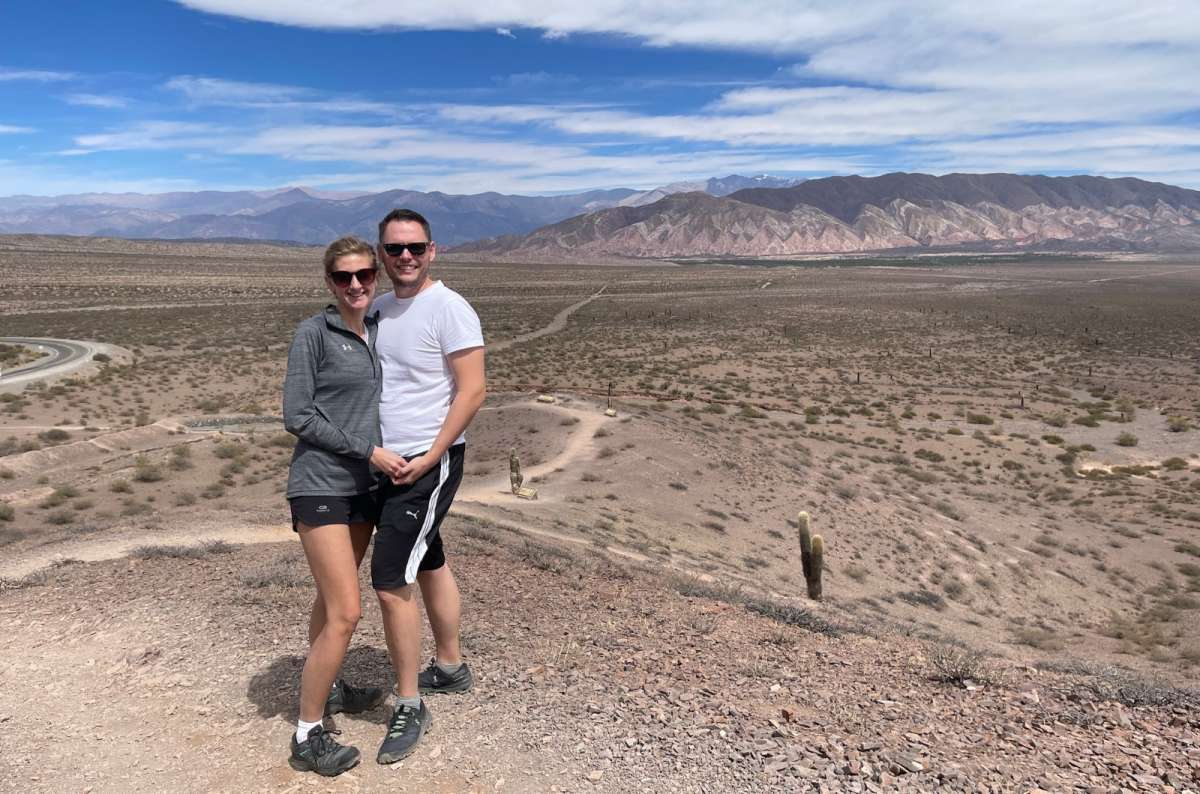
Landscapes of Los Cardones
- Drive distance: 45km (30 miles) and about 30mins
- Time spent here: 2-3 hours
- Entry fee: free
This drive takes you about 50 km through the park, with plenty of little stops along the way. This is exactly how I imagined the Wild West would look when I was a kid.
This national park stretches across desert plains, red cliffs, and towering 5-meter-tall cacti called “cardones.” I wasn’t expecting much—but wow. It’s cinematic.
The 50 km drive through the park is packed with short stops and easy walks. Just pull over on Route 42 whenever the landscape tells you to (and it will). The silence, the shadows, and the prickly green silhouettes make this one of the most photogenic places in Salta.
There are plenty of short circular walks, and they're all pretty easy to reach from the main road, Route 42.
Fun fact: I'm pretty sure you're going to test if those thorns are actually sharp and if they can cut you. I did. And, surprise, they did cut me. What was I expecting from millions of years of evolution? Stupid Jan.
Don’t miss side stops like Cerro Tin Tin or the Camino de las Coloradas—more in the Salta itinerary.
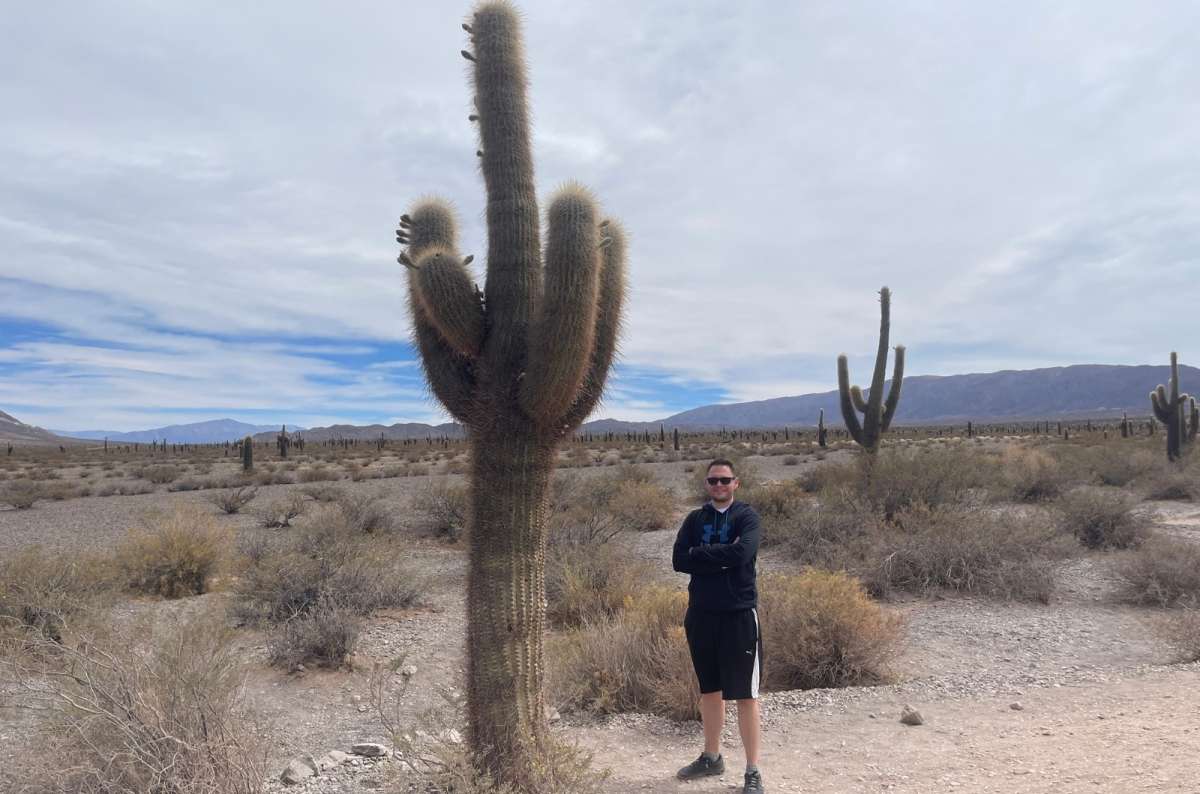
When the locals are taller and spikier than you
Stop 3: Quebrada de Las Flechas
- Drive distance: 100 km (62 miles) and about 2h
- Time spent here: 2-3 hours
- Entry fee: free
Pro tip: This is the worst road surface of the day, so your 4×4 is non-negotiable here. The route is slow, bumpy, and remote—but worth every rattle.
I love the translation of this place—it's called the Gorge of the Arrows. How cool is that? Anyway, it'll take you about 3 hours to drive here through a not-so-interesting landscape. Sorry about that, but there's really no way around it. Trust me, I tried everything while planning. This is the most logical route.
The gorge itself is fascinating; it looks like something straight out of a sci-fi movie. I could swear the new Star Wars was filmed here (it wasn't). This stop is definitely a "car hike"—there are only a few short walks around, and it felt like it was a million degrees in the sun.
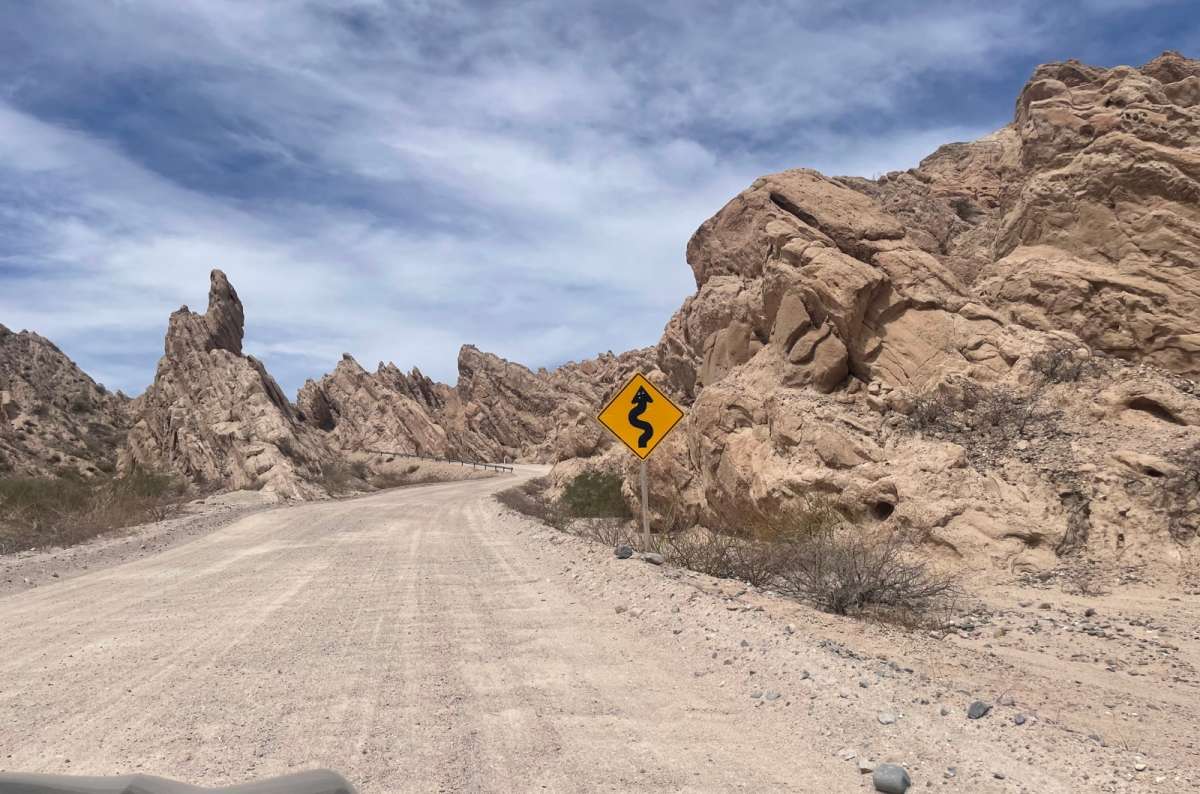
Quebrada de las Flechas
Fun fact: These rocks are only 20 million years old—teenagers by geological standards. Their shape gave the gorge its name: arrow-shaped formations pointing to the sky.
Stop 4 Quebrada de las Conchas (The Shells Ravine)
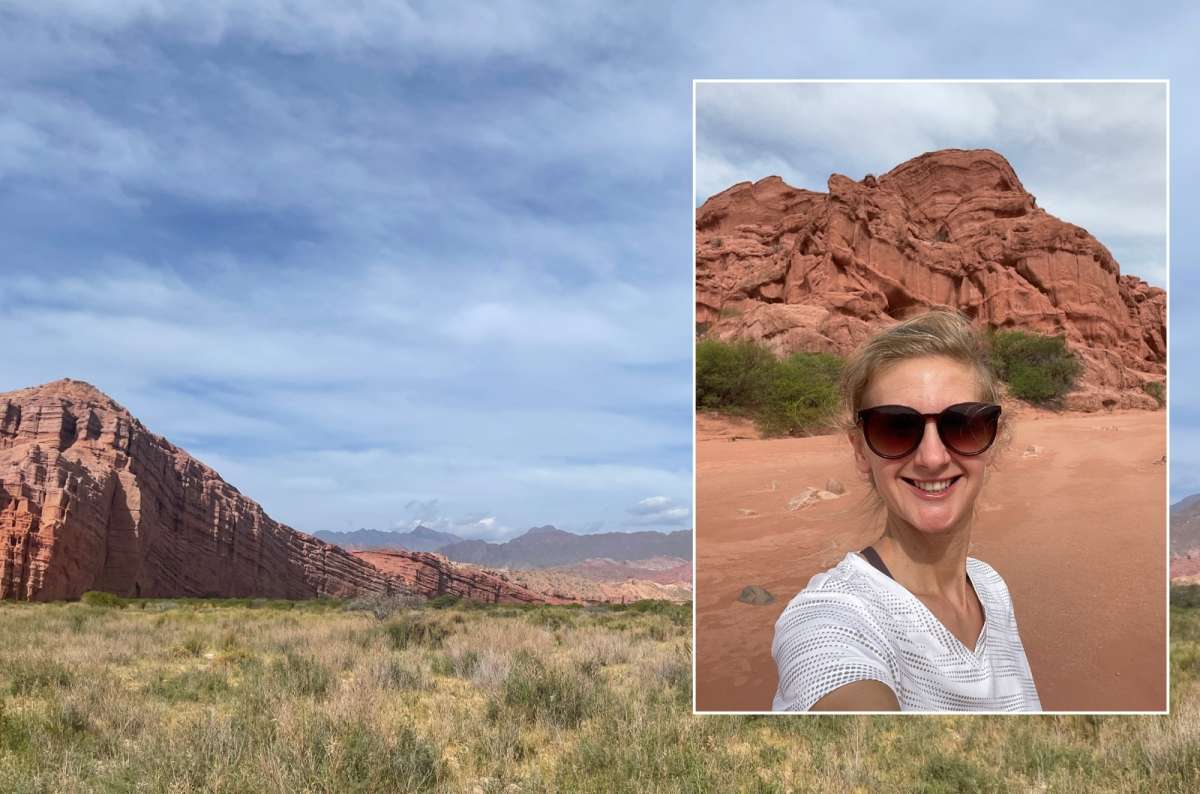
Quebrada de las Conchas showing off its colors—and we’re here for it
- Drive distance: 65km (40 miles) 1h30min
- Time spent here: 1 hour
- Entry fee: free
I saw pictures of this place before I visited Salta, and honestly, it was one of the main reasons I wanted to explore the northwest part of Argentina. It's just unbelievable—red rock formations, gorges, and canyons. When you show your pictures to anyone back home, they won't believe they're real.
Pull over wherever Google tells you—small parking lots dot the route. There are dozens of short photo-friendly trails, but after a long day of dusty car-hiking, you may only have energy for a few.
Your photos here will look AI-generated. People won’t believe they're real.
Dinner + Overnight
You can either drive 2 hours back to Salta or stay overnight in Cafayate, a cute desert town surrounded by vineyards. I personally preferred dining back in Salta, but if you want to split up the drive, Cafayate’s wine and relaxed vibe are a solid bonus.
Day 3—Rainbow Mountains & Incan Ruins in Jujuy
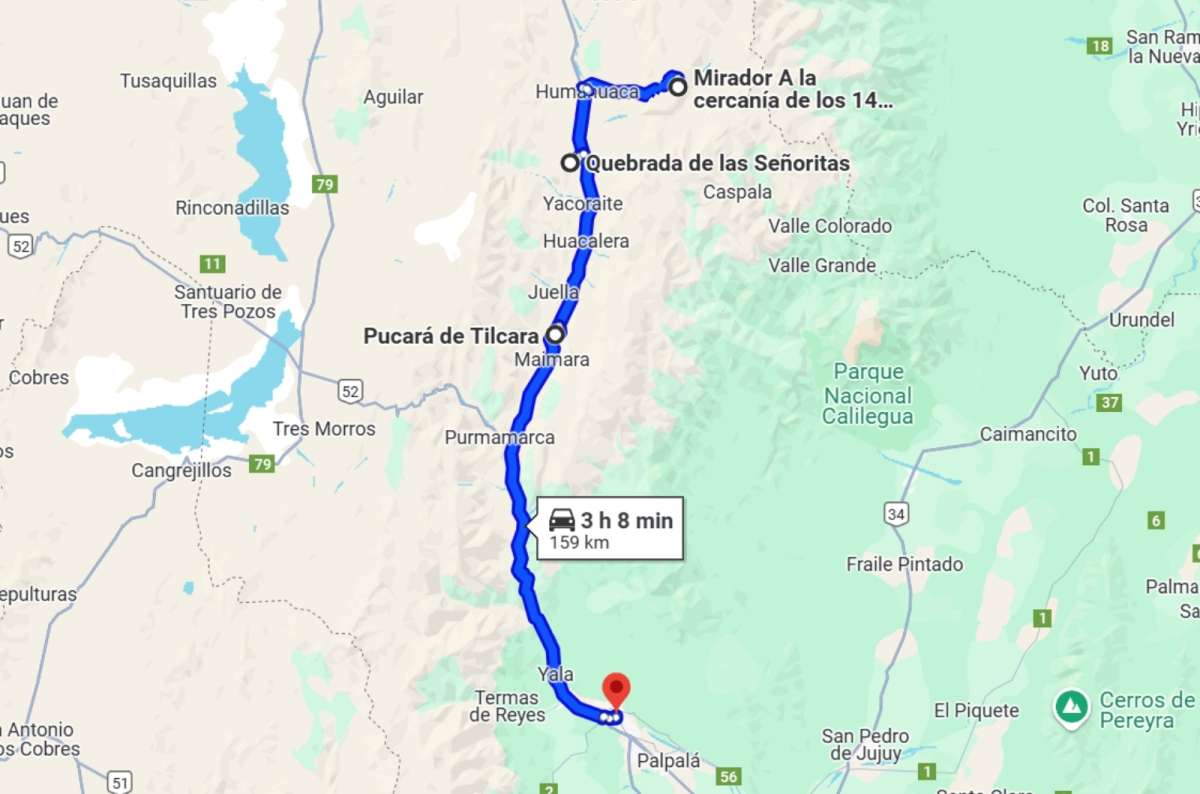
The route of the drive from Mirador A la Cercanía de los 14 Colores del Hornocal to San Salvador de Jujuy
- Main sites visited on day 3: Cerro de los 14 colores, Quebrada de las Seňoritas and Pucará de Tilcara
- Hotel recommendations: Hotel Altos de la Viña
- Further reading: Quebrada de Humahuaca travel guide
- Dinner: Flor del Pago—my favorite restaurant in Argentina
- Km driven: 130+ km
Today, you’ll make your way to San Salvador de Jujuy, and from there, explore some of northern Argentina’s biggest natural and cultural hits: Quebrada de las Señoritas, Pucará de Tilcara, and the stunning Rainbow Mountain (Cerro de los 14 Colores).
San Salvador is a solid base—it’s the capital of Jujuy province and allows you to reach each destination in under two hours.
Pro Tips for the Jujuy Region
- Remember to fuel up before heading out. Small villages don’t always have gas stations, and I learned this the hard way—had to backtrack an hour just to fill up.
- Use headlights at all times. Route 9 is full of random police checkpoints, and I got fined 10 USD for not having mine on. Check local driving laws in advance.
Stop 1: Quebrada de las Señoritas
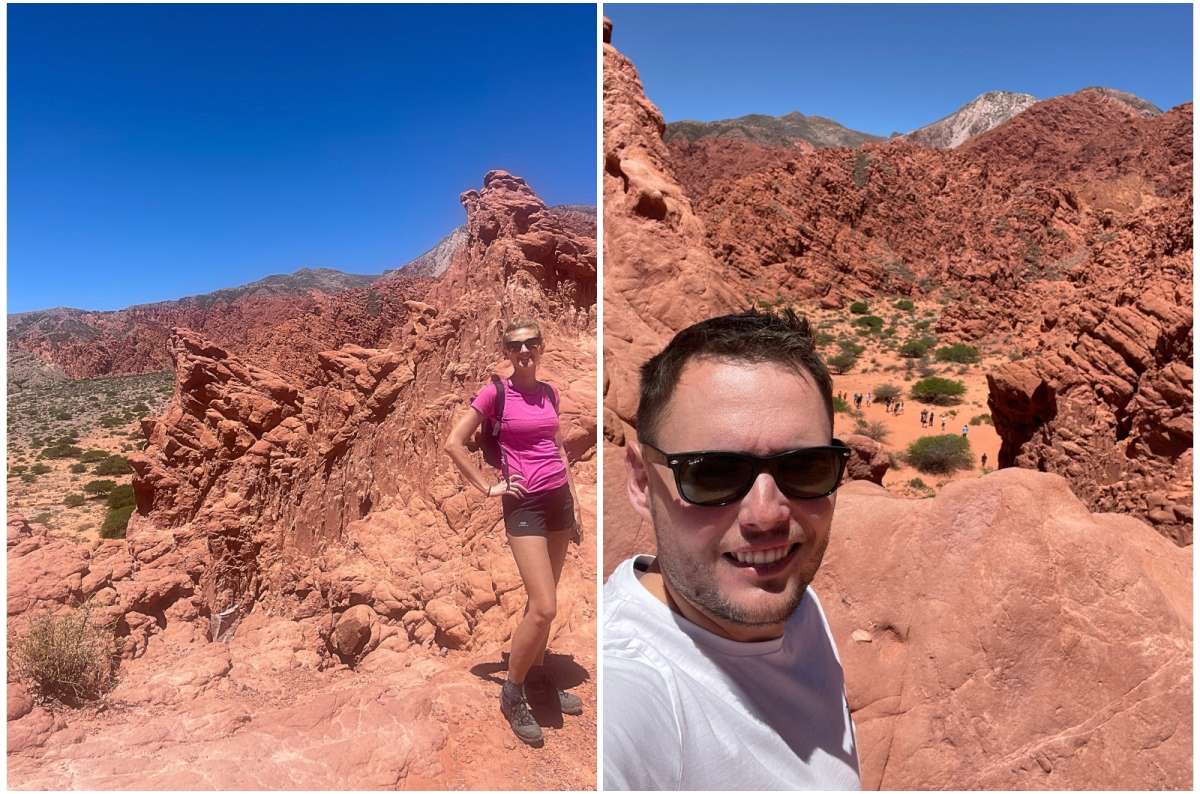
My señorita and me @ Quebrada de las Señoritas
- Drive distance: 120 km (75 miles), 1 h 30 min
- Time spent here: 1,5–3 hours
- Entry fee: 1–4 USD
I found Quebrada de las Señoritas almost by accident, and I’m glad I did. The drive is easy—90% paved roads—and the trailhead starts at a large dirt parking lot surrounded by red rock cliffs.
Pro tip: Bring sunscreen and a hat. The altitude sun is brutal, and there’s practically no shade.
You can choose between two guided tours (1.5 or 3 hours). They’re in Spanish only, but the guides are friendly and informative. This place feels completely alien—blood-red rock, dry gorges, and towering formations that make yesterday’s landscapes look like the intro act.
Don’t expect solitude—this is a well-known stop with plenty of tourist buses—but the scenery is worth sharing.
Stop 2: Pucará de Tilcara
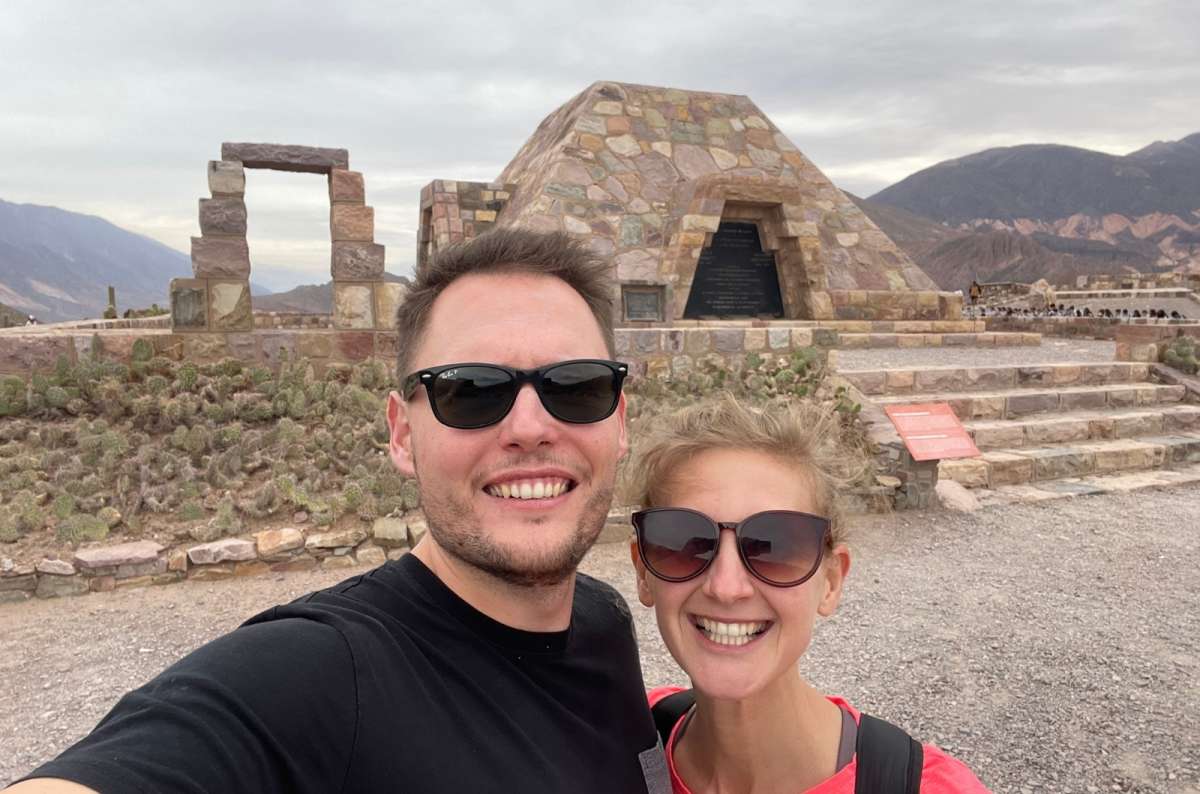
Caption: ancient pre-Inca archaeological site Pucará de Tilcara
- Drive distance: 40 km (25 miles), 30 minutes
- Time spent here: 1 hour
- Entry fee: 1.5 USD
This stop was an interesting change for me, as it’s quite different from all the surrounding sights and a welcome break after all the natural monuments. Essentially, it’s a fairly typical Incan fortress/town where you can learn all "three" facts about the Incas.
What I really liked is that it's architecturally fascinating. You can see Los Cardones cacti here and learn how they used these cacti as pillars to support their buildings. Having spent a month in Peru, it wasn't anything new to me, but for someone who hasn’t been to Peru, this is definitely the place to be.
In Argentina, this is probably one of the most significant historical sites you can visit. You can expect stunning views from the top of the fortress and a pretty little town nearby where you can do some grocery shopping and refuel the tank.
Stop 3: Cerro de los 14 Colores—Argentina’s Rainbow Mountain
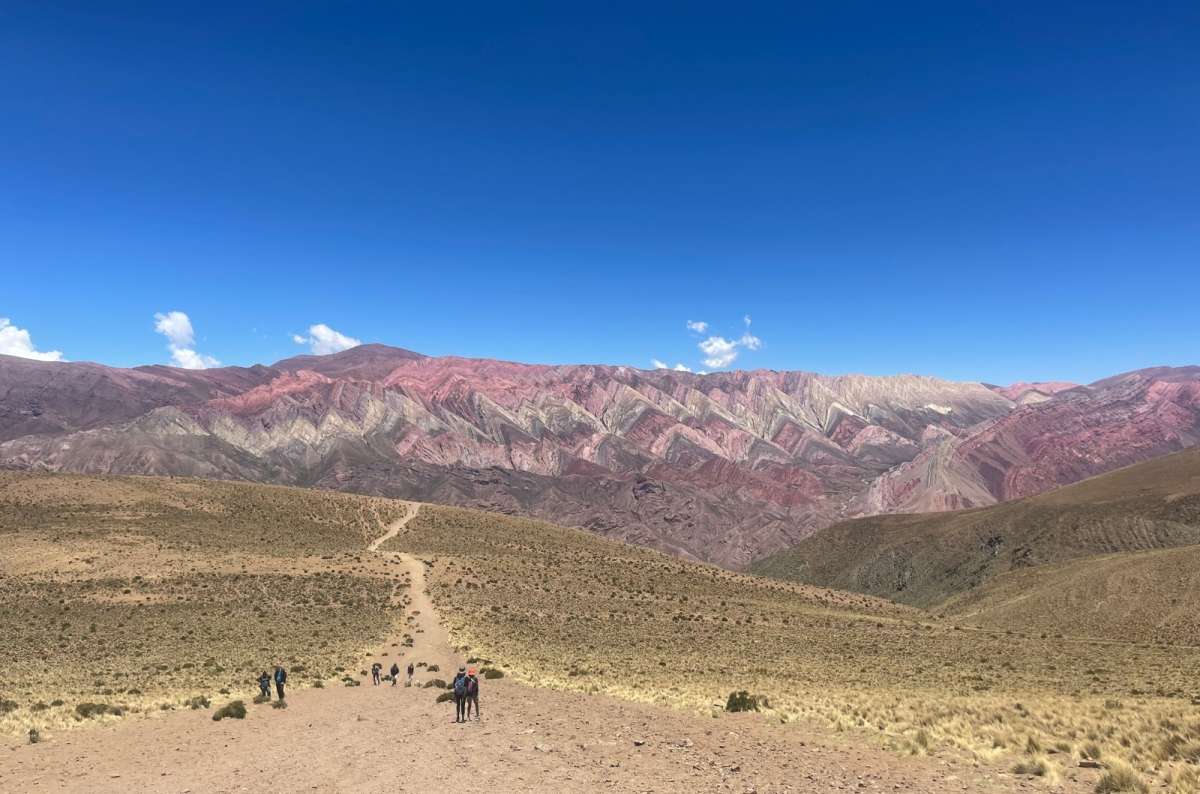
Argentina’s Rainbow Mountain
- Drive distance: 70 km (45 miles), 1 h 30 min
- Time spent here: 1 hour
- Entry fee: free
Let’s be honest: this is what I came for.
Cerro de los 14 Colores is Argentina’s answer to Peru’s Rainbow Mountain, and I actually found it more colorful, more epic, and way less crowded. You’ll climb up to 4,300 meters (14,100 feet) on a narrow but safe dirt road (yes, you’ll need a 4×4).
Pro tip: There’s a fairly large parking lot at the top where you can buy some trinkets and local food, which I actually enjoyed.
At the summit, you'll be treated to majestic views of the surrounding mountains, but the real showstopper is Argentina's Rainbow Mountain, which I found significantly more colorful than its namesake in Peru.
This geological wonder is a result of minerals like iron, copper, and limestone deposited over millions of years, creating vibrant layers of red, pink, yellow, and green.
The region has been shaped by tectonic movements and volcanic activity from over 65 million years ago, and it's part of the UNESCO World Heritage-listed Quebrada de Humahuaca, a cultural and historical trading route for over 10,000 years.
You can take a short walk around, going up and down the hills, where you'll really feel the lack of oxygen—unless you’re like my girlfriend, who was practically bouncing around me. It was quite annoying, especially when I was in my near-death state from the altitude!
Dinner at Flor del Pago
Back in San Salvador de Jujuy, treat yourself to a meal at Flor del Pago, which—for me—is the best restaurant in Argentina.
It’s fine dining, but not snobby. Beautiful garden setting, calm vibe, service that actually works, and the ceviche was so good, I came back the next day—also for the lack of options in Jujuy. That’s the kind of restaurant it is.
Day 4—Jungle Hiking in Calilegua National Park
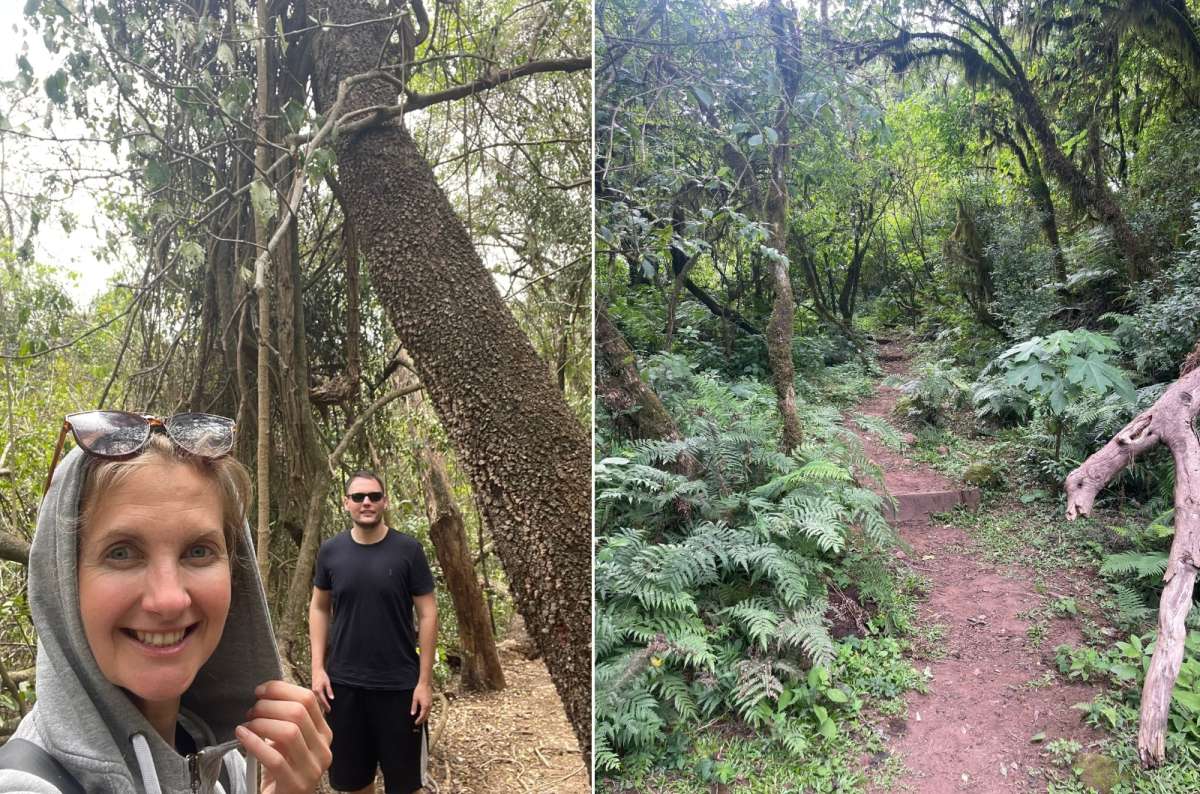
Caption: Into the jungle we go @ Calilegua National Park
- Main sites visited on day : Parque Nacional Calilegua (National Park Calilegua)
- Hotel recommendations: Hotel Altos de la Viña
- Further reading: Calilegua National Park Guide
- Dinner: Flor del Pago
- Km driven: 130+ km (to the visitor center)
- Entry fee: free
Today, you’ll switch things up and leave the dusty Altiplano behind for the lush green jungle of Calilegua National Park—one of the best national parks in Argentina and one of the easiest to reach by car.
Just plug “Visitor Center” into your GPS and in about 1 hour and 45 minutes, you’ll be at the entrance. There, grab a map (yes, it’s actually accurate!) and get ready for a mix of driving, hiking, and wildlife spotting.
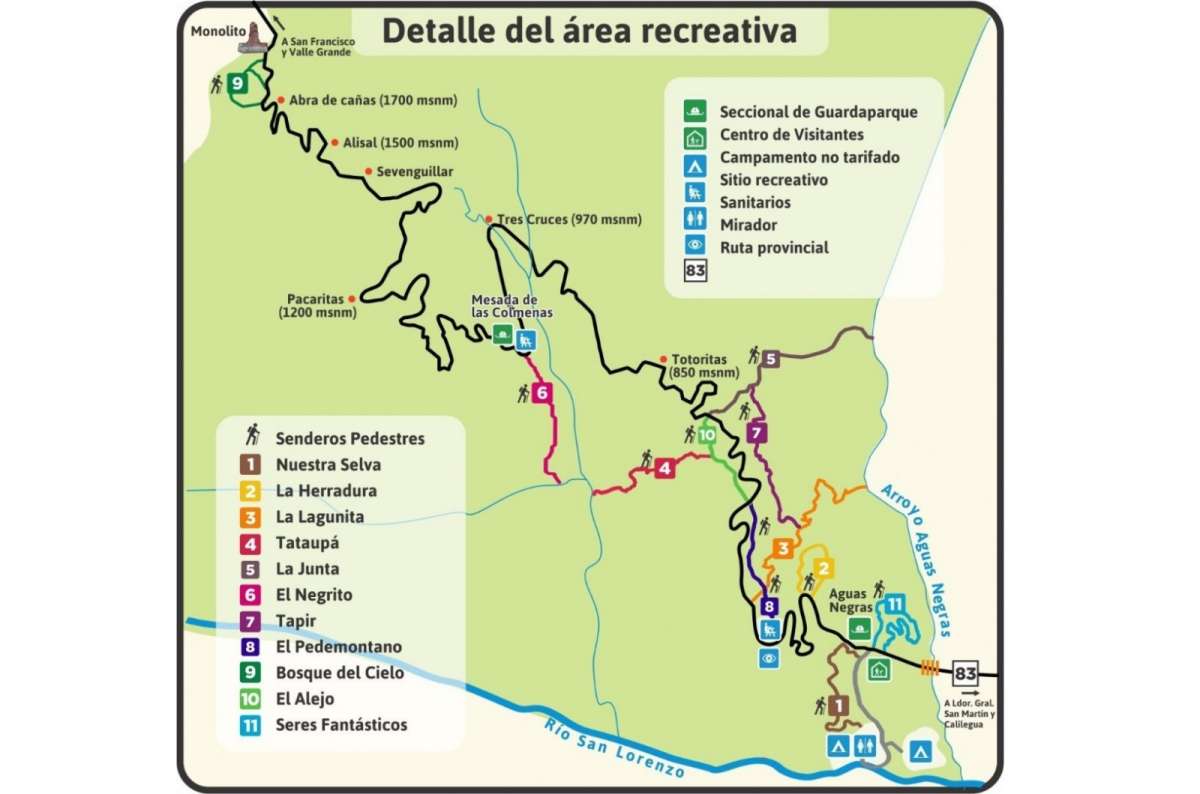
Map of Calilegua National Park hiking trails
Pro tip: Want to See a Jaguar?
Calilegua offers your best chance to spot a jaguar—there are over 300 of them living in the park. That said, you won’t actually see one. These big cats are incredibly, almost ridiculously, elusive.
The park is all about hiking and wildlife watching, but let me give you some simple advice:
- Without a guide, you’re mostly going to see birds. Jungle animals are pros at hide-and-seek with their excellent camouflage.
- Watch your step—snakes love to chill under the leaves.
- Bring binoculars. Trust me, they’ll massively boost your chances of spotting anything beyond the occasional bird.
- Don’t forget insect spray. You can thank me when you’re not being eaten alive.
- Wear layers! The park reaches up to 3,700 meters, so expect a temperature swing of at least 15°C.
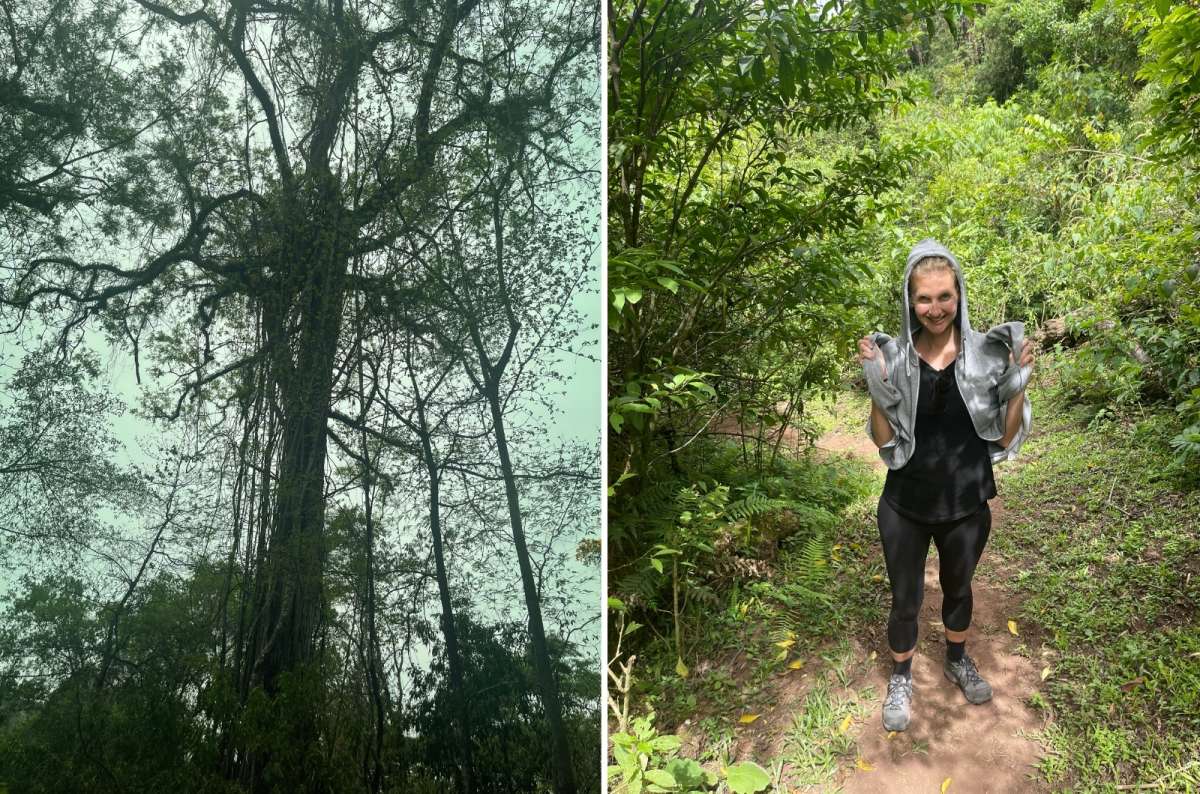
Lost in the green heart of Calilegua, scaring off jaguars in a hoodie
Driving in Calilegua = Jungle Roadtrip Goals
There’s one main road that cuts through the park, and nearly all hikes begin right off the roadside parking areas. Even if you just drive through, it’s jaw-droppingly scenic the whole way. Expect:
- 2+ hours from end to end (with stops)
- Unpaved roads, but manageable with a sedan
- Smoother ride with 4WD, especially in wet weather
Think of it as “car hiking” with trailheads on demand.
My recommended hikes in Calilegua (from best to good)
- Sendero del Bosque del Cielo—atmospheric, slightly magical
- Sendero la Lagunita—peaceful and lush
- El Negrito trail—less crowded, great flora
- Sendero la junta—short and great finish

Dinner: Back to Flor del Pago
You’ve earned it. Head back to San Salvador de Jujuy and treat yourself again at Flor del Pago. Yes, I’m recommending it again. No, this isn’t sponsored. It’s just that good.
Skip the urge to “try something new” tonight. I made that mistake once. Never again. The ceviche still lives in my dreams.
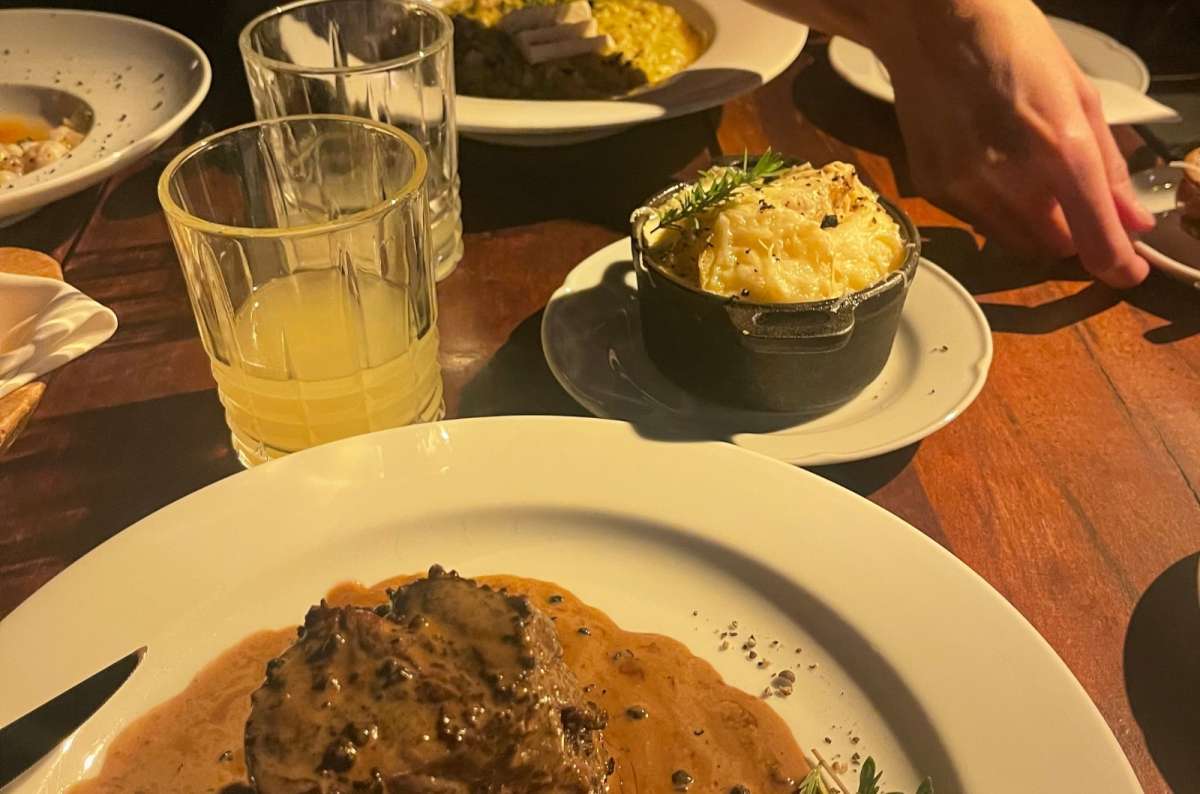
A well-deserved dinner after our busy day on this Argentina itinerary!
Day 5—Salinas Grandes + Flight to Iguazu
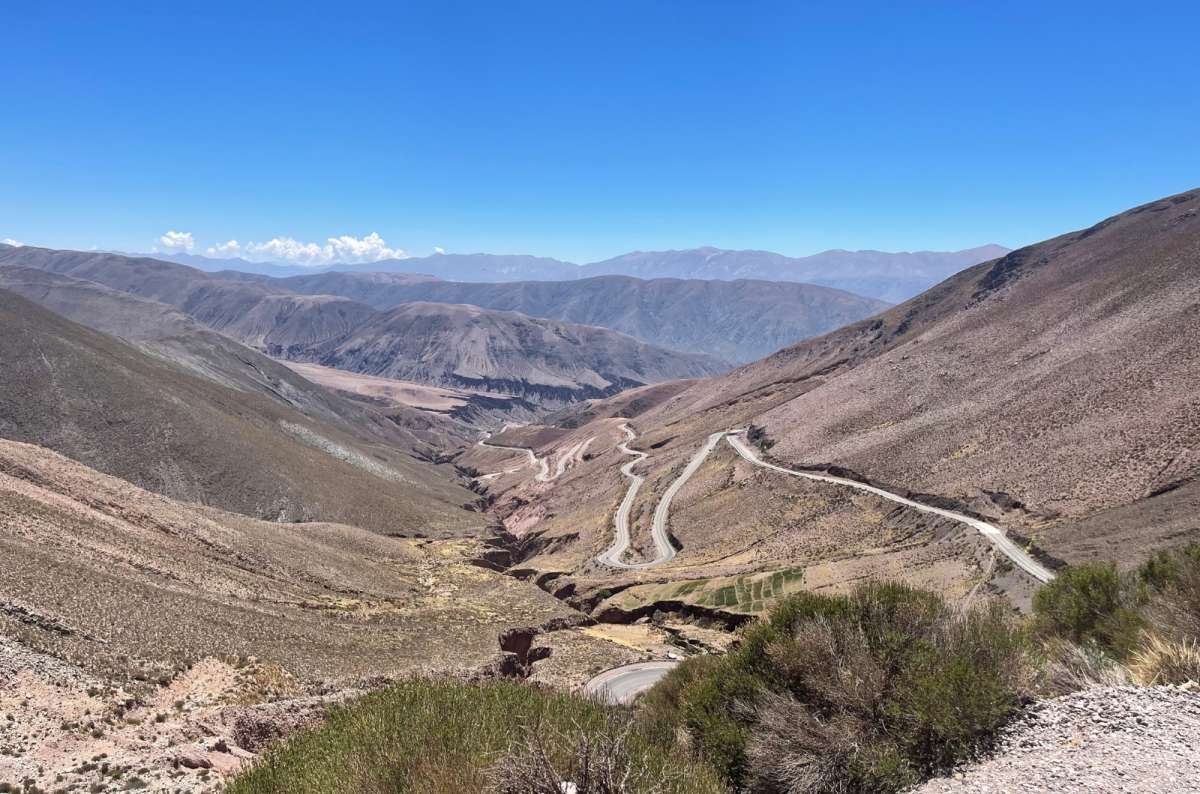
The epic road to Salinas Grandes
- Main sites visited on day 5: Salinas Grandes
- Hotel recommendations: Loi Suites Iguazu hotel
- Further reading: How to visit Salinas Grandes
- Dinner Pick: Loi Suites Hotel
- Km driven: 135 km to the visitor center
- Entry fee: free
Oh yes! Today you’ll visit one of the top natural highlights of northern Argentina—Salinas Grandes, the famous salt flats of the Altiplano. Unlike their neighbors in Bolivia and Chile, these salt flats have a unique twist. They’re more industrialized, with salt mining in full swing, and are actively set up for tourists to explore.
From your hotel, it’s about a 2-hour drive to the visitor center. The route itself is beautiful, with miradores and mountain switchbacks, so give yourself time to stop for pictures.
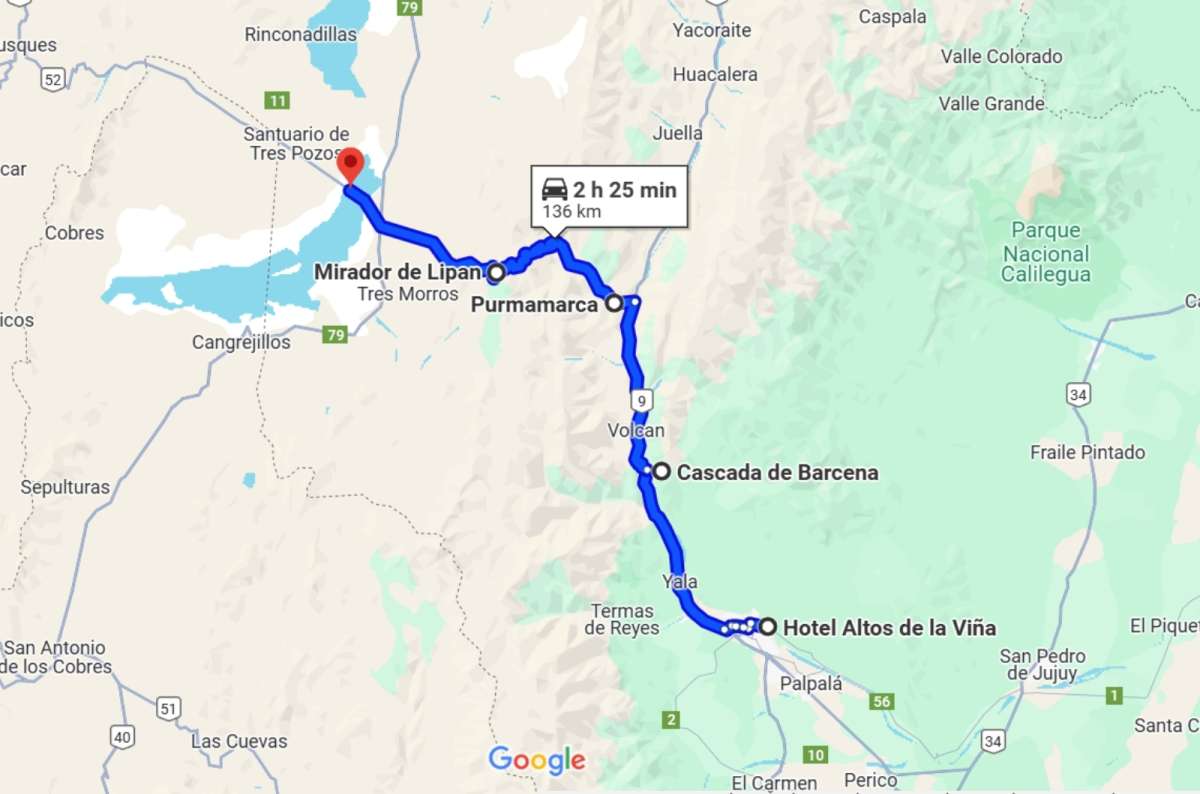
Road from your hotel to Santuario de Tres Pozos, Salinas Grandes, Argentina
Pro tip... or you’ll regret it
This is an uphill, high-altitude drive—and your car will burn fuel like crazy. Learn from my mistake: I had to turn back halfway, drive 30 minutes down to Purmamarca, only to discover the nearest gas station was in Tilcara. Lost 2 hours of my life.
Don’t be like Jan. Fuel up before you go.
Exploring Salinas Grandes
Once at the visitor center, you’ll:
- Pay a small entrance fee
- Wait for a local guide (tours are mandatory)
- Enter one of the most surreal landscapes in Argentina
What can you expect? Jaw-dropping landscapes, with the shimmering salt flats set against a dramatic backdrop of desert mountains. It’s pretty spectacular.
What I enjoyed most was getting creative with some quirky photos—posing with cans and other random stuff for those classic salt flat optical illusions. But what really fascinated me was dipping my hand into one of the brine pools and watching salt crystals form on my skin. It was like nature’s own little science experiment, right in the middle of the flats.
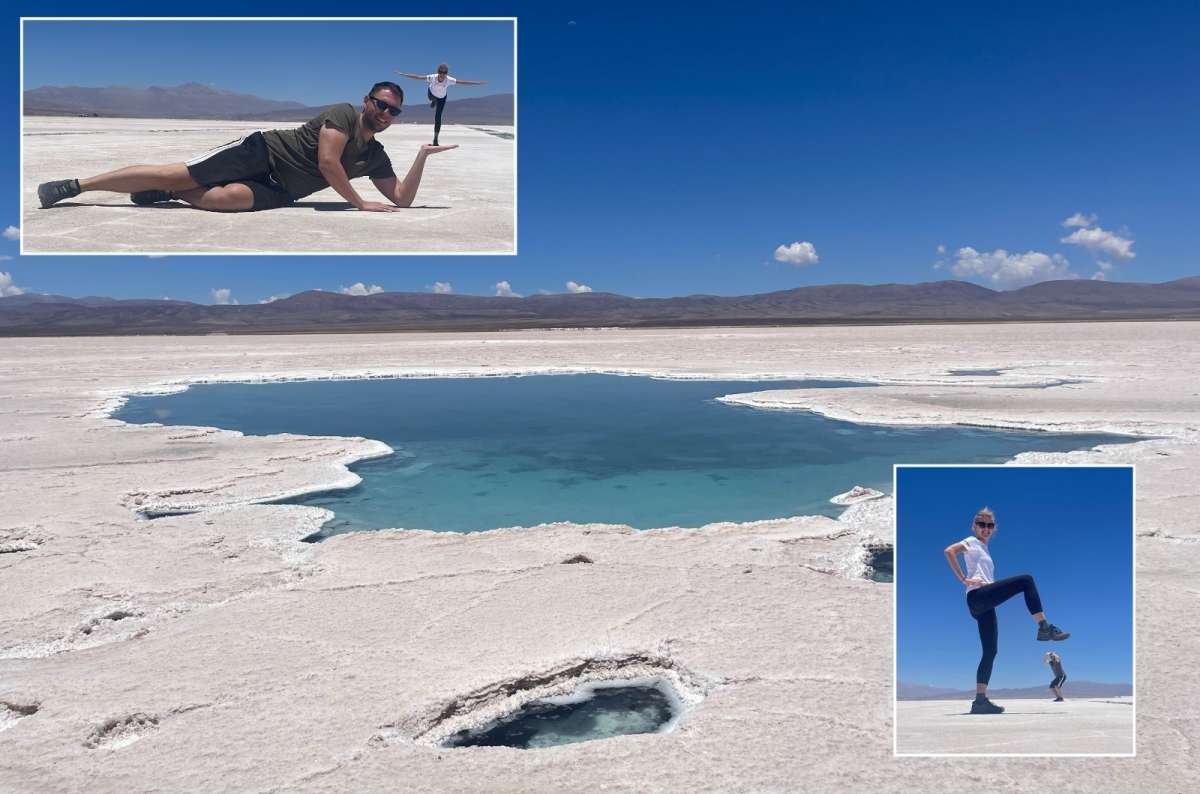
Salt, sun, and optical illusions—welcome to the magic of Salinas Grandes
I've put together a thorough and comprehensive Salinas Grandes guide, so I’ll keep it brief here.
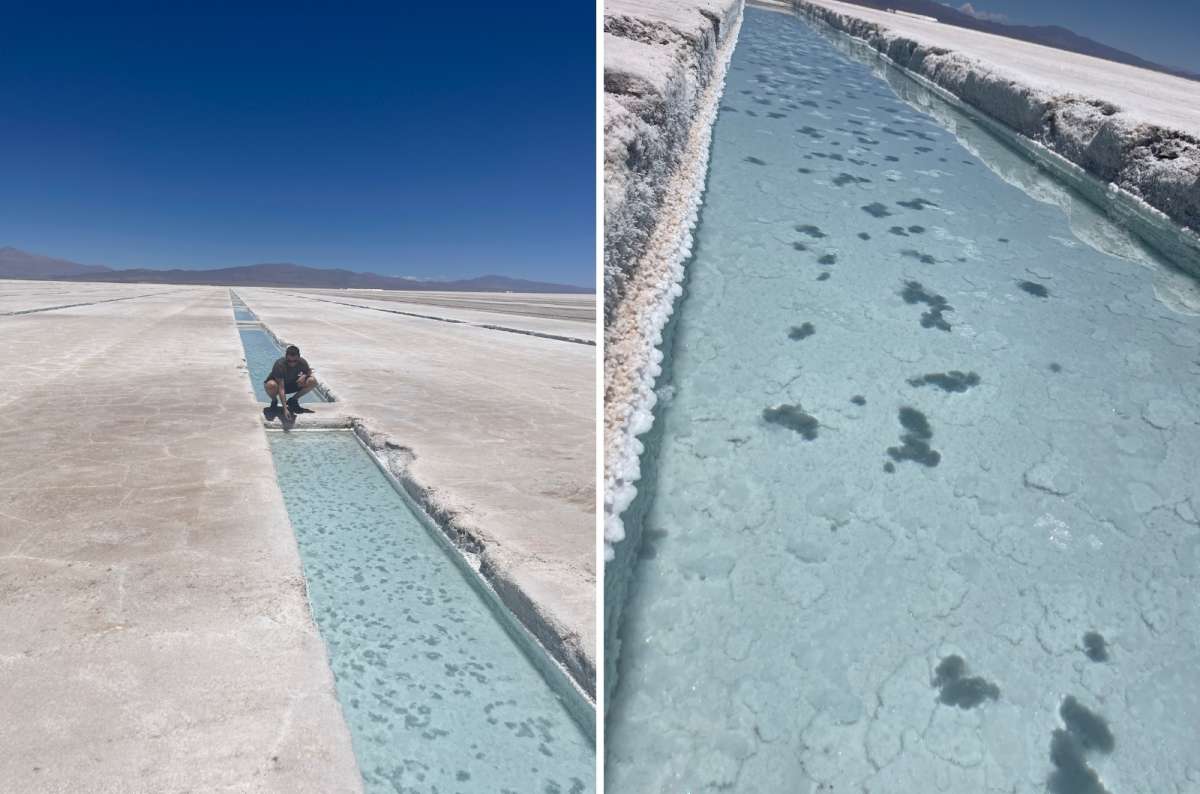
Crystal-clear salt pools
Flight from Salta to Iguazú
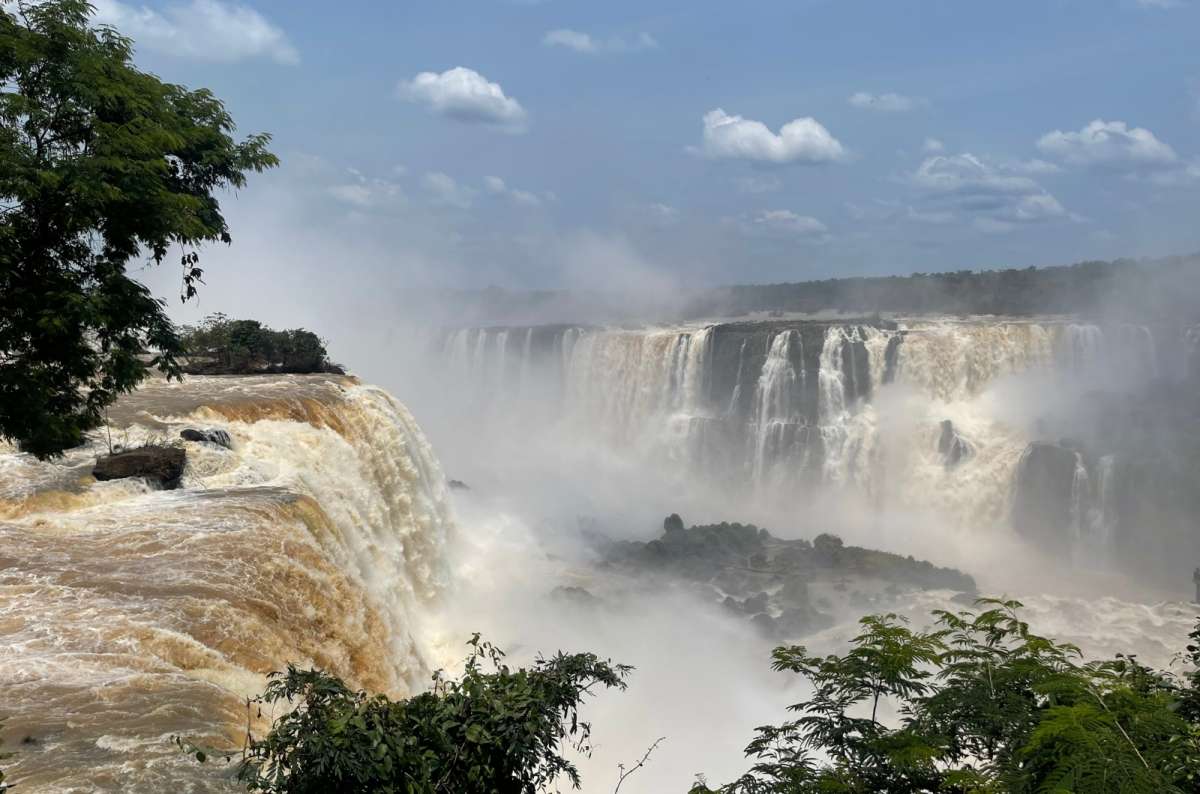
Iguazú Falls, you’re something else
After the salt flat adventure, it’s time to return to Salta (approx. 3 hours), drop off your rental car, and catch a direct flight to Iguazú Falls—yes, that’s a thing, and yes, it only takes about 2 hours.
Once you arrive, you won’t need to rent a car—taxis are more efficient, and crossing the border to Brazil is way easier with them.
Where to Stay: Loi Suites Iguazú Hotel
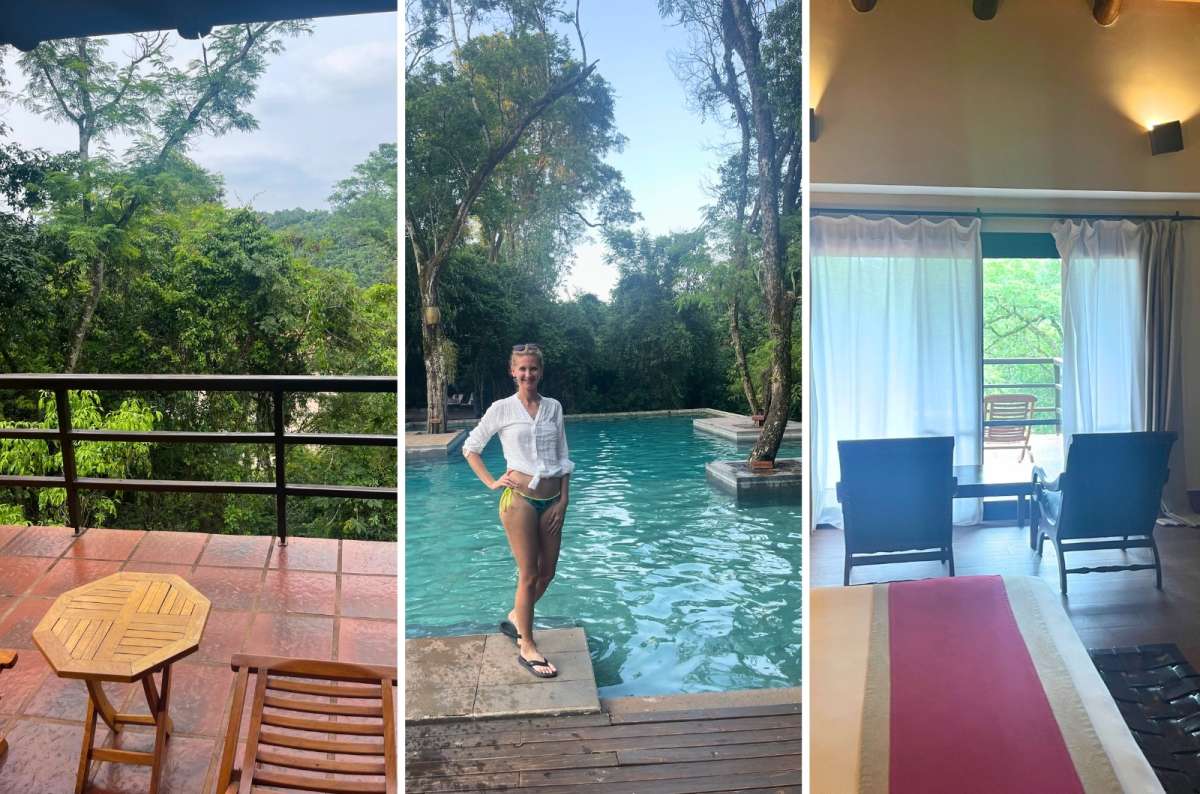
Woke up in the jungle, but with room service @ Loi Suites Iguazú got it right
I stayed at Loi Suites Iguazú Hotel, and let me tell you—it was the best hotel I visited in all of Argentina. A destination on its own
- Canopy-style rooms surrounded by jungle
- Multi-level pool system so nice you’ll forget about waterfalls for a second
- Solid restaurant on-site (and that’s saying something)
Dinner + Chill
After a long day, I was pretty tired, so I decided to have dinner at the hotel and enjoying a drink by the pool before calling it a night. I don't regret it.
Rest up, because tomorrow you’ll be ready for the #1 must-see in Argentina—Iguazu Falls.
Day 6—Iguazú Falls—Argentina Side
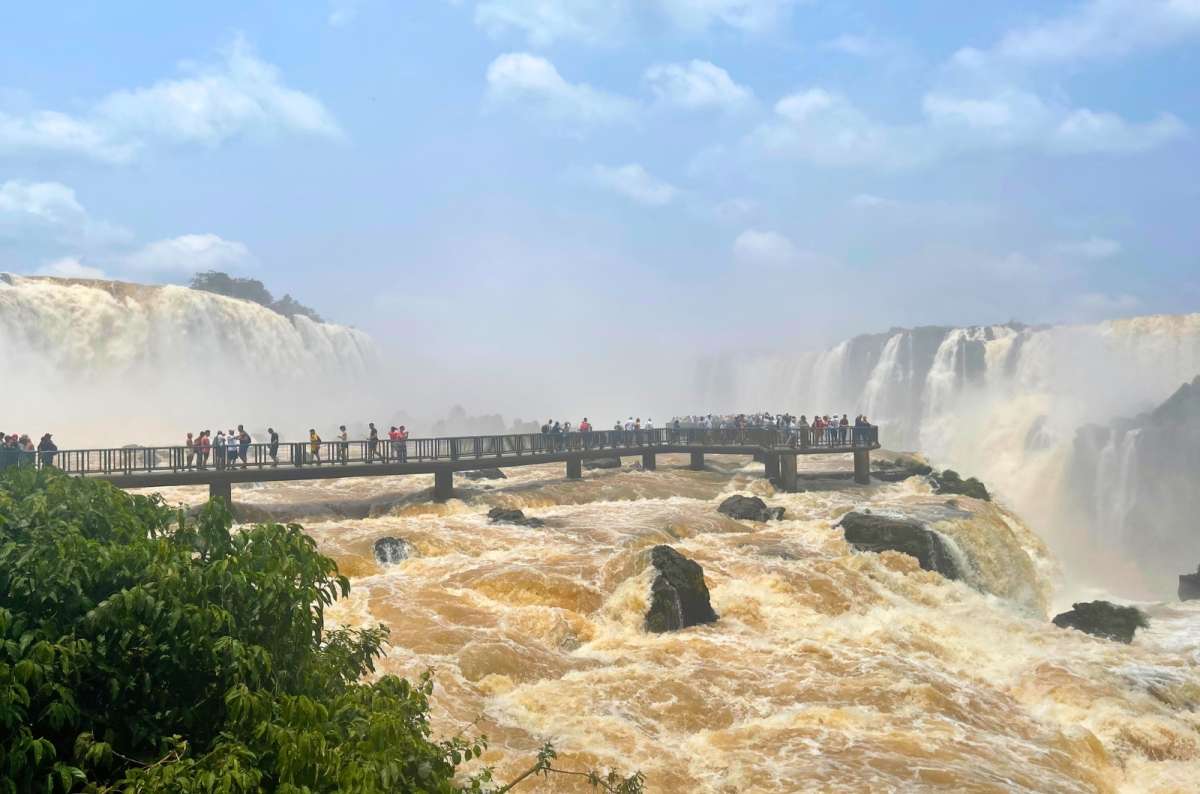
The Argentina side of Iguazu Falls is where you’ll get up close and personal (read: you’ll get wet)
- Main sites visited on day 6: Iguazú Falls (Argentina Side)
- Hotel recommendations: Loi Suites Iguazu hotel
- Further reading: Iguazu Falls 3-Day Itinerary
- Dinner: Jungle restaurant Puerto Iguazú
- Entry fee: USD 24 (20,000 ARS)
Today’s main event: Iguazu Falls. And let’s be clear—it’s not just a waterfall. It’s THE waterfall.
I’ve seen my fair share of waterfalls, and I didn’t expect to be blown away by another one. Boy, was I wrong. Iguazú Falls is a completely different animal compared to the rest.
It’s like comparing a Chihuahua to a Rottweiler.
Getting to Iguazú Falls (Argentinian Side)
After fueling up at breakfast, have the reception call you a taxi and head to the Argentinian side of the falls, which is less than a 30-minute ride away.
Once you’re inside Iguazú National Park, get ready for a lot of walking.
The Argentinian side brings you much closer to the falls than the Brazilian side. You’ll have plenty of trails to explore, with jungle hikes, paths above and below the falls, and incredible views that put you right in the action.
Pro Tip: Forget your raincoat. Seriously. Don’t bother. You’ll get soaked no matter what you wear, so embrace the experience. It’s way better than sweating inside a plastic bag.
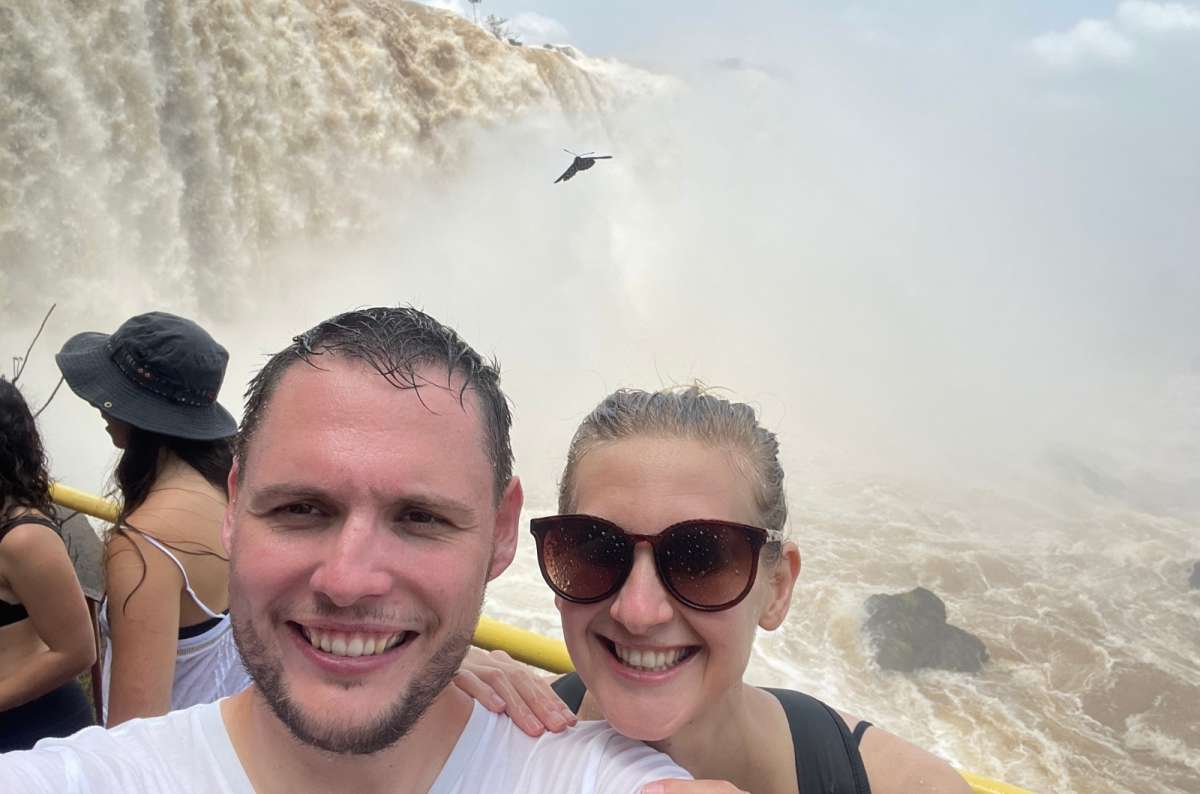
Time to take a selfie!
Best Hiking Sequence at Iguazú Falls
- Upper Circuit—2.4 km (1.5 miles)
Panoramic views from above the falls - Lower Circuit—2.9 km (1.8 miles)
Closer, wetter, and much louder—bring a waterproof phone case! - Macuco Trail—7.6 km (4.7 miles)
Jungle trail ending at a smaller hidden waterfall (Salto Arrechea) - Devil’s Throat—2.1 km (1.3 miles)
The grand finale: thunderous, unbelievable power. Prepare to be speechless.
You can read more details about each trail in my Iguazu Falls Itinerary.
After the Falls: Chill or Explore More
Once you’ve had your fill of hiking (and waterboarding by nature), you have two options:
- Head back to Loi Suites and relax by their amazing pools
- Light sightseeing in Puerto Iguazú:
- Landmark of the 3 Borders (where Argentina, Brazil, and Paraguay meet)
- La Aripuca (giant indigenous-style wooden structure and cultural center)
- Jardín de los Picaflores (tiny garden filled with hummingbirds)
Dinner: Jungle Restaurant, Puerto Iguazú
In the evening, I’d recommend dinner at the Jungle restaurant—it’s one of the better options in Puerto Iguazú. A bit on the pricey side, but totally worth it for the quality.
Day 7—Iguazú Falls—Brazil side + Helicopter Ride
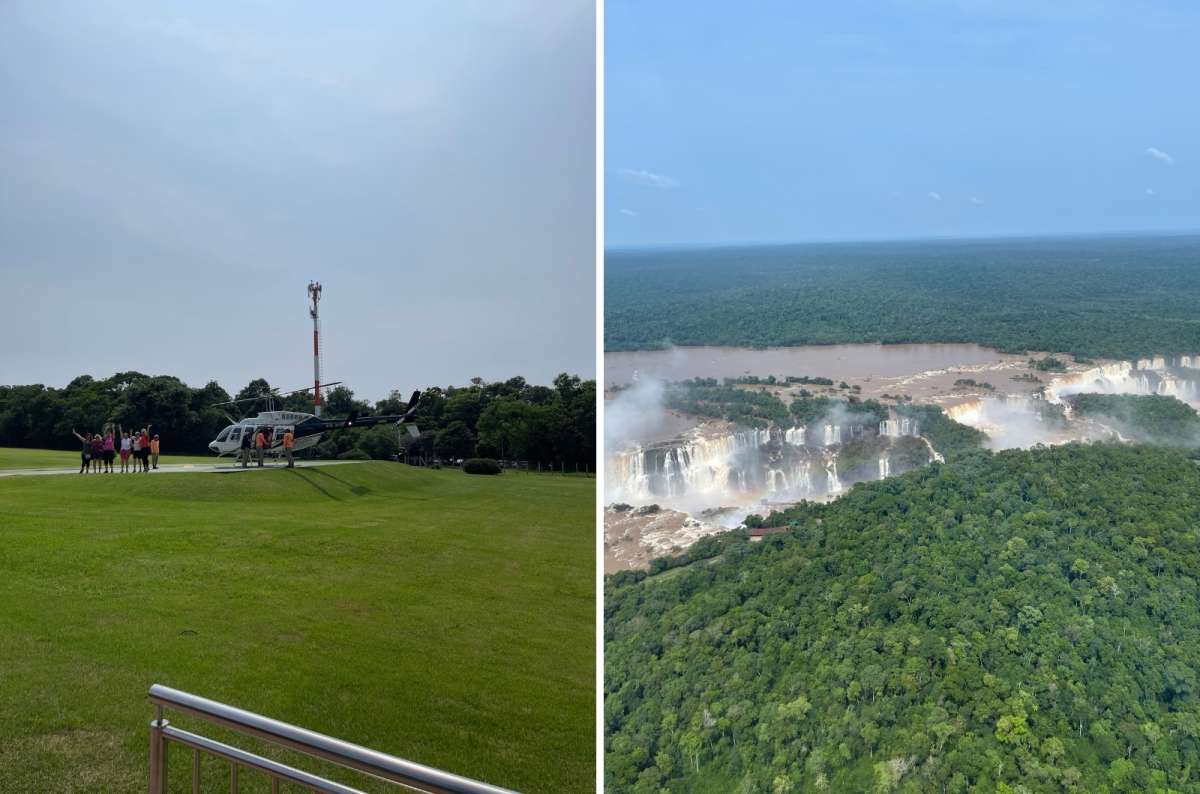
Time to check out the Iguazu Falls from different perspective
- Hotel recommendations: Loi Suites Iguazu hotel
- Further reading: Iguazu Falls 3-Day Itinerary
- Dinner: Loi Suites Hotel
- Entry fee: USD 20 (Parque Nacional do Iguaçu)
Crossing the Border to Brazil
Wake up early and have the hotel reception call a taxi (costs the same as hailing one yourself).
You’re heading to Parque Nacional do Iguaçu—Brazil’s most visited national park.
Pro tips:
- The drive + border crossing takes about 40 minutes.
- Bring your passport (no exceptions).
- Taxis have dedicated border lanes, which make crossing super-fast and stress-free.
- Total taxi cost: around USD 20 one way.
- Don't have the driver wait for you at the falls, as you will be paying for nothing. There are plenty of drivers always waiting by the entrance. This way, you will not have to be at the gate at a precise time, and you can just show up when you’re ready.
First Stop: Helicopter Ride Over Iguazú Falls
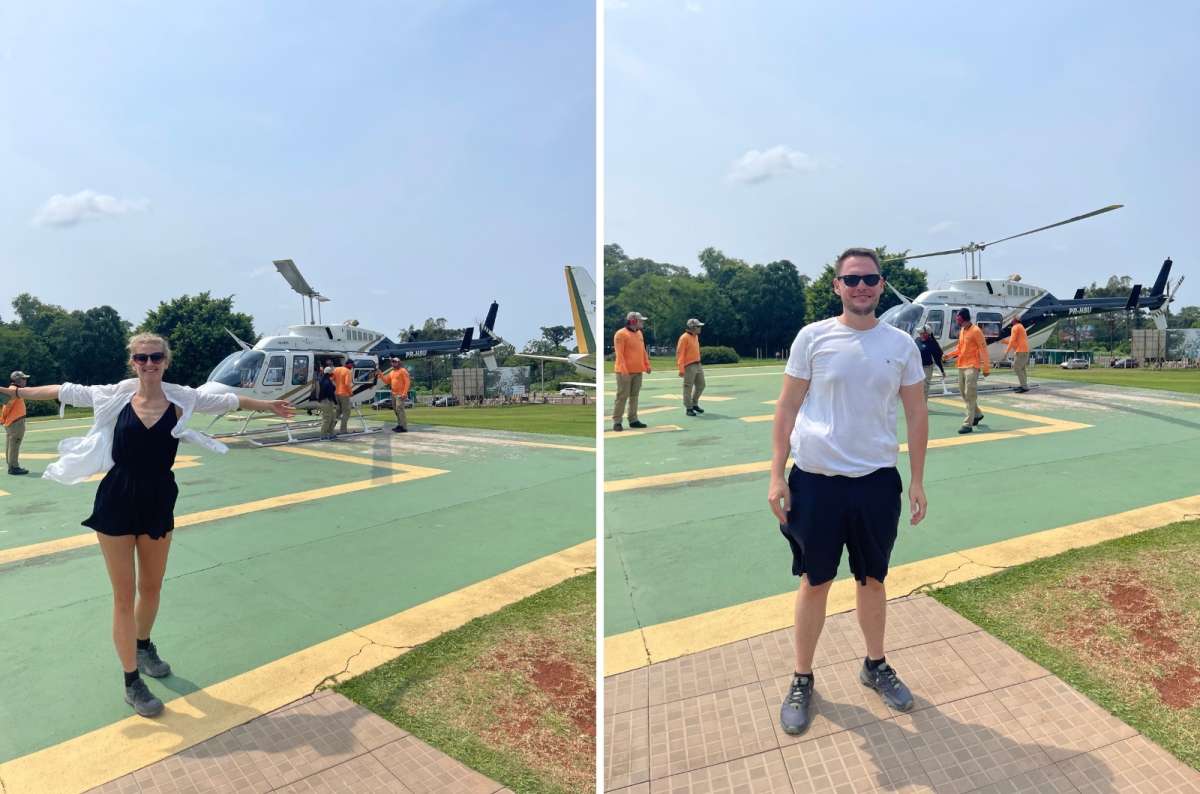
We're taking off!
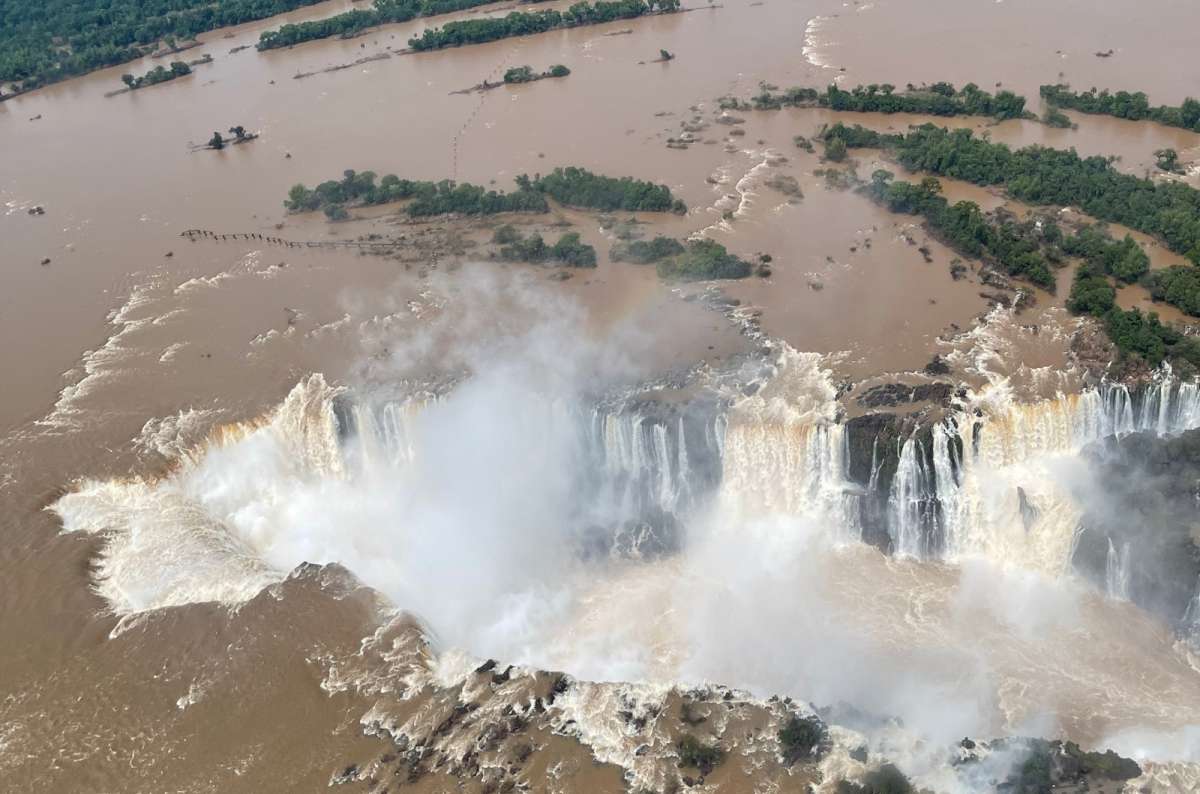
Taking in the power of Iguazú from a whole new angle
Before you even enter the park, stop at the helipad near the entrance for a helicopter tour.
- Cost: Around USD 150 per person
- Duration: About 30 minutes total (flight itself is ~10 minutes)
Why it’s worth it:
The aerial view of Iguazú Falls is nothing short of otherworldly. It’s the best perspective I had on the entire trip—massive, overwhelming, and unforgettable.
Tip:
- Reserve your spot online in advance if possible.
- Tell your pilot to wait for you—it’s a quick stop.
Explore the Brazilian Side of Iguazú Falls
After landing, head into Parque Nacional do Iguaçu. Inside, you’ll board eco-friendly buses that shuttle visitors through the jungle to the trailheads.
The wooden walkways on the Brazilian side offer:
- Epic panoramic views of the falls
- Walkways over the river and even into the mist
- A very different experience than the close-up Argentine side—more “grand scale,” less “getting soaked.”
Macuco Safari: Jungle Tour + Boat Ride
On your way back to the Visitor Center and gate, stop at the Macuco Safari. You’ll start with a drive through the jungle—it’s a bit lengthy and uneventful, but it’s worth it for the boat ride at the end.
The Brazilian boat excursion gets even closer to Iguazu Falls than its Argentine counterparts, making for an unforgettable experience. The whole safari and boat ride takes about 2 hours.
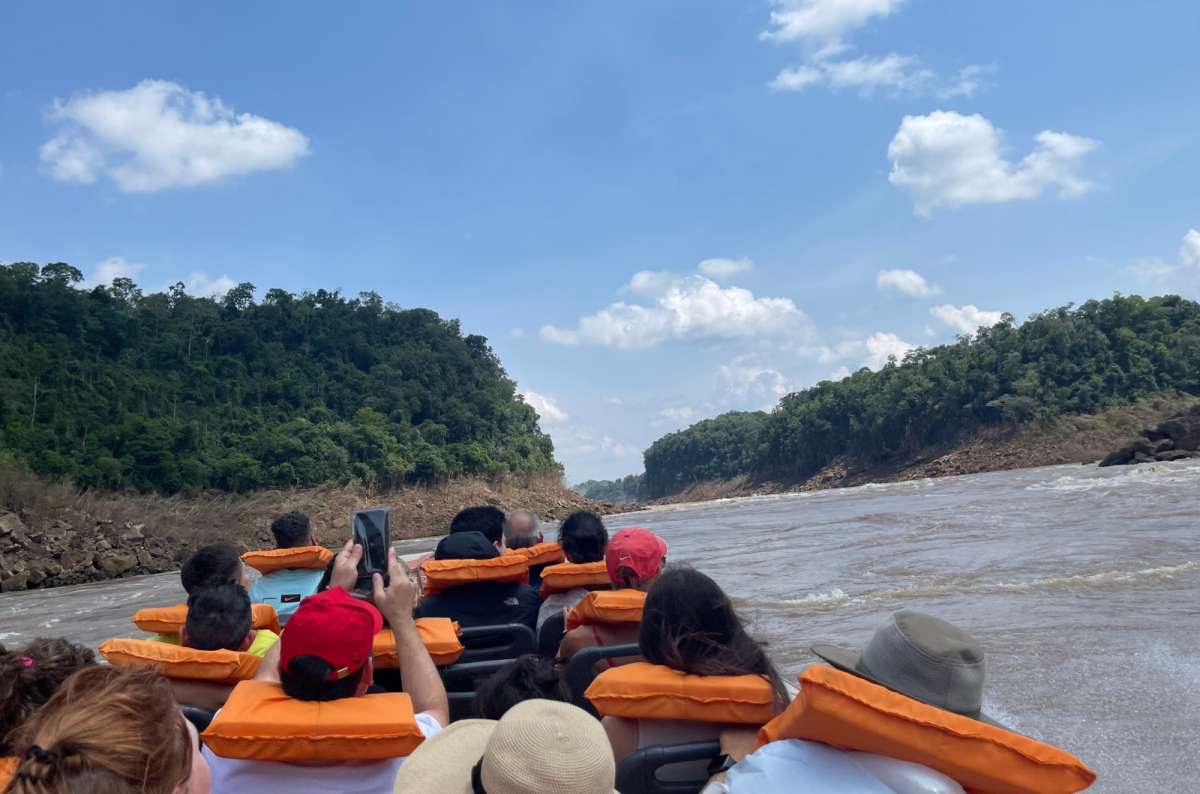
Boat ride through the jungle river near Iguazu Falls
Evening: Chill at Loi Suites Iguazú
By now, dusk will be setting in. Head back to your hotel, freshen up, grab a drink, and enjoy your final night by the best pool in Argentina. You’ll need it after a full day of border crossings, helicopters, soaking wet boat rides, and a ridiculous number of photos.
Day 8—Fly to Patagonia & Visit the Perito Moreno Glacier
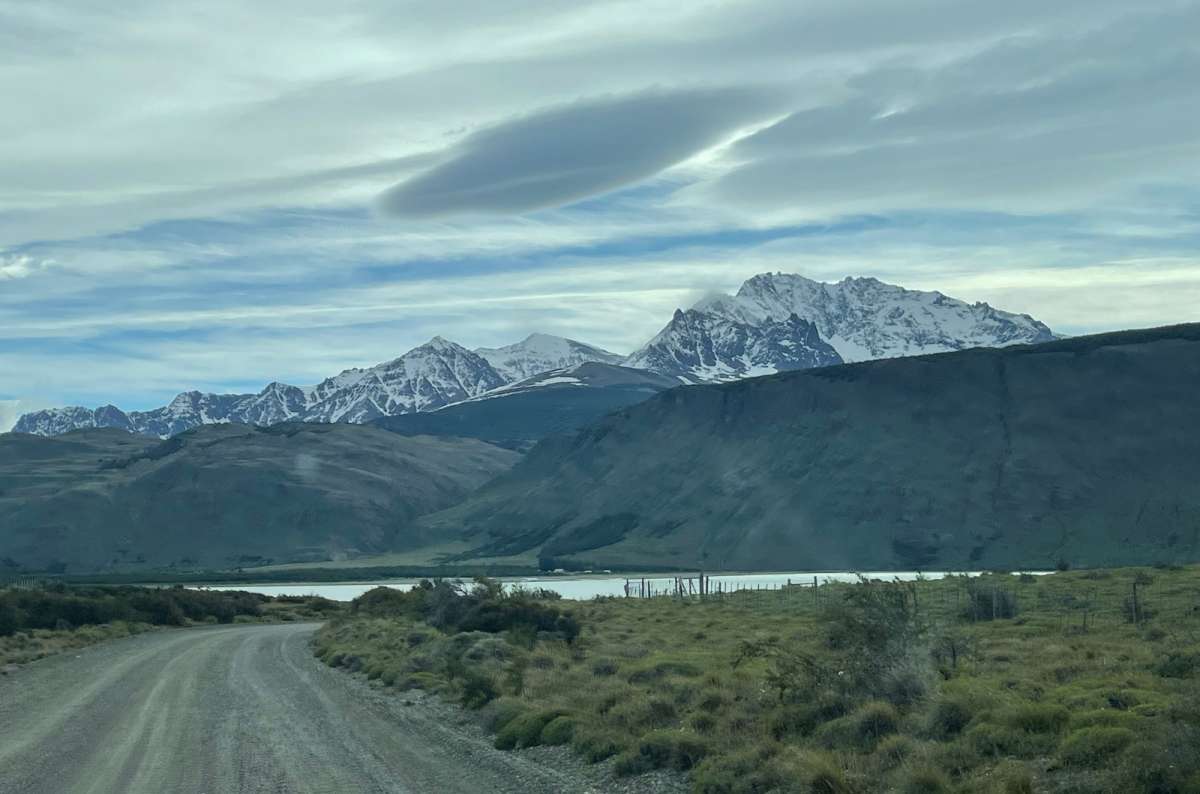
Los Glaciers National Park
- Main sites visited: Los Glaciares National Park
- Hotel recommendations (Days 8 and 9): Imago Hotel
- Further reading for days 8 and 9: Argentina Patagonia Itinerary | Hiking in Patagonia,
- Dinner: Imago Hotel
- Distance driven: 75 km (45 miles)
- Entry fee: USD 30/pp
Flying from Iguazú to El Calafate
Wake up very early—I woke up at 5 a.m.—and head to the airport.
Argentina is huge, and you dont want to spend the full day of your holiday flying.
- Flight 1: Iguazú → Buenos Aires (1 hour)
- Flight 2: Buenos Aires → El Calafate (4 hours)
Flight costs: USD 200–300 (early morning flights are usually cheapest).
Getting Around El Calafate
Once you land in El Calafate, you have two options:
- Shuttle bus to your hotel (if you're taking tours)
- Rent a car (highly recommended for this 2-week itinerary)
Car rental tip: Go for the smallest car available—roads are excellent and parking is easy. Rental prices are high, so book early. I had some serious trouble booking a rental even 2 months upfront. Also, I made a mistake of renting a Toyota Hilux, which was absolute overkill for the infrastructure and I just paid more for nothing.
Pro Tip: If you're not on a tight schedule, you don’t have to rent a car—organized tours are cheaper and hassle-free.
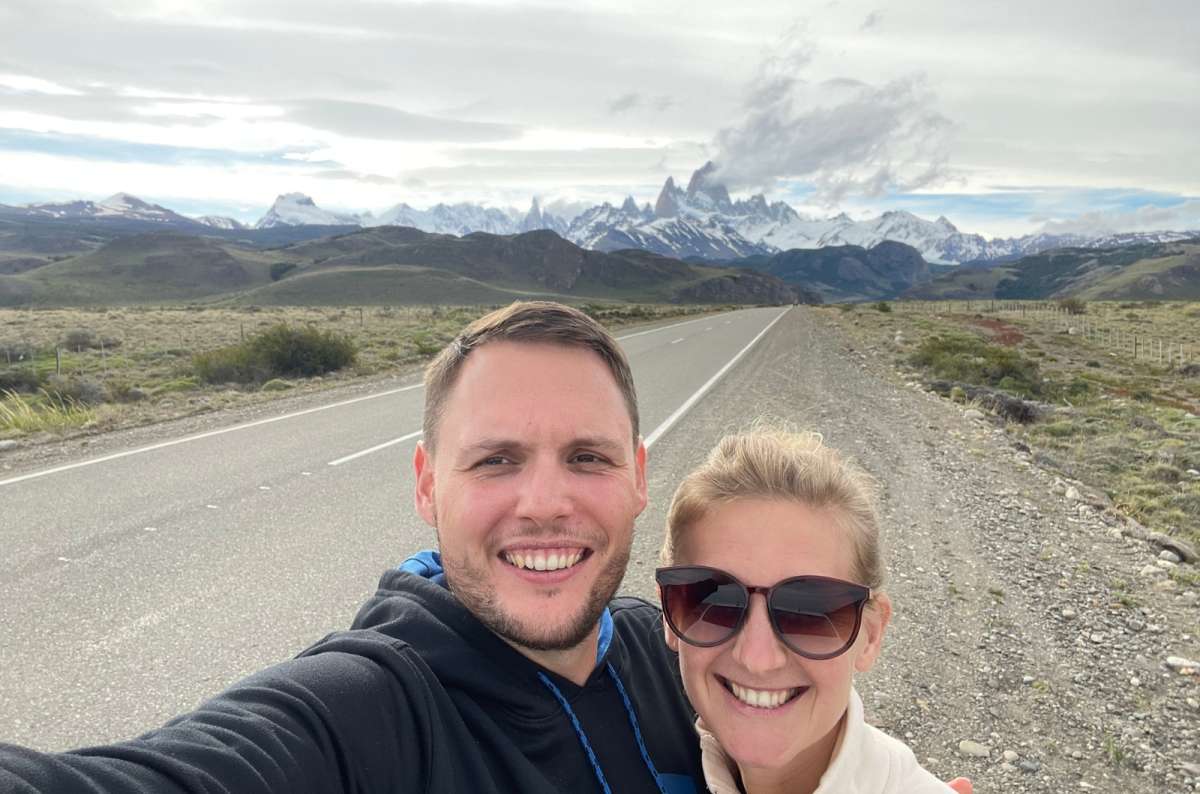
Selfie with Mount Fitz Roy in Patagonia
Visit Perito Moreno Glacier
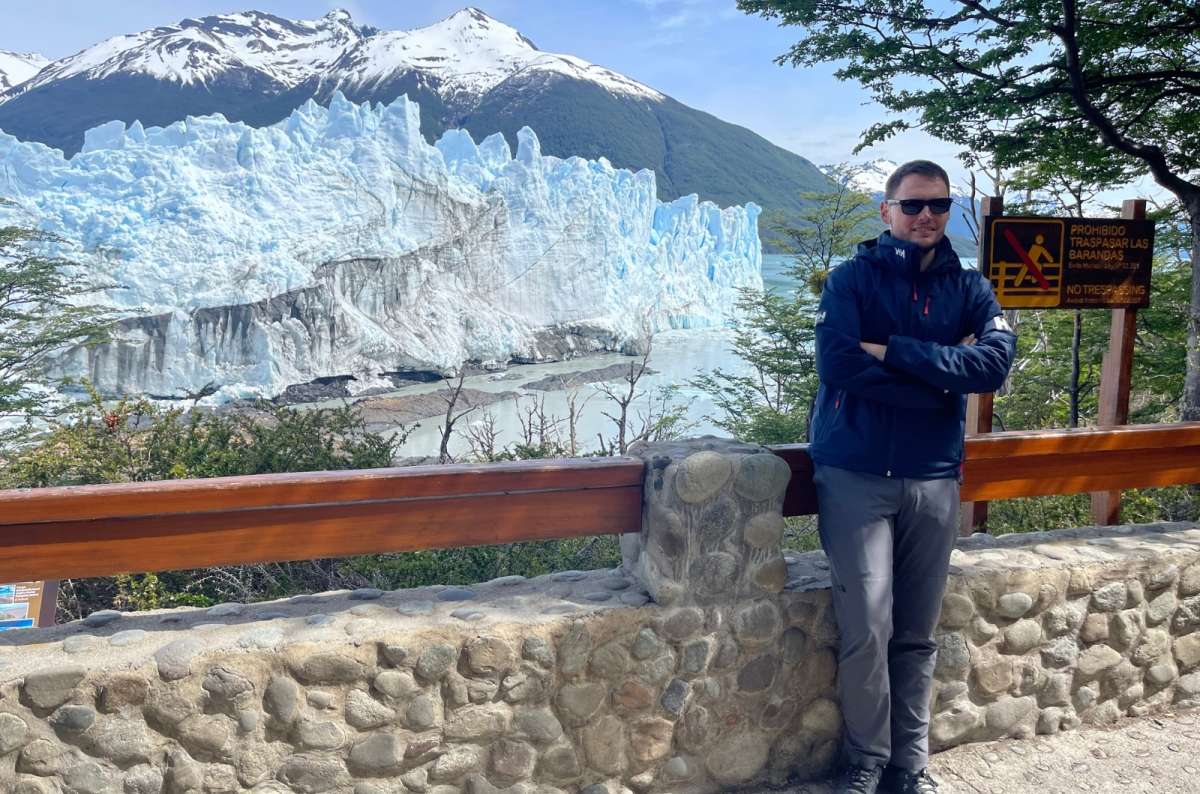
At the stunning Perito Moreno Glacier in Patagonia
After picking up your car, head to Perito Moreno Glacier—one of the country's highlights, just a 1-hour (70 km/45 mi) drive away.
Once you park, exploring is straightforward: wooden walkways, color-coded for easy navigation, lead to all the best viewpoints. I recommend walking them all to get the full experience from every angle.
Top Recommendations:
- Walk all the circuits—each one offers a unique perspective.
- Plan 2–3 hours total for exploring slowly and soaking it all in.
The glacier’s massive size and the constant cracking sounds were mesmerizing. After an hour, I became a bit of a “cracking sound hunter,” eagerly listening for the next ice fall, followed by a thunderous crash into the water.
Pro Tip: This is an amazing spot for a snack break—sit on the wooden trails and enjoy your meal with unbeatable glacier views. There was nothing like it for me—eating with Perito Moreno thundering in the background.
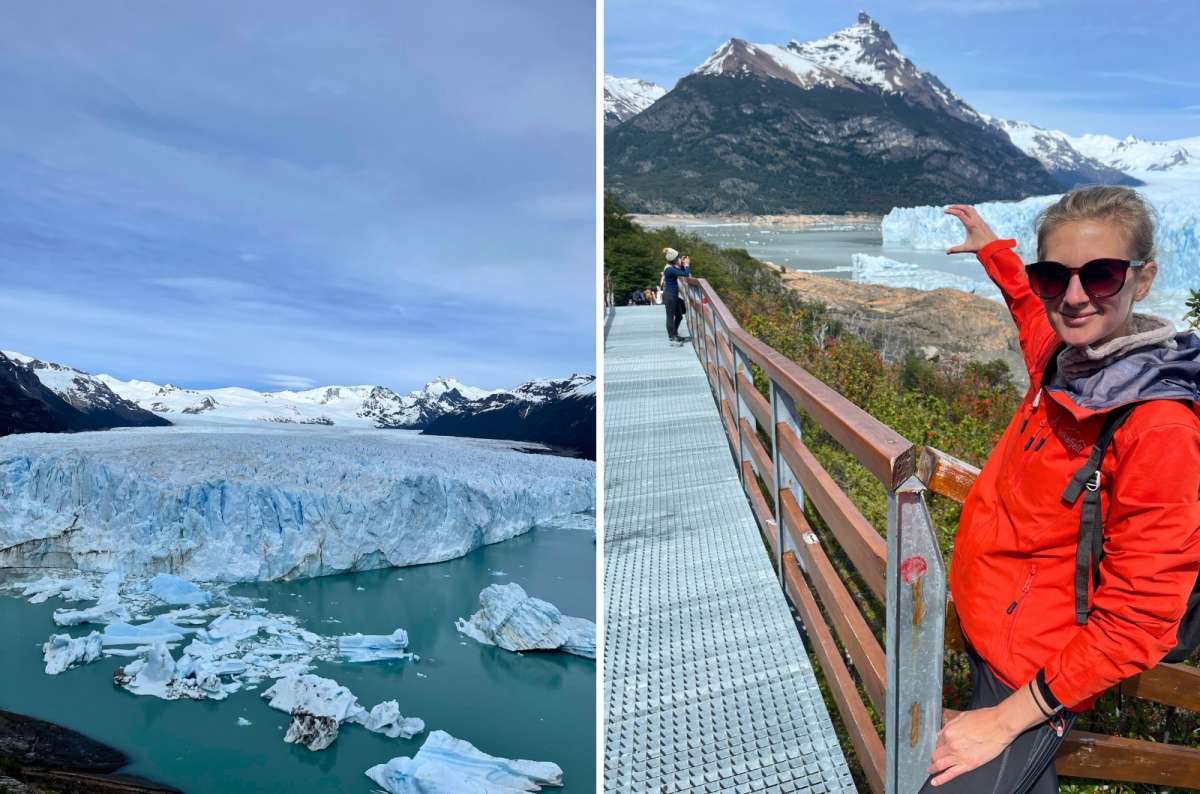
Wait until you hear chunks of ice breaking off the glacier—it sounds like thunder!
Evening: Relax and Recharge
Once you’ve taken in enough breathtaking scenery, head back to your hotel to relax and enjoy some spa time. You’ll need it for tomorrow’s physical adventures!
Day 9—Ice Climbing & Kayaking Perito Moreno
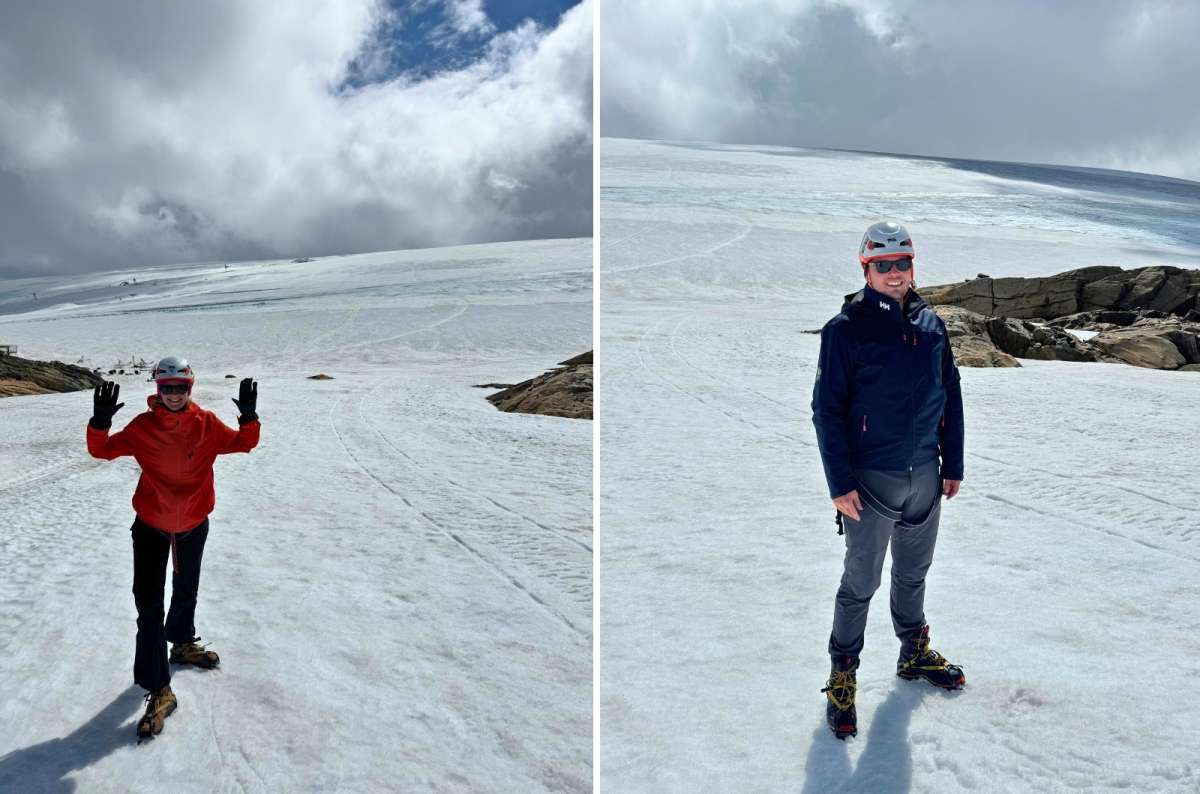
We are ready! @ Perito Moreno Glacier
- Main activities: Ice climbing on Perito Moreno Glacier, optional kayaking
- Distance driven: 250 km (155 miles), about 3 hours to El Chaltén
- Drive to El Chaltén: About 3 hours, covering 250 km (155 miles)
Today’s all about real adventure: strapping on crampons, grabbing an ice axe, and walking and climbing across a living glacier. After that, if you’re feeling extra bold, you’ll kayak among floating icebergs! I did it in Chilean Torres Del Paine as well and they are comparable. If you are traveling in the both destinations you are going to be fine with just one glacier kayaking.
Morning: Ice Climbing on Perito Moreno Glacier
- Meeting point: On-site at the glacier (after short boat ride)
- Tour price: Around USD 220 (depends on operator)
- Duration: 4–5 hours total (including boat trip, gear prep, and climbing)
Pro tip: Book your ice-climbing tour well in advance—at least 4 weeks ahead—as we struggled to secure a spot just 2 weeks before. Expect to pay around USD 220, depending on the tour operator.
The guides are highly skilled and will help you get fully prepared for the experience. But be sure to follow their instructions closely—glacier walking can be dangerous if you don’t stick with your guides.
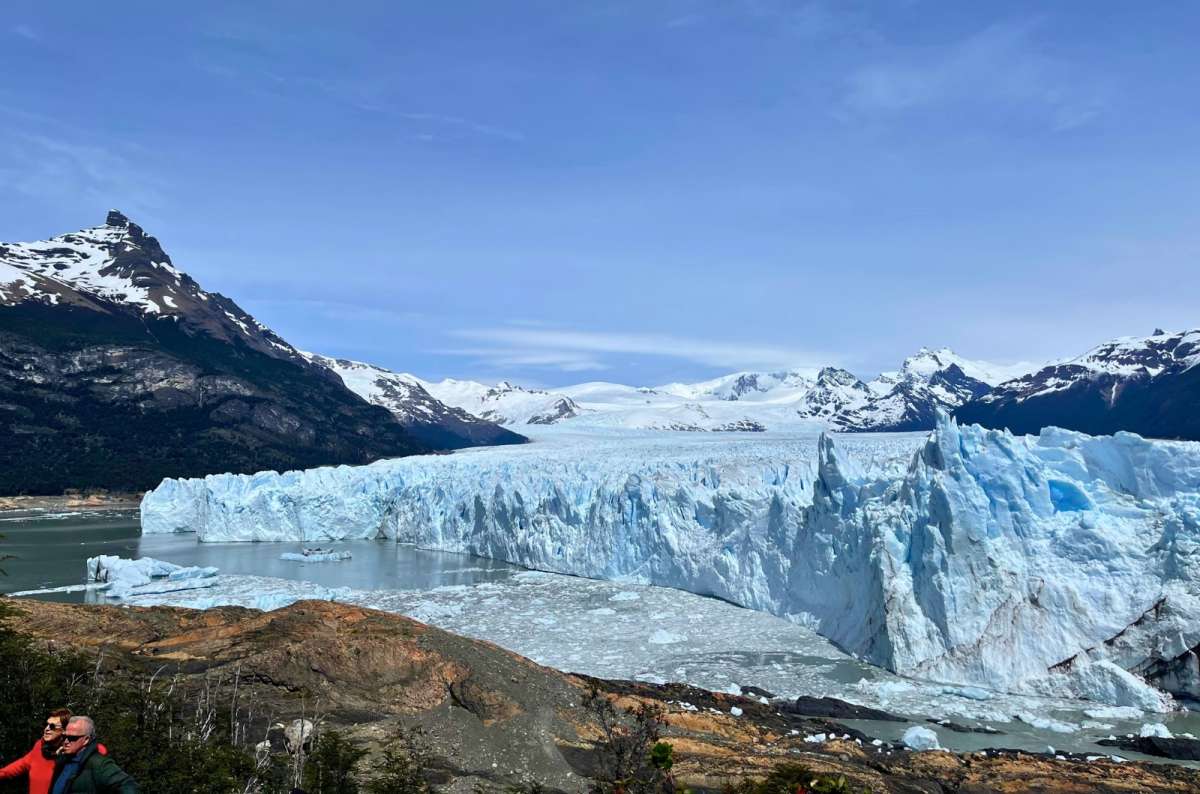
Ready to walk on this puppy?
Also, keep in mind that it’s more physically demanding than it appears. You’ll be carrying your own gear, and walking with crampons takes some getting used to! After walking with crampons in Norway and Chile, where I almost killed myself (ok, I’m slightly exaggerating), I was glad I had a training here.
On the bright side, you’ll be having the time of your life, with one of the world’s most breathtaking landscapes as the backdrop for your glacier trek!
Optional Afternoon: Kayaking Among Icebergs
By the time you return, it’ll be around midday—perfect for a quick lunch. If you’re still feeling energetic and for some more stunning scenery, consider reserving a spot on an afternoon kayaking tour for even more adventure!
The kayaking tour lasts about 1.5 to 2 hours, and for me, it was the must-do activity. I think back on it constantly—it felt like a true adventure, paddling among floating icebergs in freezing waters. I felt like a character straight out of a Jack London novel!
You’ll get close enough to the glacier for some incredible photos, with plenty of time to soak it all in.
After your glacier adventures, you have two options:
- Return to El Calafate for a well-deserved steak and spa evening. There is much wider array of restaurants than in El Chaltén.
- Drive directly to El Chaltén (2–3 hours) I drove as I wanted to have the longer hike the next day.
Either choice sets you up perfectly for Patagonia’s next jaw-dropping highlight.
Day 10—Hiking to Laguna Torre in El Chaltén
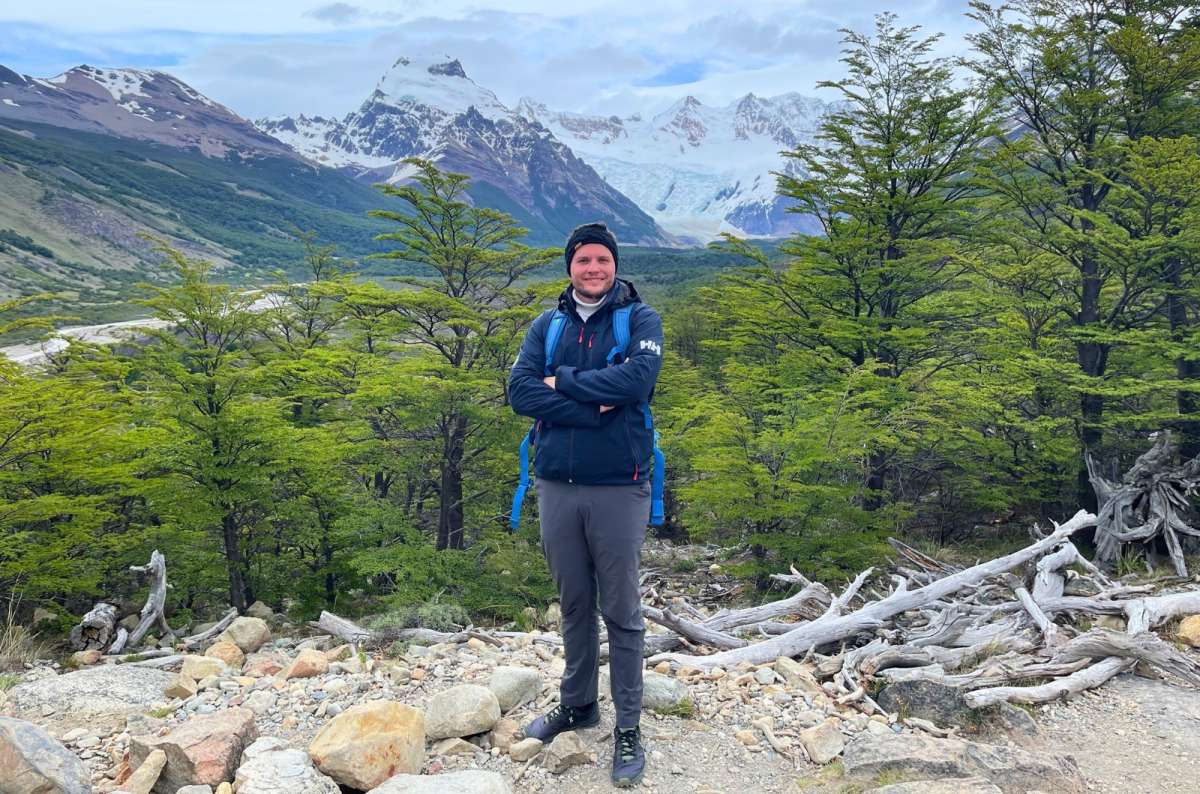
Happy to be here! @ Laguna Torre hike
- Main site visited: Los Glaciares National Park (El Chaltén area)
- Hotel recommendation: Hotel Destino Sur
- Further reading: Argentina Patagonia Itinerary
- Distance driven: 210 km (about 2 hours)
Today’s program is easily doable either way, especially in summer, when the days are long, and the sun sets late.
After arriving in El Chaltén, I recommend settling in and heading out for a hike immediately. You’ve just arrived in one of the most breathtaking destinations for hikers—Cerro Fitz Roy and its stunning surroundings. I had high expectations for El Chaltén, but it completely blew me away. Honestly, I was shaken by the sheer natural beauty of the place—it’s that incredible.
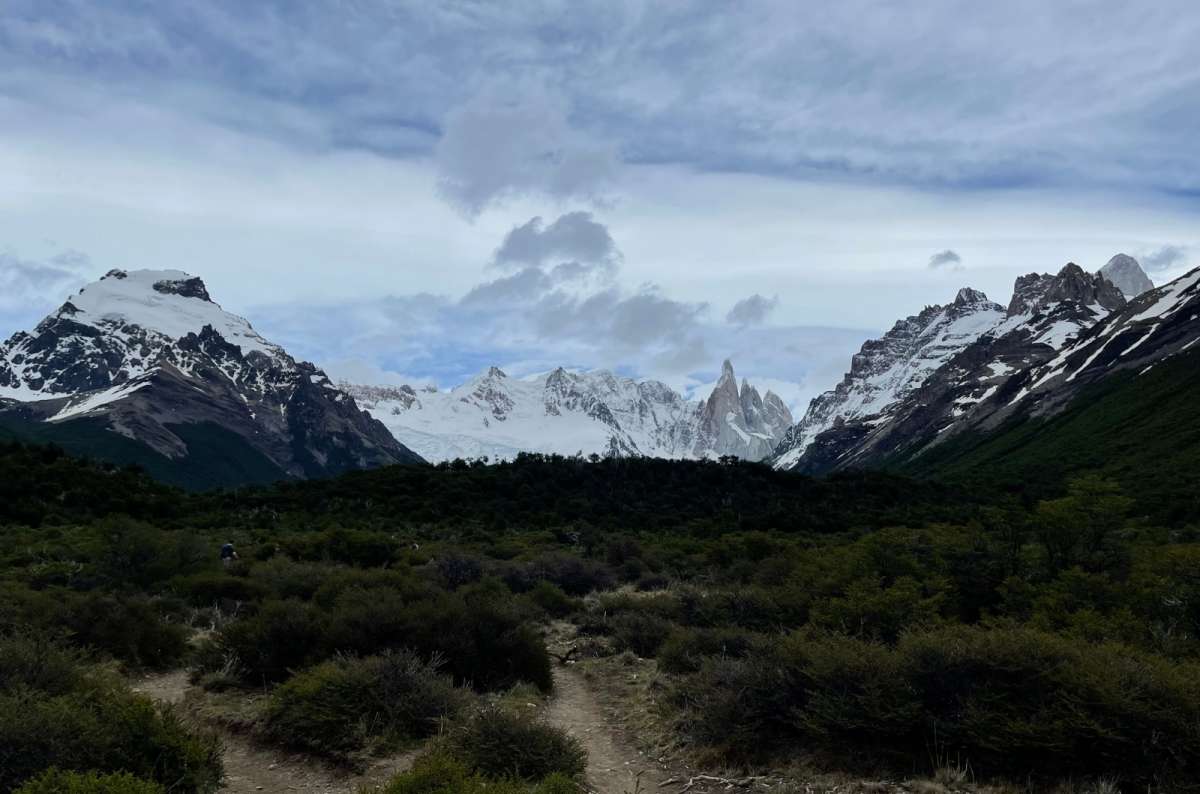
Hiking trail with a view of Mount Fitz Roy
Lago Torre Hike
- Trailhead: Directly from town / your hotel
- Difficulty: Medium
- Time needed: 5–7 hours total (with lots of photo stops)
I recommend starting right from your hotel and hitting the trail to Lago Torre. It’s a medium-difficulty hike that starts with a bit of an uphill push, but then levels out into mostly flat terrain, with a gentle climb at the end. And what an ending it is—you’ll arrive at Lago Torre, with breathtaking views of the towering Cerro Fitz Roy.
Honestly, I think this hike beats the more famous Lago de los Tres. It’s significantly easier and delivers equally stunning views. While everyone says it takes about five hours, it’s likely to take longer because, trust me, you’ll be stopping constantly to snap pictures. And by the time you reach the lake, you’ll want to sit down, soak it all in, and just enjoy the moment.
Pro Tip: Save some energy for the way back! It might feel tougher than the way up because of the downslope, which can be surprisingly hard on your knees. Take it slow, especially if you’ve been snapping photos and soaking in the views all day—you’ll want to make it back comfortably!
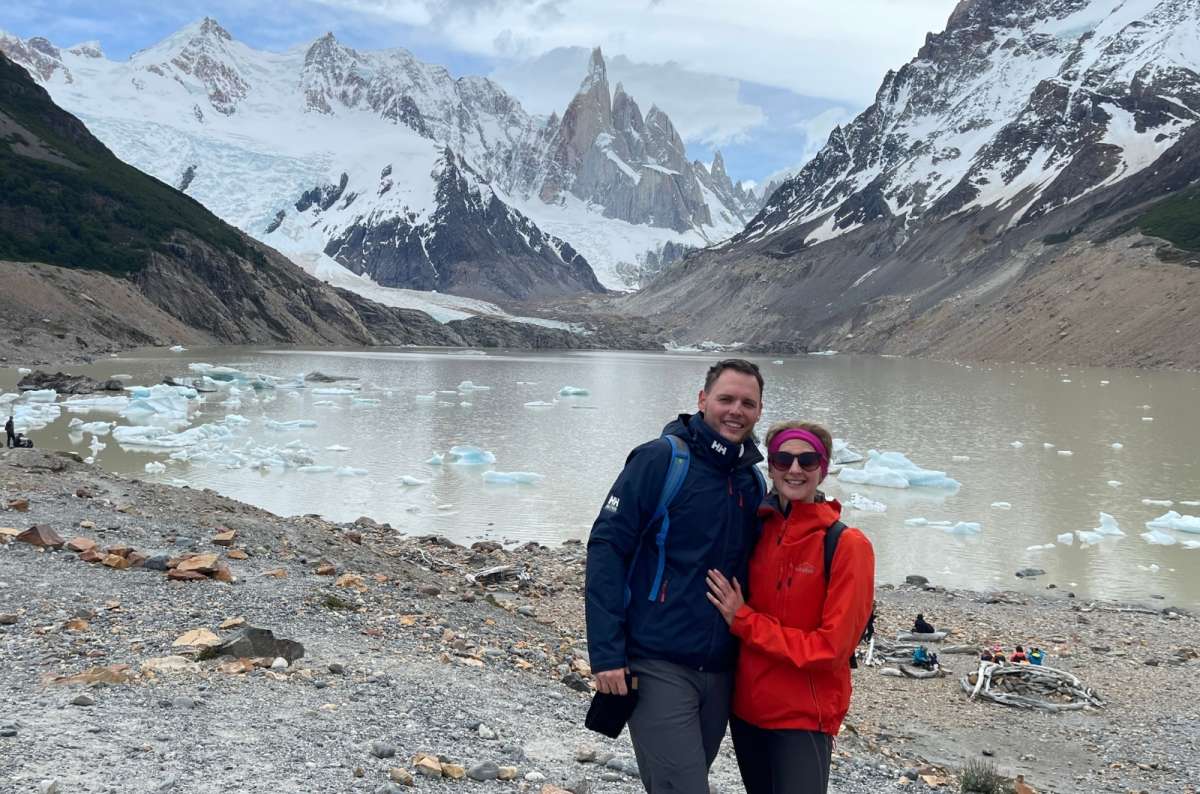
Admiring the view of Mount Fitz Roy and the glacier lake
Optional Bonus: Mirador de los Cóndores
- Trailhead: Start from the visitor center
- Difficulty: Easy
- Time needed: 2 hours round-trip
If you still have some energy left, consider adding a short hike to Mirador de los Cóndores. This trail takes you above El Chaltén, and as you gain elevation, you’ll be treated to jaw-dropping views of Cerro Fitz Roy and Lago Viedma. Trust me, you’ll be star-struck all over again.
The hike takes about two hours round-trip, so it’s manageable as a bonus trek. However, I’d think carefully before overdoing it—tomorrow’s hike is going to be a real challenge. For more details on both hikes, check out my full Patagonia Itinerary!
But be strategic—tomorrow’s hike will be a serious physical challenge.
If you’re already tired, save your strength.
Dinner + Prepping for Tomorrow
After today’s warm-up hike, I recommend grabbing an early dinner and heading to bed early. That way, you’ll be well-rested and ready to start tomorrow’s hike bright and early.
During the summer, the trails can get especially crowded, so an early start is key to beating the rush and enjoying the scenery in peace.
Day 11—Epic Laguna de los Tres Hike to Cerro Fitz Roy
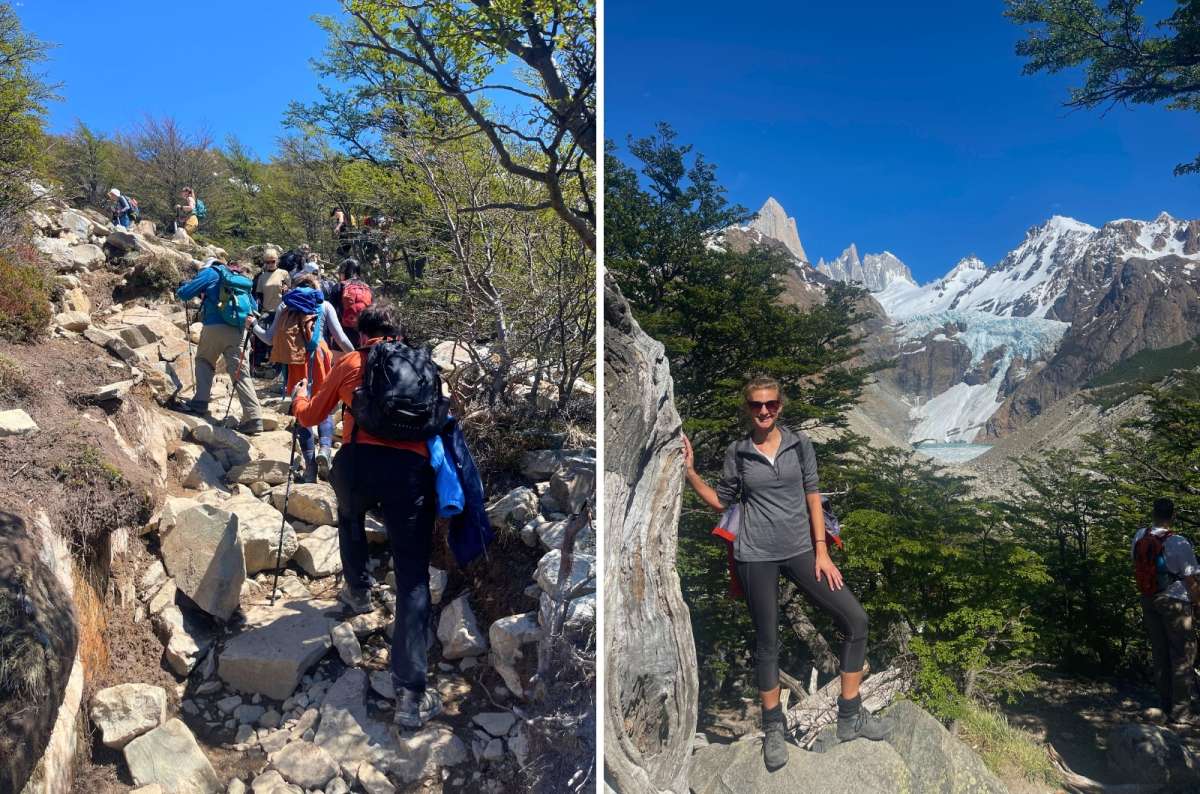
Challenging (and sometimes busy!) hike with rewarding views in Patagonia.
- Main site visited: Laguna de los Tres, Cerro Fitz Roy (Los Glaciares National Park)
I’ve traveled, I’ve trained (I didn’t, but I could have), because this day and hike was supposed to be the pinnacle of my Argentina adventure... (Spoiler: ...but the highlight ended up being the Laguna Torre hike from yesterday, and Iguazu Falls.)
Starting the Hike: I had two options and you do too
- From your hotel in El Chaltén (standard route)
- Drive to El Pilar trailhead (better choice)
I chose to start from El Pilar, near the Puente sobre el Río Eléctrico.
There’s a small parking lot there, and honestly, starting from El Pilar is a game-changer.
- You see more glaciers and valleys.
- It’s less crowded early on.
- The scenery through the forested valley is absolutely stunning.
Pro tip: Pay close attention to signs—the El Pilar trail is different from the main Chaltén one.
The Hike to Laguna de los Tres
- Total time: 6–8 hours (round trip)
- Elevation gain: 800 meters (2,625 feet)
- Difficulty: Hard (especially the last section)
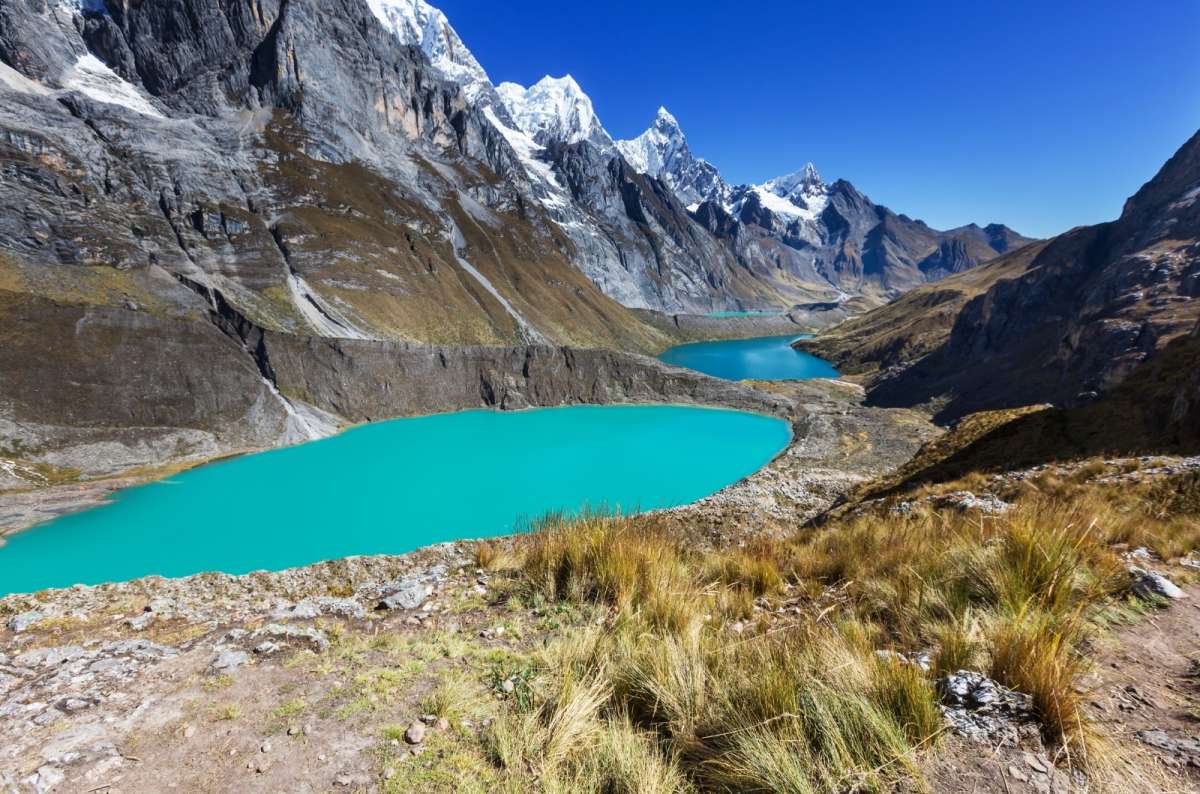
Stunning glacial lakes near Laguna de los Tres
The hike begins gently through beautiful forests, with glacier views almost the entire way.
It’s one of the most beautiful valleys I’ve ever seen—and I don’t say that lightly.
The trail gradually climbed, with plenty of chances to stop for photos and breathers.
The Final 2 Kilometers: The Real Challenge
This is where things get serious:
- Steep, rocky slopes
- 600 meters of elevation gain crammed into a short stretch
- Loose gravel = high slipping risk
Pro tip: Start early! We hit a traffic jam on the slope, and believe me, this is the worst place to get stuck. It took me 2 hours just to cover the final section.
At the Top: Views That Defy Description
Once you make it, take your time:
- Spend at least 1–2 hours enjoying the top
- I used my time catching my breath, slowly recovering from the feeling of dying, to become a photo enthusiast
Pro tip: Walk to the left side of Laguna de los Tres. There’s a hidden viewpoint over the jaw-dropping Laguna Sucia, and it’s absolutely worth the extra steps.
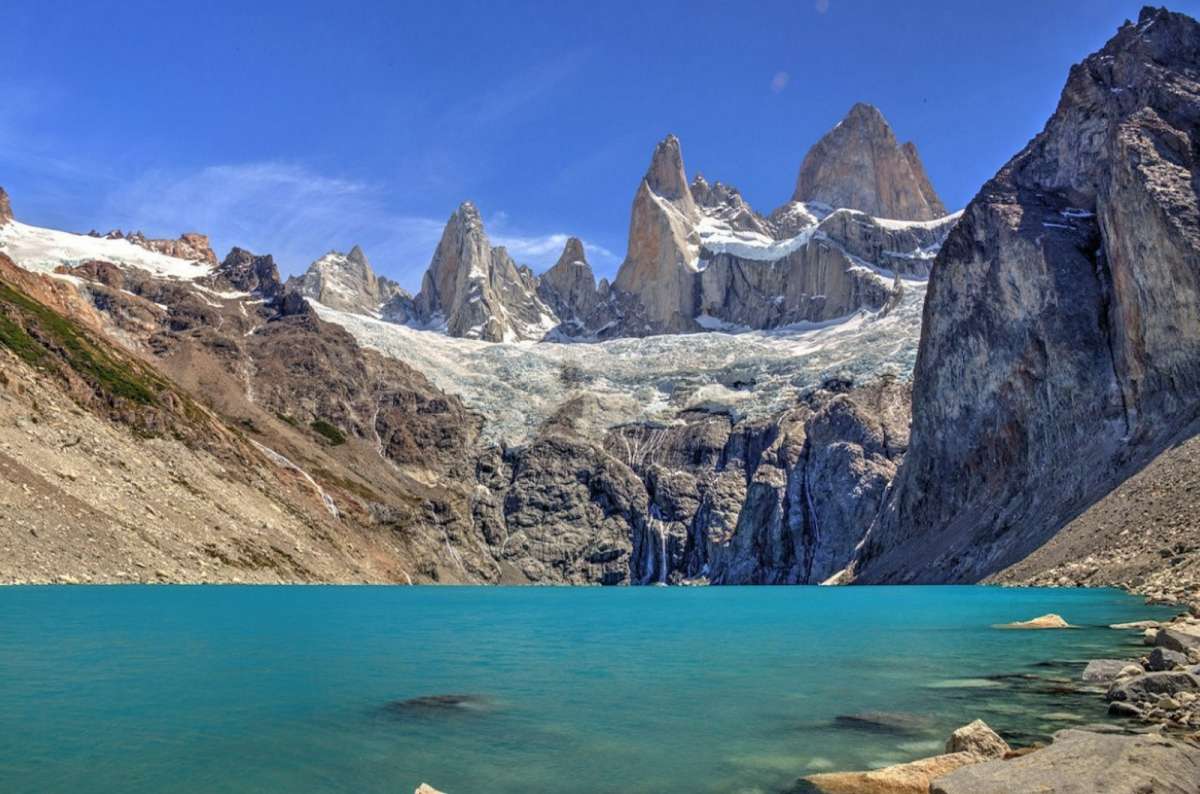
One of Patagonia’s hidden gems
Going Down: Take It Slow
The descent was pretty treacherous and slippery. I watched at least 10 people fall—myself included. Go slow, stay cautious, and protect those knees and ankles. (It’s way better to finish tired but uninjured.)
Evening: SPA and Well-Deserved Feast
After returning to my hotel, I rewarded myself:
- Hit the SPA at Destino Sur—one of the few hotels with a real spa in El Chaltén.
- Enjoyed a long, well-deserved dinner.
I don't really recommend a restaurant here; they are all pretty meh.
You can read more details about Argentina hikes in my article.
Day 12—“Hidden Gem Hike” at Laguna El Diablo + Travel to Ushuaia
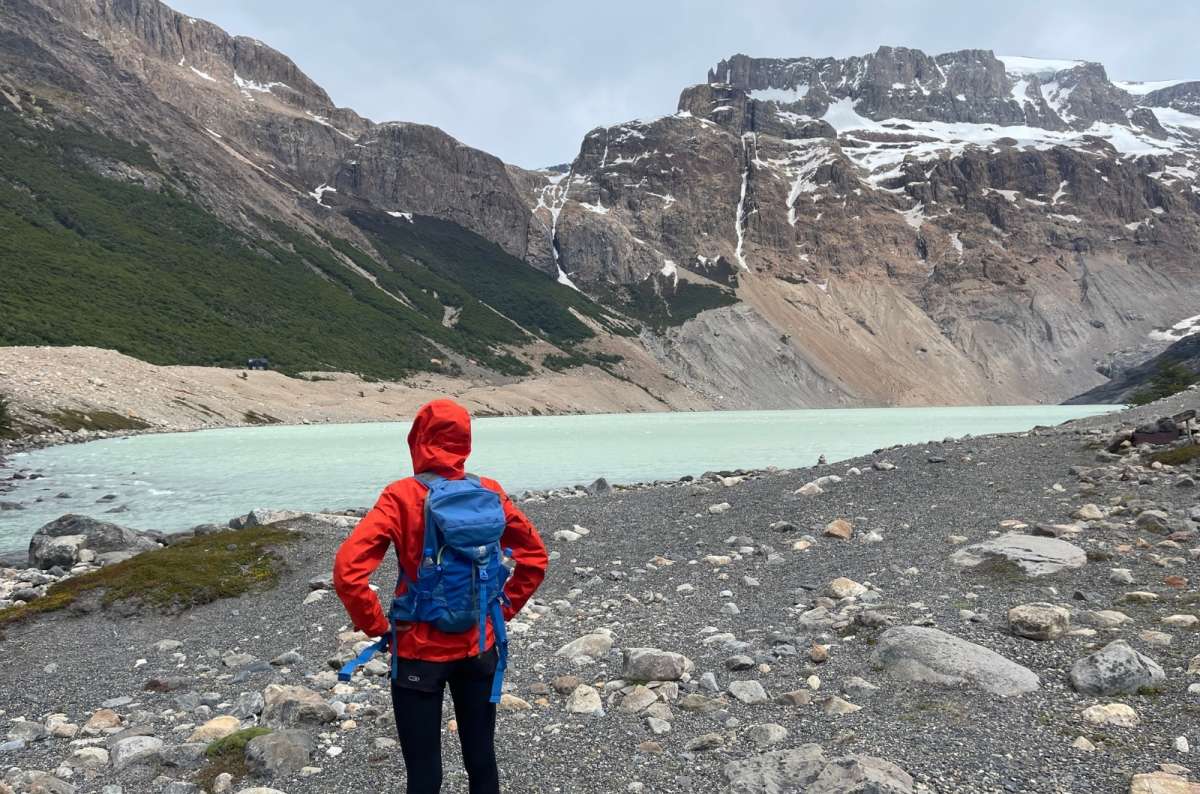
Taking in the views @ Laguna El Diablo
- Main sites: Reserva Los Huemules, Laguna El Diablo
- Hotel Recommendation in Ushuaia: Hotel Albatros
- Driving distance: 230 km (2,5 hours)
- Further reading: Hiking in Patagonia
I had some trouble combining this day with the transfer to Ushuaia, but if I were to do it again, I’d stick to the same plan. I wouldn’t recommend rushing to catch an early morning flight—instead, opt for a later one.
Morning: Hike to Laguna El Diablo (Reserva Los Huemules)
- Difficulty: Moderate
- Time needed: 2–3 hours
- Terrain: Mostly peaceful forest along a riverbank. (it usually is, I had a windy weather as all hell broke loose)
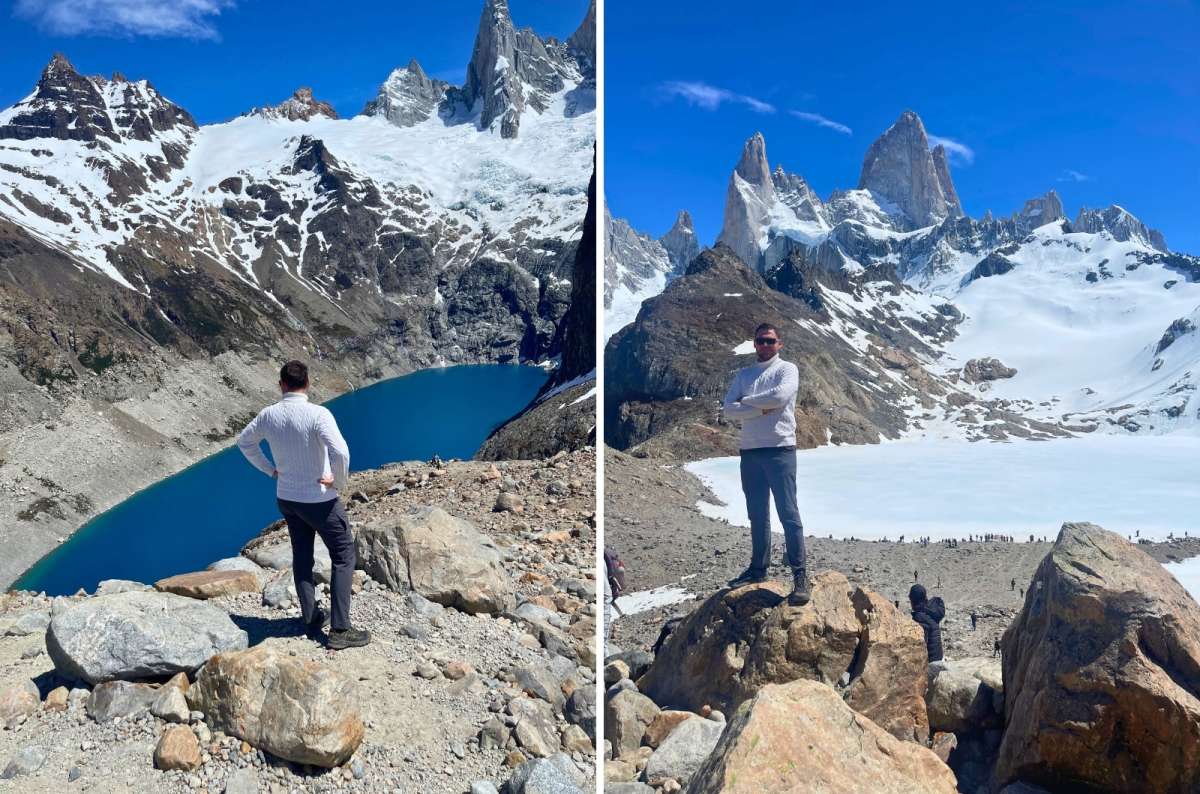
Wouldn´t want to fall in there @ Laguna El Diablo
Wake up early and head out to the Private Reserve of Huemul, which is located a bit further down the road past the Puente sobre el Río Eléctrico, where you likely parked the day before. The reserve has a proper parking lot, and keep in mind that you’ll need to pay for a hiking permit to enter. It’s totally worth squeezing this hike in before moving on to your next adventure!
Fun Fact: The Private Reserve of Huemul is one of the few places in Argentina where you can spot the elusive Patagonian mini deer, the Huemul, which the park is dedicated to protecting. Keep your eyes peeled—you might just catch a glimpse of these adorable and rare creatures!
It wouldn’t be South America without something named El Diablo, right? But jokes aside, Laguna El Diablo is a very moderate hike that takes about 2–3 hours to complete. Most of the trail winds through a peaceful forest along the riverbank. The real highlight, though, is at the end—when you’re greeted by the brutal cliffs towering dramatically over the laguna.
Pro tip: Bring plenty of warm clothes! The lake is incredibly windy, and the chill from the wind makes it feel much colder than expected. I learned this the hard way and was saved only because my girlfriend brought me a hat. Stupid me.
Afternoon: Drive and Flight to Ushuaia
- Drive 230 km (~2.5 hours) to El Calafate Airport.
- Flight from El Calafate to Ushuaia takes about 1 hour 20 minutes.
- Multiple flights are available throughout the day.
Once you land in Ushuaia:
- Rent a car (usual drill—you’ll need it for the next few days).
- Check into your hotel, relax, and get ready for Patagonia’s southernmost adventures!
Day 13—Explore Ushuaia—The end of The World
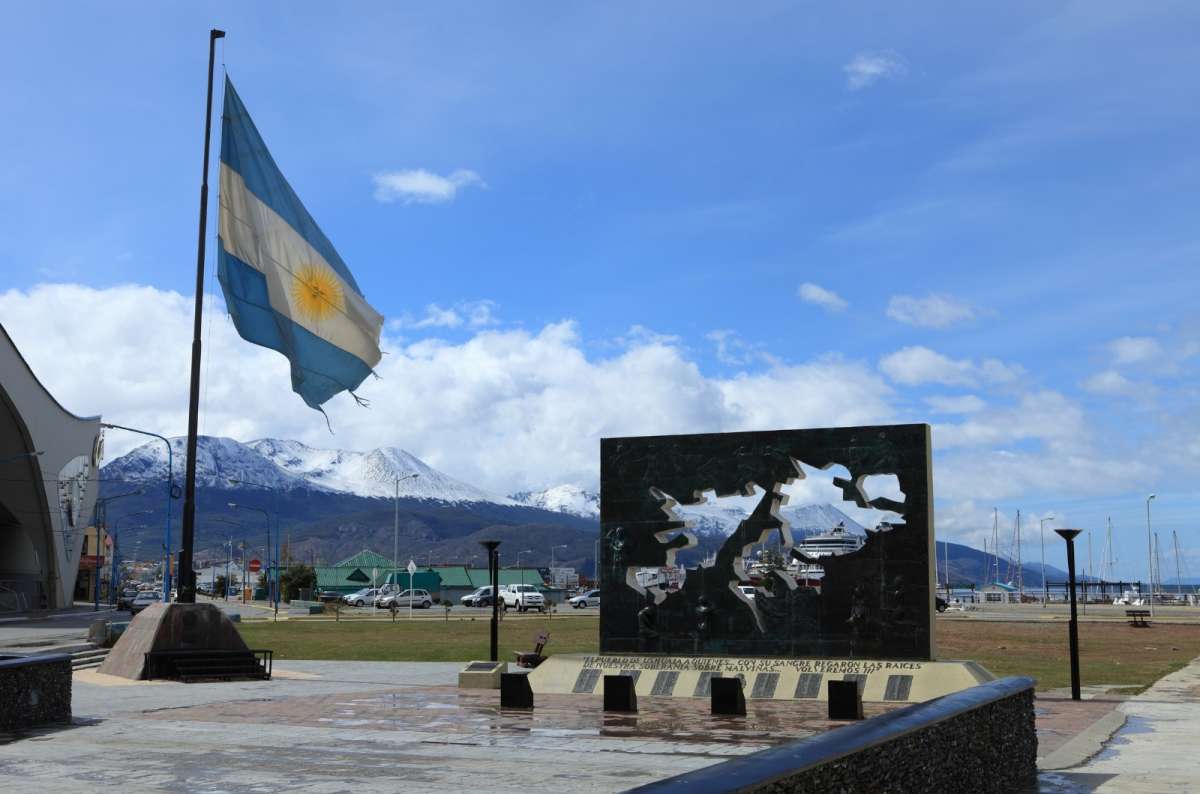
Ushuaia—standing proud at the end of the world
- Main sites visited: Ushuaia town, Tierra del Fuego National Park
- Hotel recommendation: Hotel Albatros
Welcome to the end of the world! Today’s a little less intense physically, but it’s packed with incredible views, history, and adventure.
Morning: Stroll Through Ushuaia
Start your day exploring Ushuaia’s charming town center:
- End of the World Sign—You have to take the classic photo. No arguments.
- Museo Marítimo y del Presidio—Former prison turned museum. Fascinating glimpse into how tough life was down here.
Pro tip: Ushuaia has decent cafés and bakeries (try local chocolate or pastries)—a perfect way to warm up before hitting the national park.
Afternoon: Tierra del Fuego National Park
- Driving distance: 15 minutes from Ushuaia
- Entry fee: USD 10
You absolutely can’t skip Tierra del Fuego National Park—it’s where the Andes meet the ocean in a crazy mix of mountains, forests, and bays.
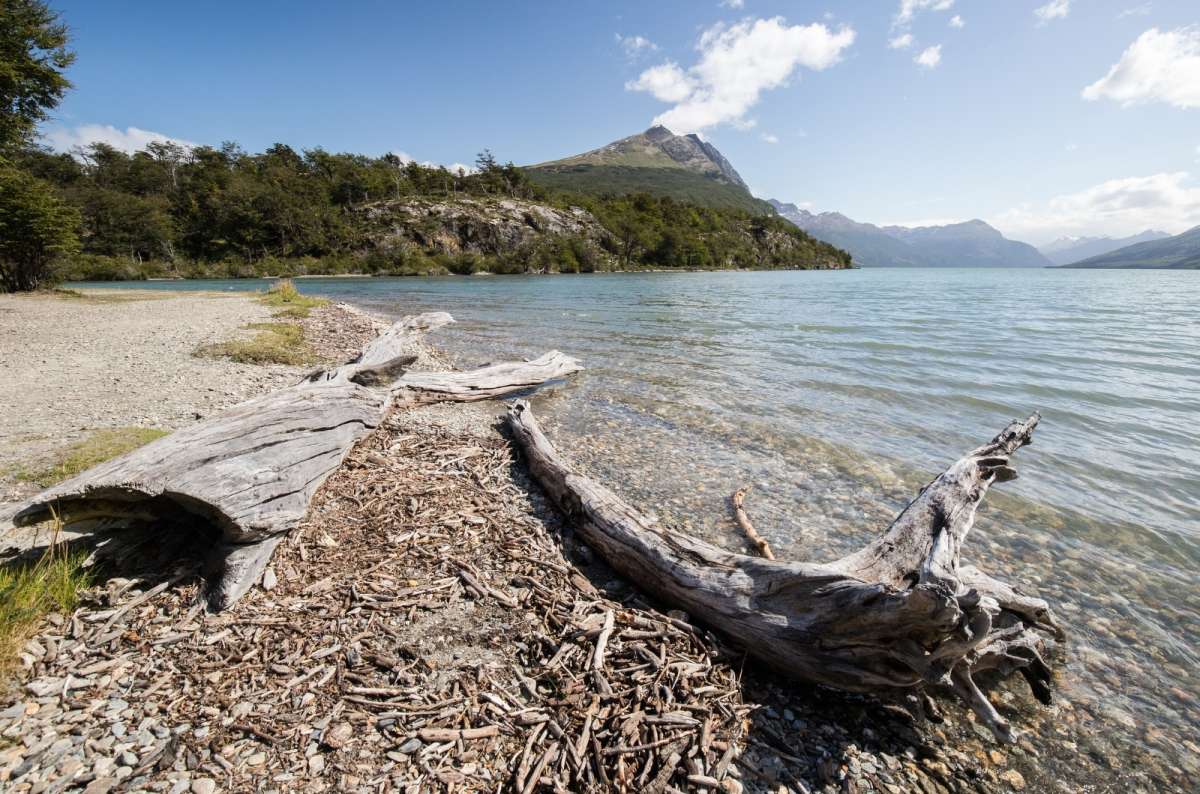
Where the Andes meet the ocean @ Tierra del Fuego National Park
Top short hikes to do:
- Senda Costera—8 km (5 miles) coastal trail with beautiful ocean views
- Lago Roca circuit—Easy loop trail by the lake, surrounded by mountains
Fun fact: The park also marks the end of Ruta 3, the world’s southernmost highway. Take a photo with the sign—you've officially made it to the bottom of the world!
Optional: Beagle Channel Sunset Cruise
If you still have some energy (and good weather), take a Beagle Channel boat cruise.
- See lighthouse at the end of the world
- Spot sea lions and cormorants
- Watch the sun dip behind the mountains—pure magic
Tours are available in the late afternoon or early evening and take about 2–3 hours.
Dinner and Relaxation
Ushuaia has surprisingly good seafood. Treat yourself to king crab (centolla)—the local specialty—or simply enjoy a hearty Patagonian lamb dinner.
Early to bed, because tomorrow is your final Patagonia adventure!
Day 14—Be Amazed by Glaciers One Last Time
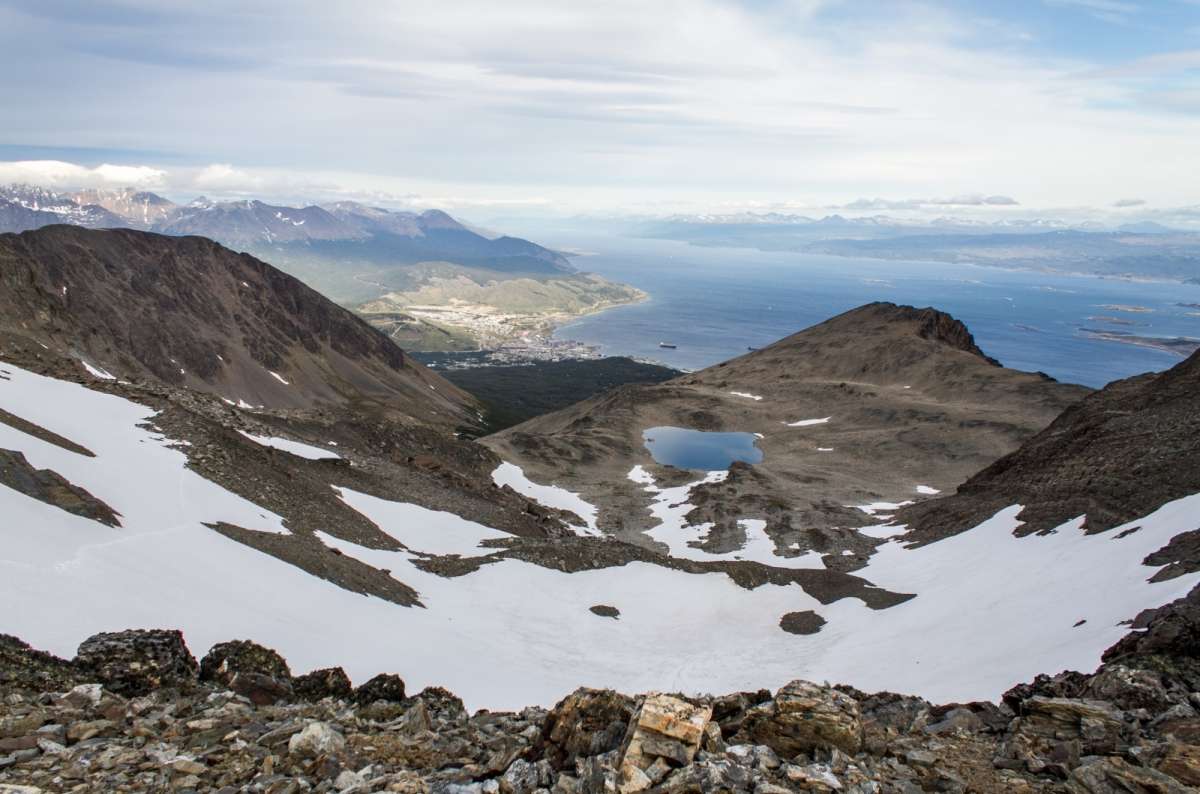
Looking down on Ushuaia from a snowy mountain trail
- Main sites visited: Glaciar Martial or boat cruise to Glaciar Vinciguerra area
Today’s your grand Patagonia finale—time to get up close with glaciers one last time before you head home.
Morning: Hike to Martial Glacier
- Driving distance: 10 minutes from Ushuaia town
- Time needed: 2–3 hours
- Difficulty: Moderate (short but steep hike)
Start from the base station and either:
- Hike up (1.5–2 hours one way)
- Or take a taxi closer up if you want to skip some elevation gain
The trail climbs quickly but rewards you with incredible panoramic views over Ushuaia, the Beagle Channel, and the surrounding mountains.
Pro Tip: Even in summer, the glacier area can be windy and cold—bring a jacket.
Afternoon: Boat Excursion to Glaciers
Book a half-day boat trip from Ushuaia’s port toward the Vinciguerra Glacier region.
- Cruise past floating icebergs
- Get amazing photo ops from the deck
- Some tours include short zodiac rides close to the glacier fronts
A relaxed but epic ending to your time at the bottom of the world.
Evening: Prepare for Departure
Depending on your flight schedule, use the evening to relax, grab your last Patagonian dinner, and say goodbye to the land of glaciers, winds, and mountains.
If you are able to, I recommend flying to Buenos Aires in the evening, checking into the hotel, and taking some time to sightsee in the city.
Congratulations—you just completed one of the greatest 2-week Argentina road trips in the world!
Day 15—A Quick Walk Through Buenos Aires
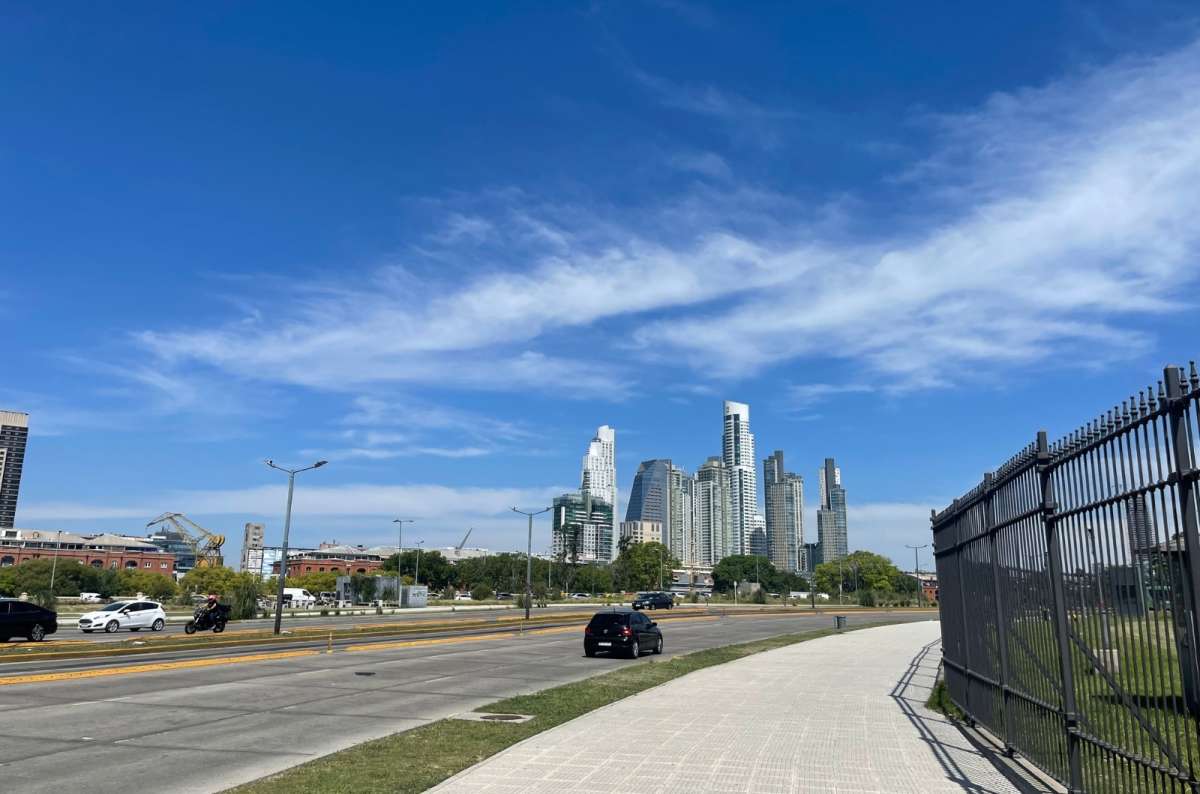
Buenos Aires
- Main sites visited: Palacio Barolo, Catedral Primada, Plaza de Mayo, Casa Rosada, Costanera Sur Ecological Reserve, Obelisco, Teatro Colón
- Hotel recommendation: Palladio Hotel Buenos Aires—MGallery
- Further reading: Buenos Aires 1-day itinerary
Let’s dive straight in—and as you’ve come to expect from me—candidly: Buenos Aires is good, not spectacular.
One day is enough. Two if you really have nowhere else to be or have a lot of spare time on your trip.
Start your day with a walk to Palacio Barolo—a neo-Gothic office building that’s fine, not mind-blowing. Then head to the Catedral Primada and Plaza de Mayo to tick off the historic must-sees.
You'll also glimpse Casa Rosada, famous more for Madonna in Evita than anything else.
Then, escape the city center and breathe at Costanera Sur Ecological Reserve. It's green, full of birds, and sketchy around the edges—just how South American city parks like it.
On your way back, swing by the Obelisco—a giant pillar you can’t enter—and Teatro Colón, genuinely one of the top opera houses in the world (says National Geographic, not just me).
Where to eat in Buenos Aires
Food’s a gamble, but Cucina D’Onore (Italian) near the port or D’oro Italian Bar are decent bets. (Yes, Italian food in Argentina. Don’t fight it.)
Congratulations—you just completed one of the greatest 2-week road trips in the world!
Alternative shortcuts for this itinerary
Quick alternatives if someone can't do 2 full weeks in Argentina:
- If you have 10 days: cut Iguazu or Jujuy.
- If you have 7 days: do only Patagonia (Calafate + Chaltén + Ushuaia).

Packing tips for Argentina (mini version)
A short checklist or mini guide on what NOT to forget—especially useful for Patagonia + Salta/Jujuy.
Key things travelers need but tend to forget:
- Windproof jacket (Patagonia winds are brutal)
- Sunscreen (even in cold weather)
- Binoculars (for Calilegua, Salta, Tierra del Fuego)
- Cash-friendly small backpack (for all the pesos!)
- Microspikes (if visiting Perito Moreno off-season)
- Swimsuit (for spa days and hot springs if included)
How to Get Around Argentina: Flights, Cars & Tips
-
You will fly. A lot. Argentina is enormous—covering this itinerary without flights would eat up half your trip. You’ll need at least 4 domestic flights.
-
Domestic flights are decently priced… if you book early. Aerolíneas Argentinas is the main player. Buy tickets 1–2 months in advance. Most routes connect through Buenos Aires—prefer Aeroparque (AEP) over Ezeiza (EZE) for domestic travel.
-
Renting a car in Salta is mandatory. Public transport in the north is slow, unreliable, and doesn’t go where you need. Local rental companies usually offer better deals than the big names.
-
You can do Patagonia without a car, but... You can either take shuttle buses and join tours, or rent a car for full flexibility (recommended for this itinerary). Roads are excellent, parking is easy, and small cars are all you need. Book a car 2+ months in advance.
-
Road quality is inconsistent. Salta’s highways are decent, but rural roads can mean gravel, potholes, and the occasional surprise. Always drive with headlights on—it’s legally required.
-
Airports are slow. Delays are common. Get there early, double-check your gate, and expect some waiting around.
-
Skip self-driving to Brazil at Iguazú. It’s technically possible, but not worth the paperwork or rental car headaches. Use a taxi with cross-border clearance.
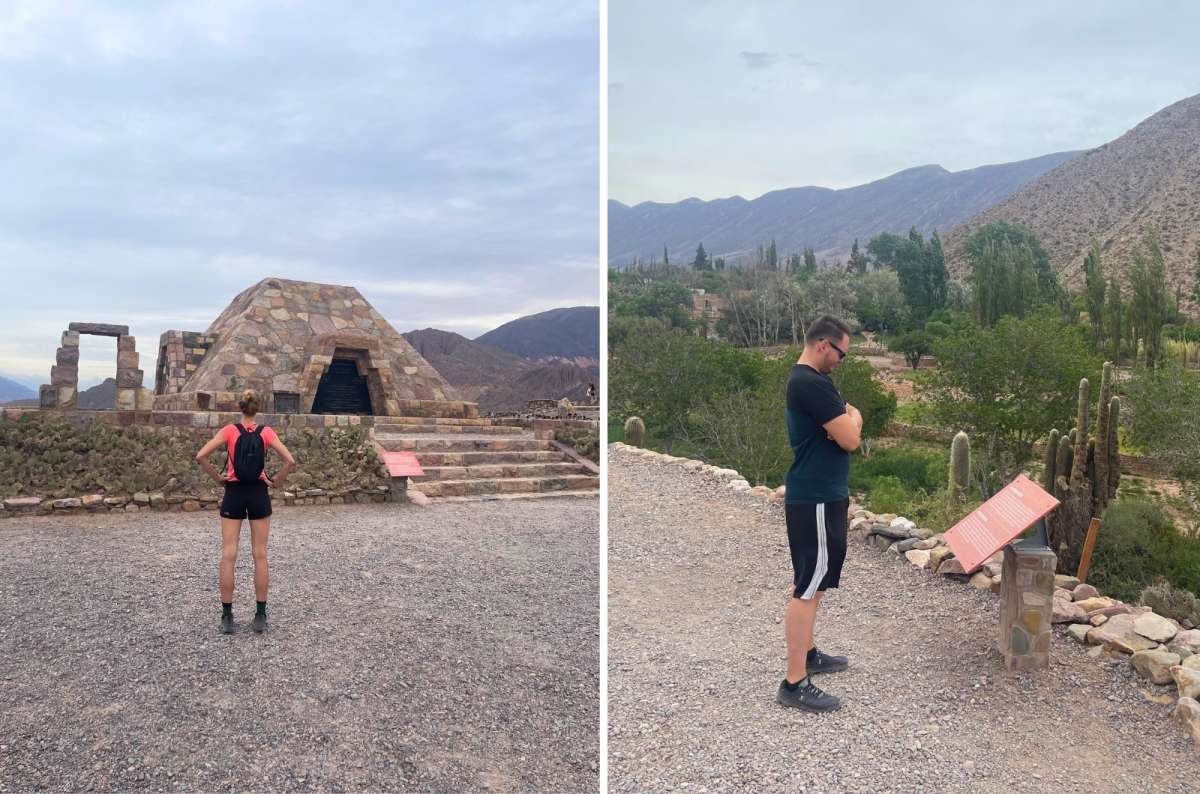
You can’t see all of Argentina in two weeks, but we know we’ll be back for more
FAQ1: How many days do you need for Argentina?
You will need at least 2 weeks in Argentina and, if you want to see it all, more like a month. I had 2 weeks because I knew I am going to visit Argentina at least twice. Otherwise, I would have opted for 4 weeks.
FAQ2: Do I need a 4x4 car for this itinerary?
Yes, you need a 4x4 in Salta, everywhere else you can go for the smaller more compact cars without 4x4 . It might come in handy in Patagonia, but it's not necessary.
FAQ3: Is Argentina safe for self-driving?
Argentina felt safe to me. But be aware that in more populated areas there might be police stops, and that Argentinian police is not always on the side of the law. Another minor issue might be driving distance as the country is massive—sometimes you are going to drive for 2 hours straight without seeing another soul. So, fuel up and have a spare tire ready.
FAQ4: How much cash should I carry for 2 weeks?
I recommend always carrying at least USD 1000—exchanged into pesos. You can mostly pay by card, but not always, so it is better to be prepared.
FAQ5: What’s the best time of year to do this itinerary?
Easily November to April—I suggest going to Argentina in November or March, as the weather won't be harsh in any extreme of traveled latitude and it's also kind of shoulder season so you won't overpay for hotels.
Sometimes, all you need to do is take the first step... I've filtered out the best hotels in Salta for you
Save it for yourself to come back to later, or share with your friends on social media!
You might also be interested in reading:
Patagonia Travel Guide: 7 Days of Exploring El Chaltén and El Calafate
How to plan a trip to Iguazu Falls (3-day plan)
12 epic day hikes in Argentina of all difficulty levels
27 fun facts and travel tips for Argentina
This post contains affiliate links. If you make a booking through one of my links, I may earn a small commission—at no additional cost to you. Thank you for your support!




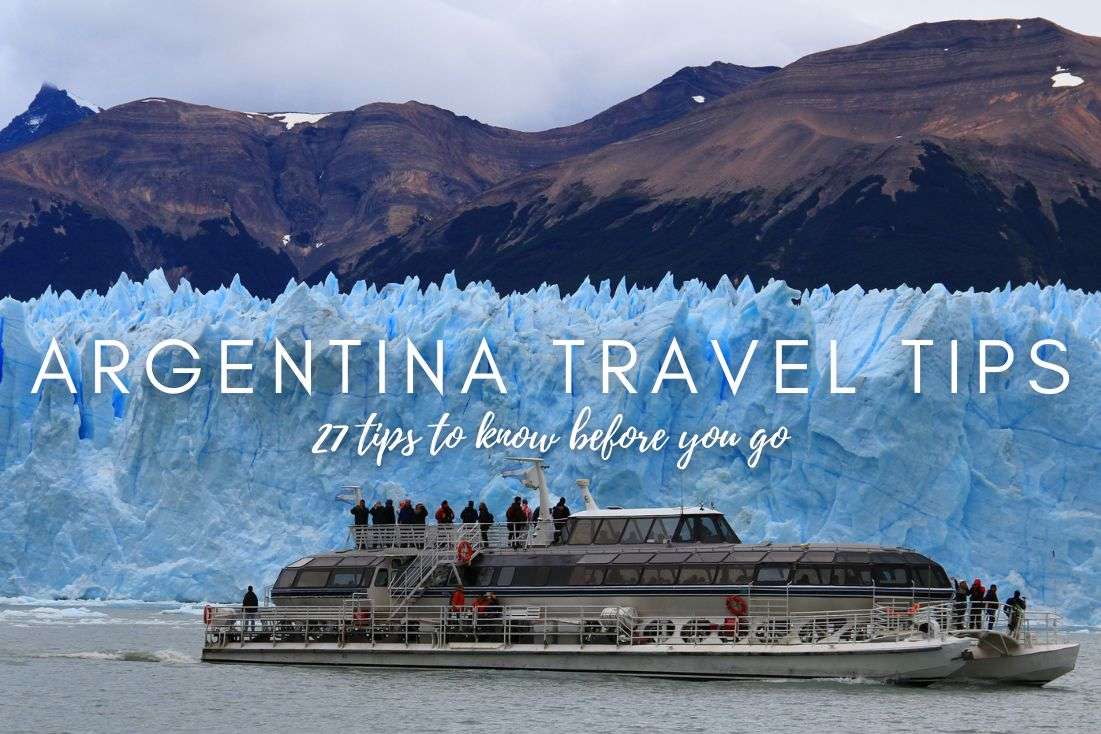
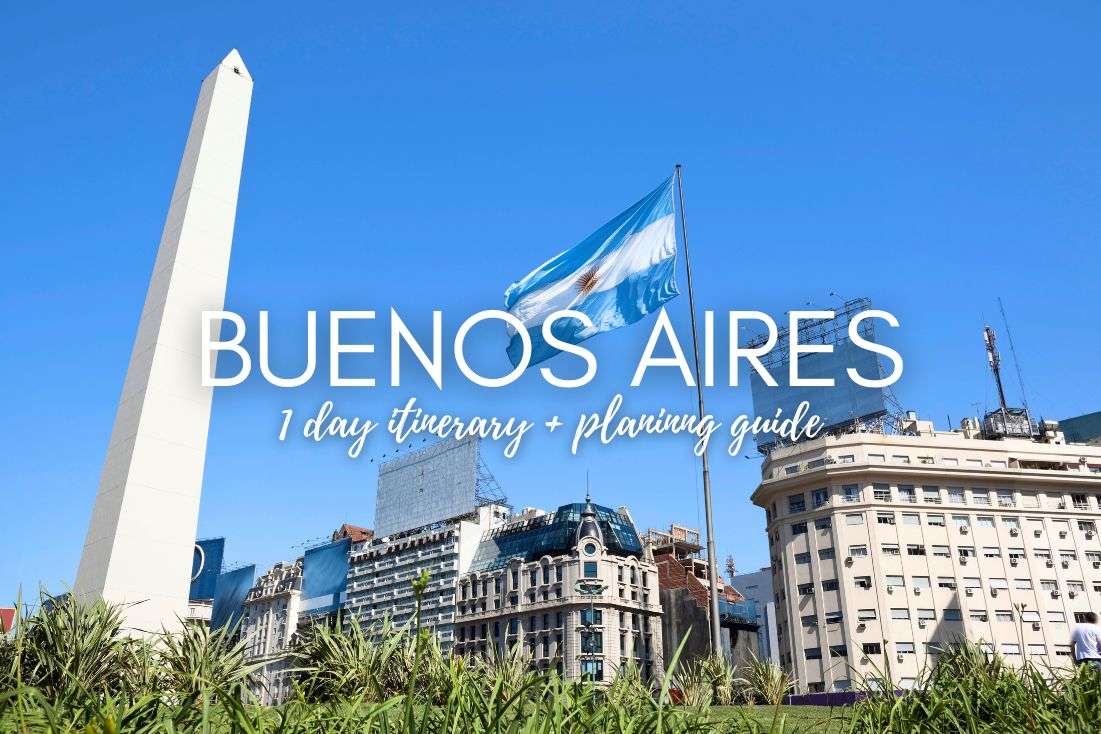
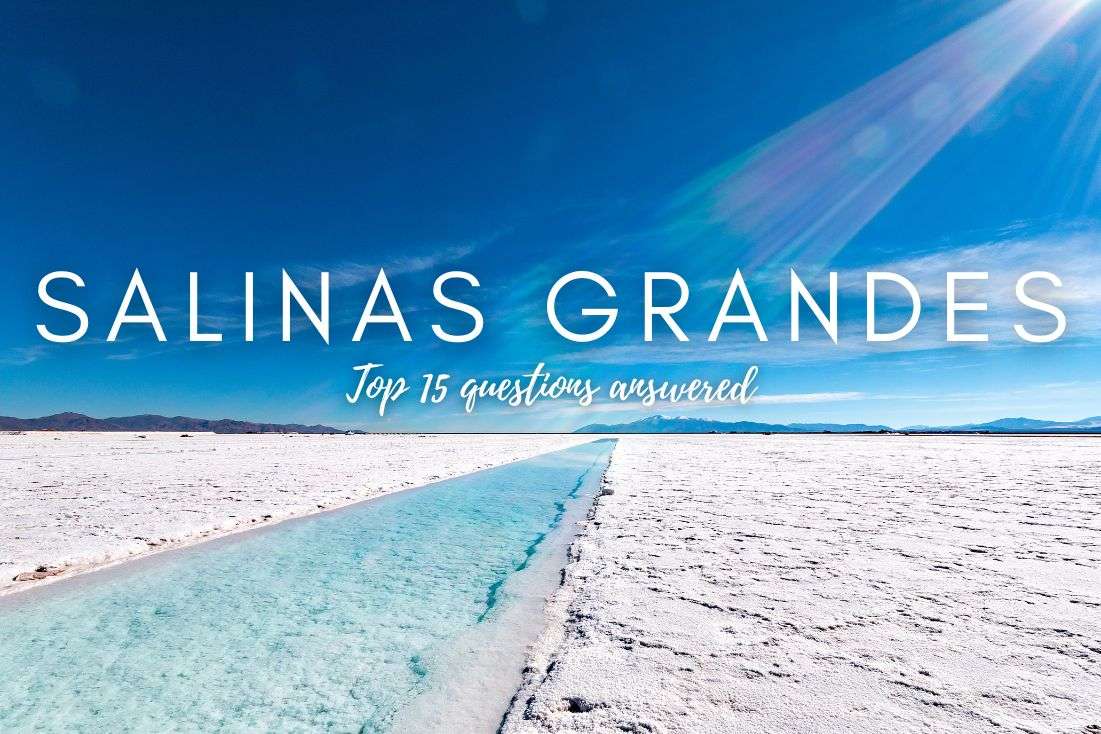



Comments | Thoughts? Give us a shout!